Experience the future of mobility with Rabdan MUSE by NWTN - an intelligent, passenger-centric EV redefining luxury and sustainability.
The post Rabdan MUSE – NWTN’s Next-Gen EV: Redefining Luxury first appeared on Trendy Gadget.
Experience the future of mobility with Rabdan MUSE by NWTN - an intelligent, passenger-centric EV redefining luxury and sustainability.
The post Rabdan MUSE – NWTN’s Next-Gen EV: Redefining Luxury first appeared on Trendy Gadget.
China's premium EV brand, HiPhi, unveils the HiPhi Y mid-size SUV, featuring cutting-edge technology, luxurious design, and exceptional performance.
The post HiPhi Y: China’s Premium EV Brand Launches Mid-Size SUV first appeared on Trendy Gadget.
Urban commuting is gradually transitioning to compact vehicles that can take on the tight turns and curves of a crowded city. A better alternative to two-wheelers and trikes, a quadricycle has reassured balance, better safety, and is suited for the varying requirements of demanding users.
A couple of years ago, FIAT launched the electric Citroën Ami which is a pint-sized EV designed for Gen-Z. Now the Italian auto manufacturer has engineered the Topolino inspired by the two-door FIAT 500. The subcompact car is slated to hit the market in the first half of next year in peppy colors, and that’s an interesting development.
Designer: FIAT
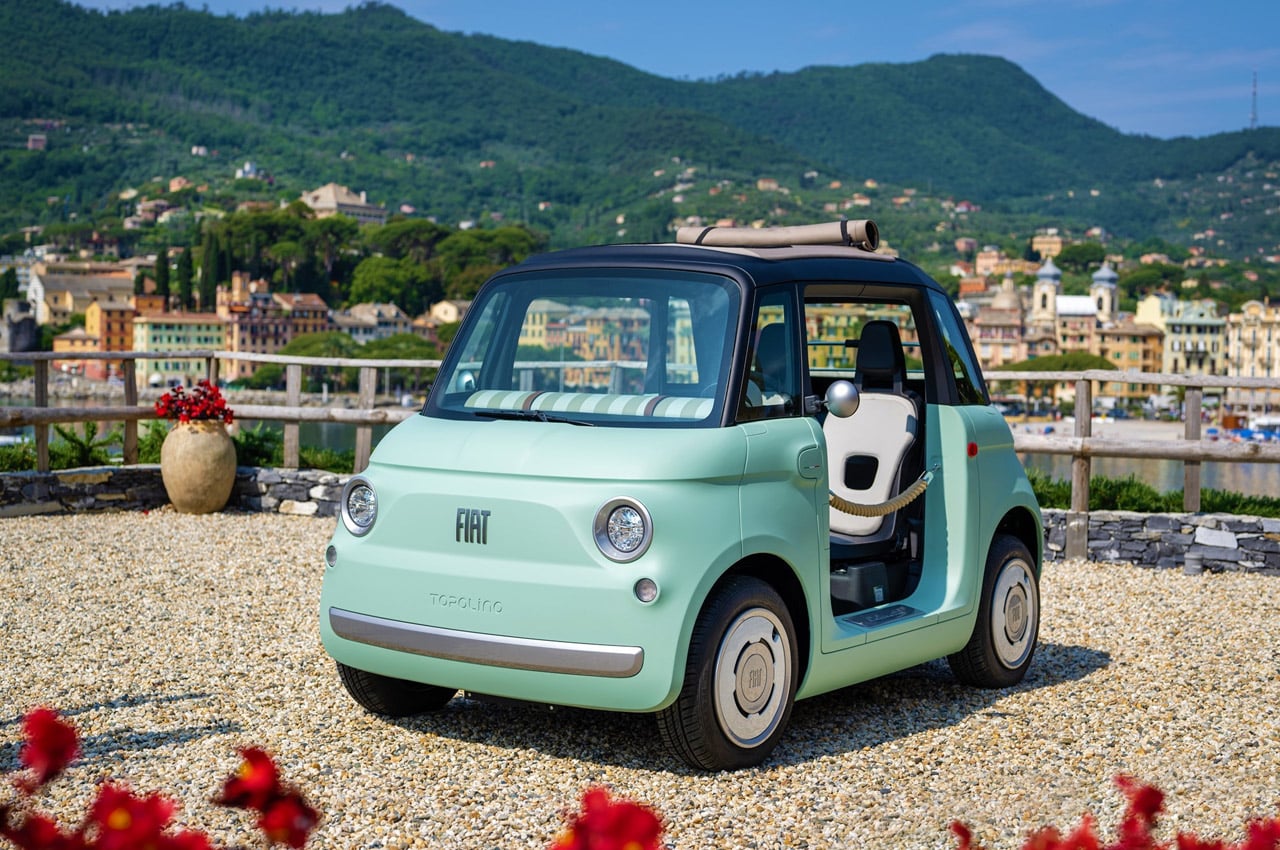
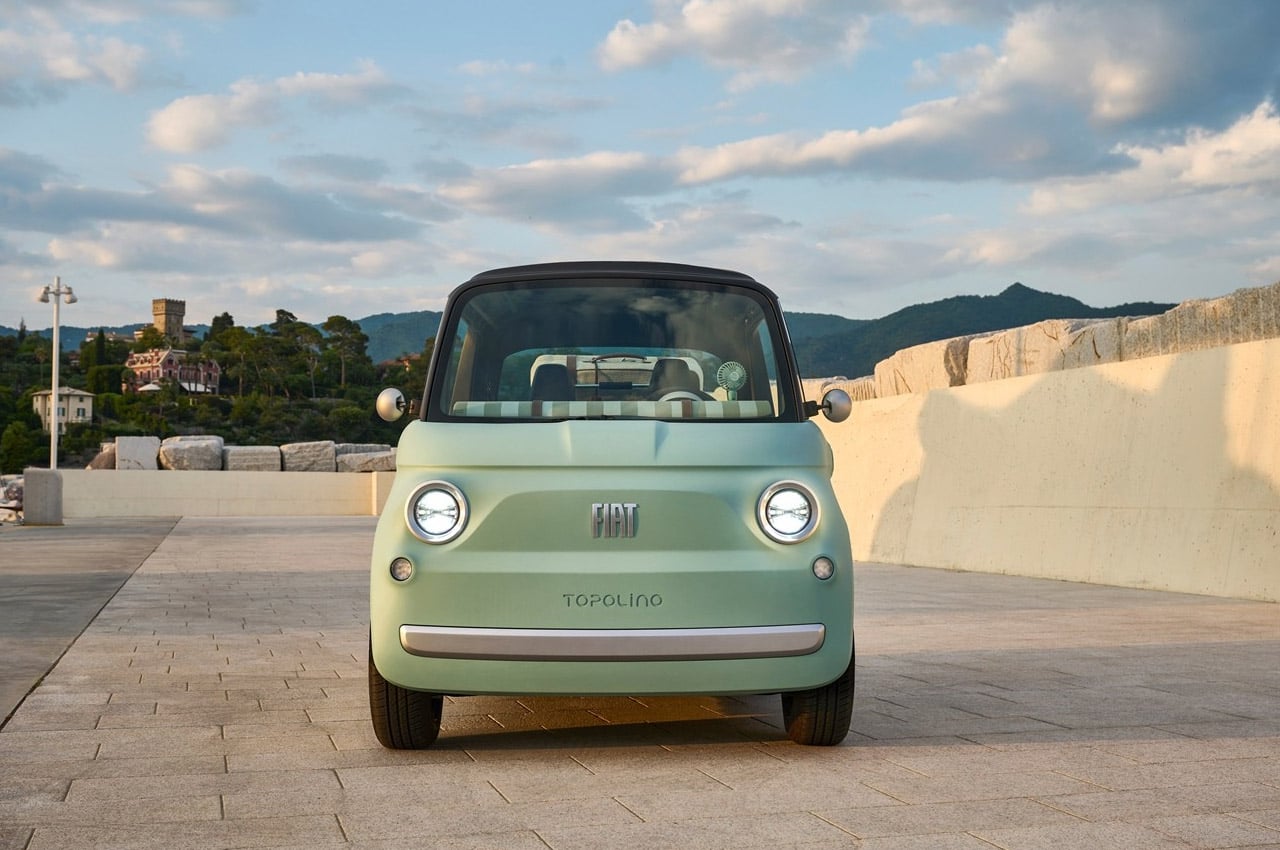
Measuring just 2.53 meters the all-electric city EV has a 7.2-meter turning radius for shimming around tight spaces where standard vehicles get stuck. Topolino gets the 6kW electric motor which should be ample for slow city riding. Given the small size, there’s a 5.5kWh battery which only churns out a promised range of 47 miles and a top speed of 28mph. That should be more than enough for short-range mobility in urban areas.
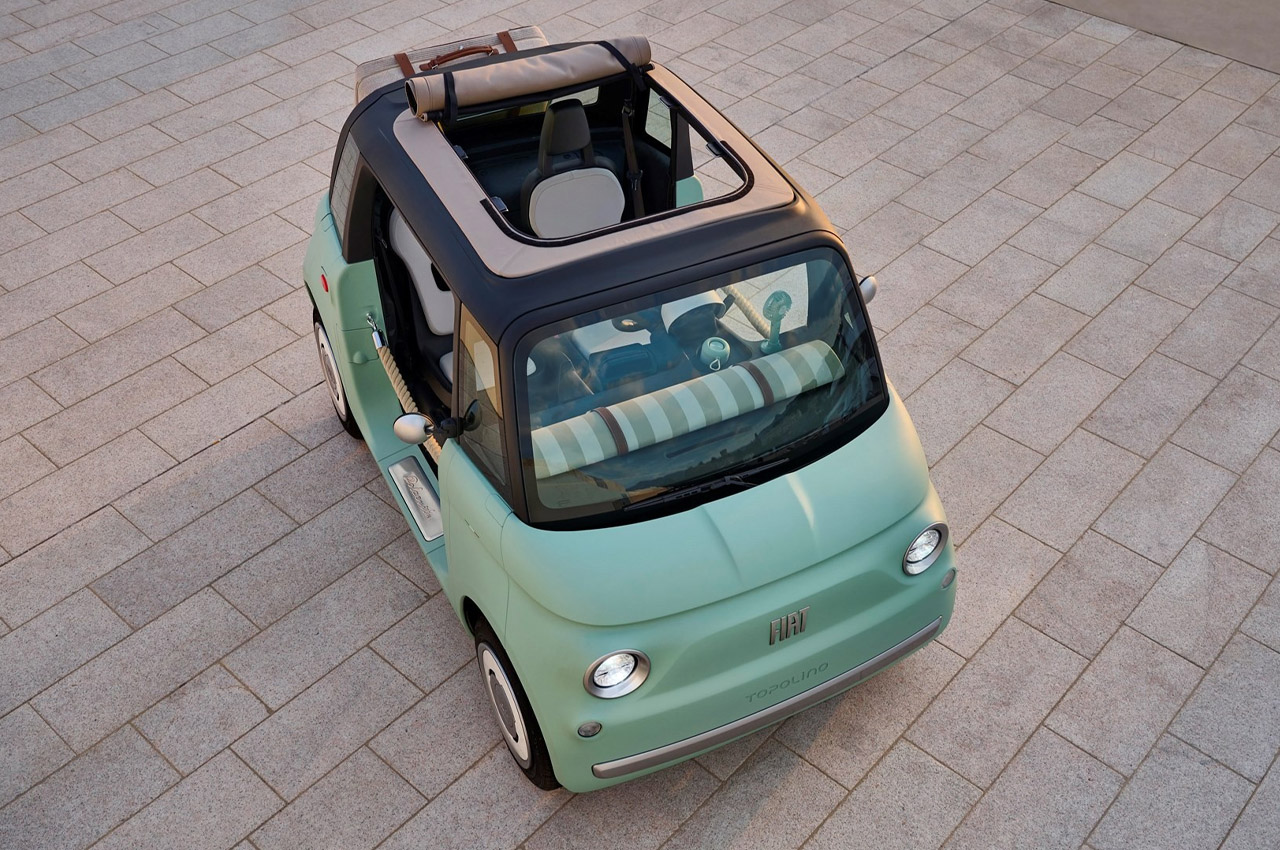
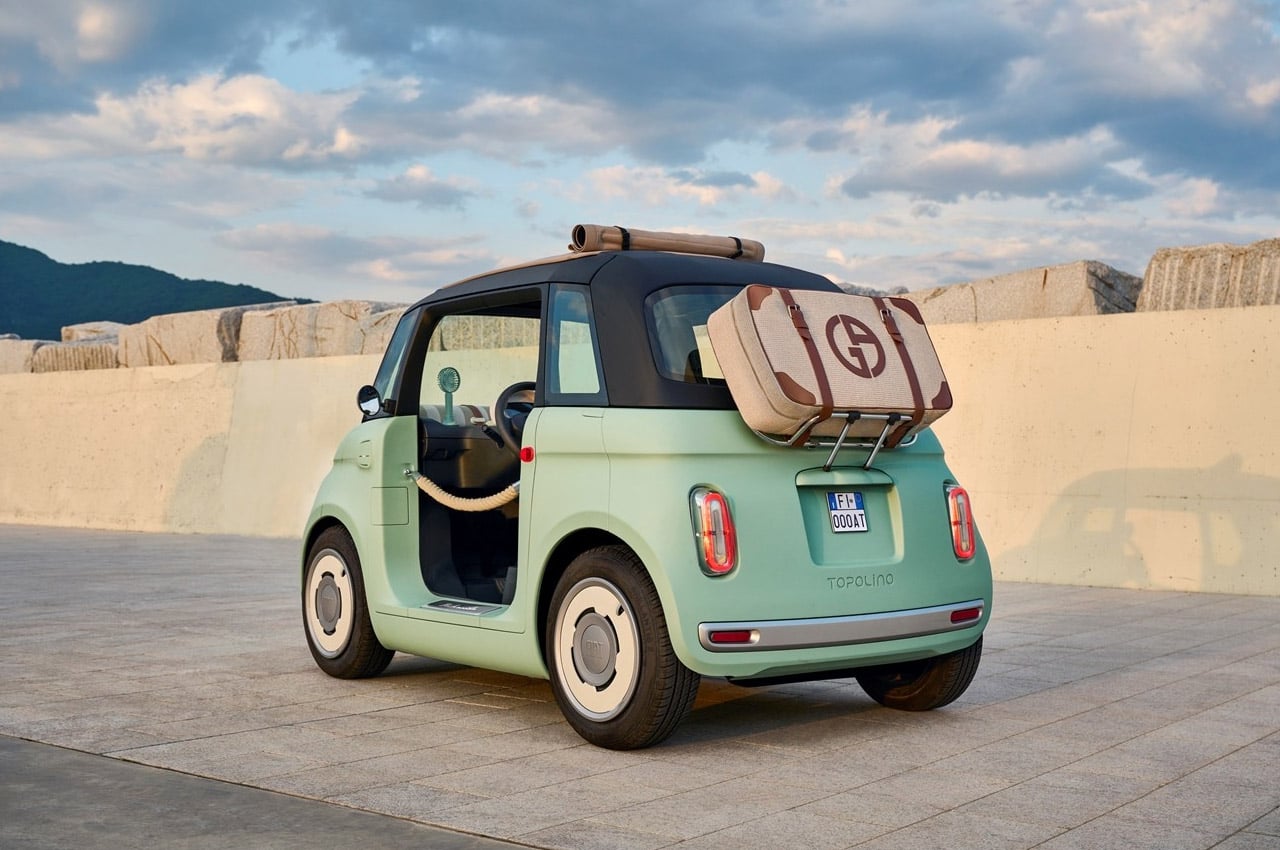
FIAT will bring the EV in two variants: a closed-doored and hard-topped version and an open doorless soft-topped variant dubbed Topolino Doce Vita. These two variants will have the same color options, 14-inch wheels and two-seat interiors. The only difference is, the closed version has a sunblind roof and wooden finish stickers on doors. The open version for tropical regions gets door sills, door rope and striped stickers.
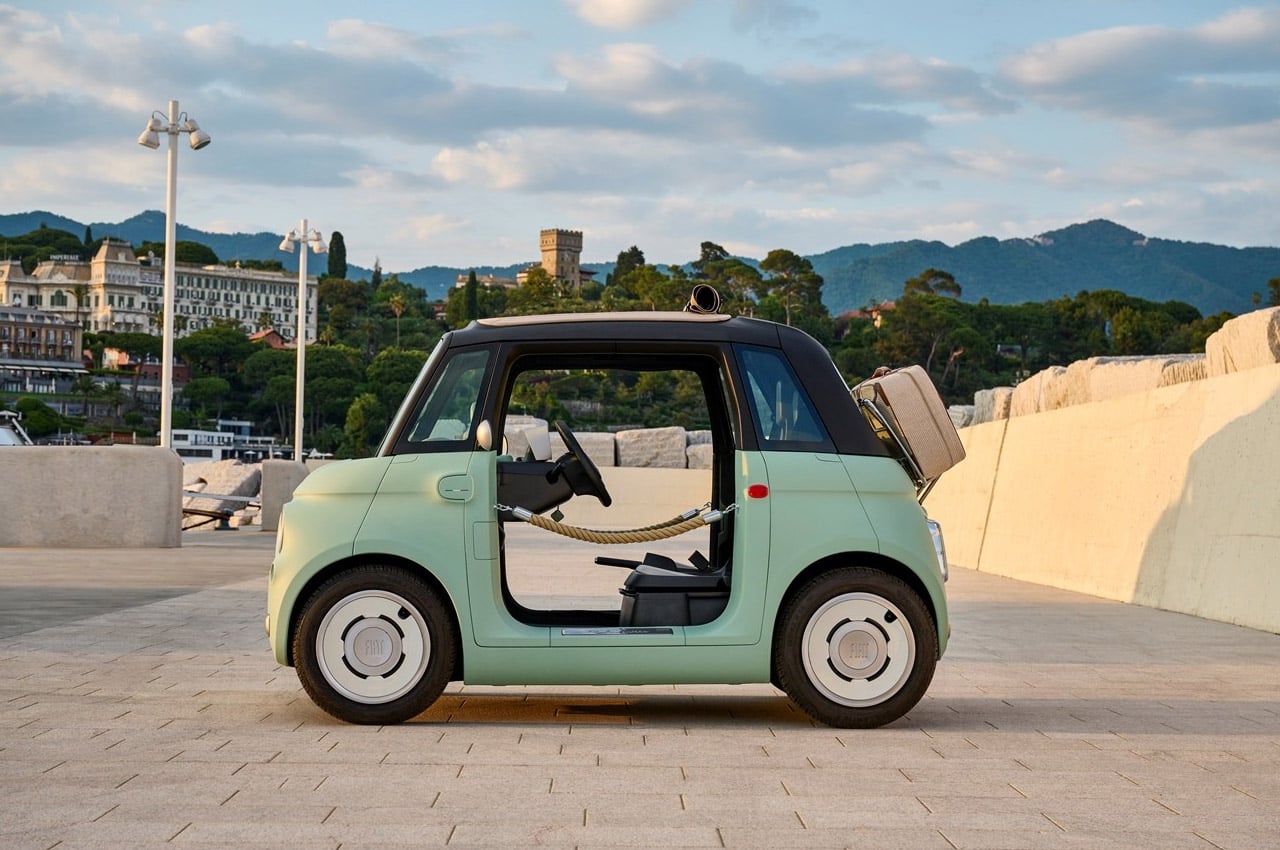
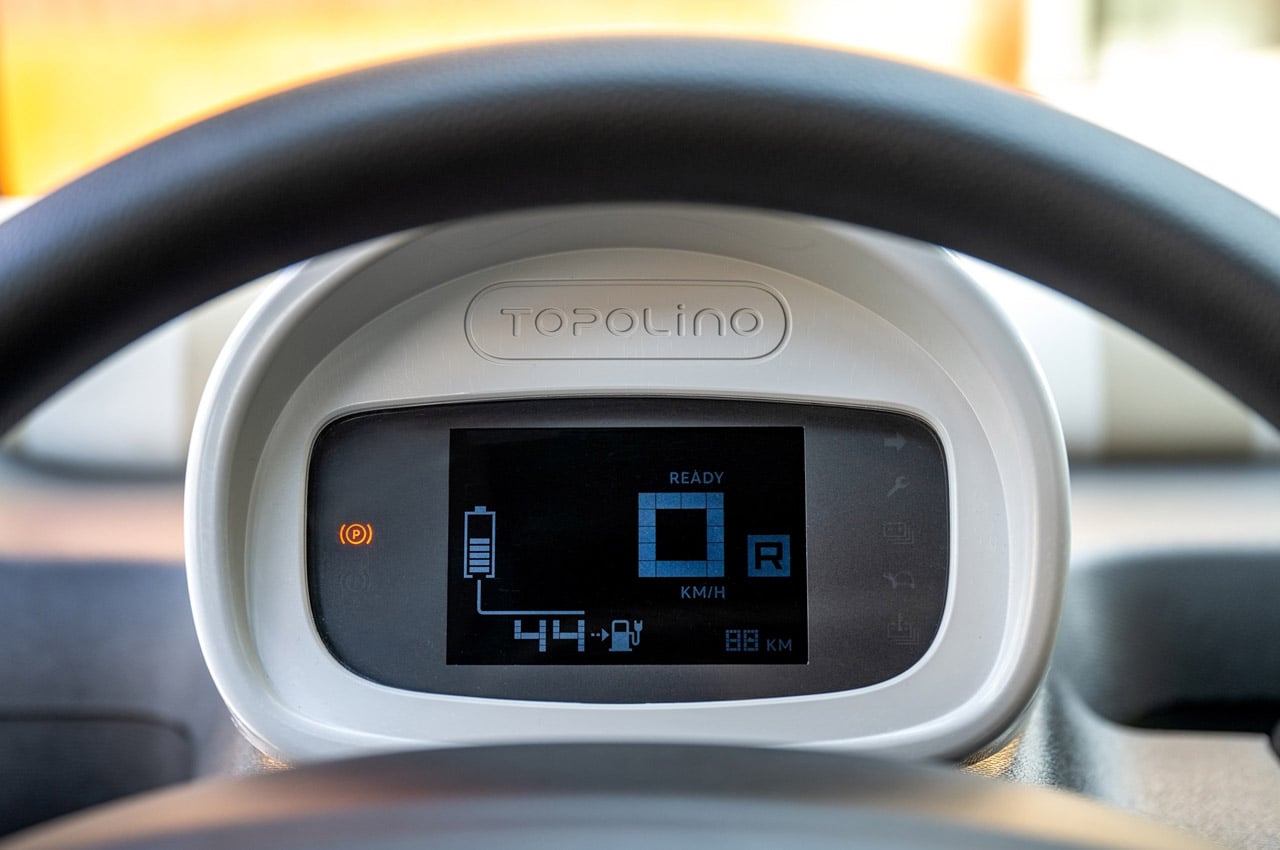
Along with these base features, the Topolino will have optional accessories including a luggage bag (stored between driver and passenger), USB fan, Bluetooth speaker, thermal water bottle, rear luggage rack and seat covers that double as beach towels. In total there’s going to be 63 liters of interior storage space to haul other vital gear. No wonder FIAT tactically refrains from calling this EV a car, and labels it as an electric mobility device.
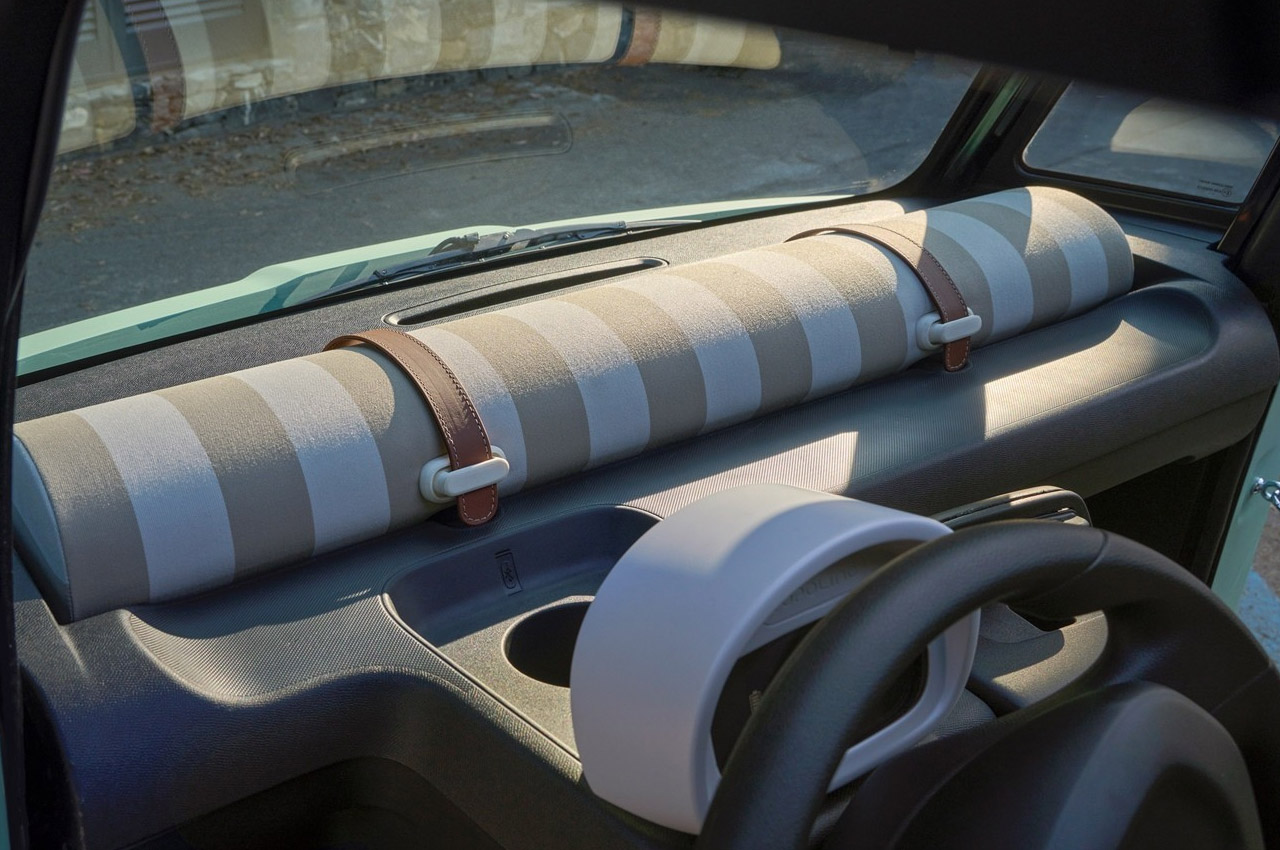
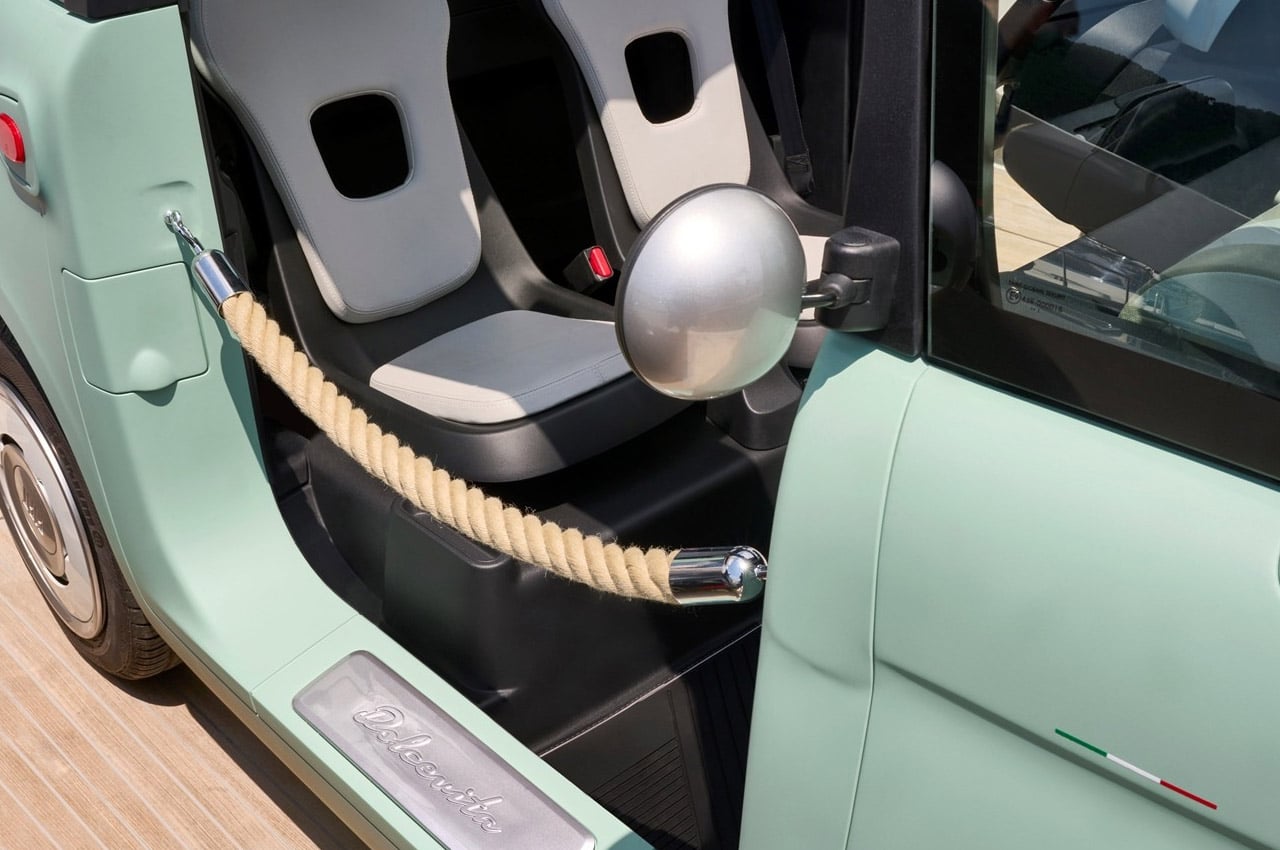
The compact EV will come at a list price of €9,890 (approximately $10,700) which is more expensive than the Ami. FIAT will position the Topolino as a more premium option and time will tell if it delivers on the promise of reliable city commuting.
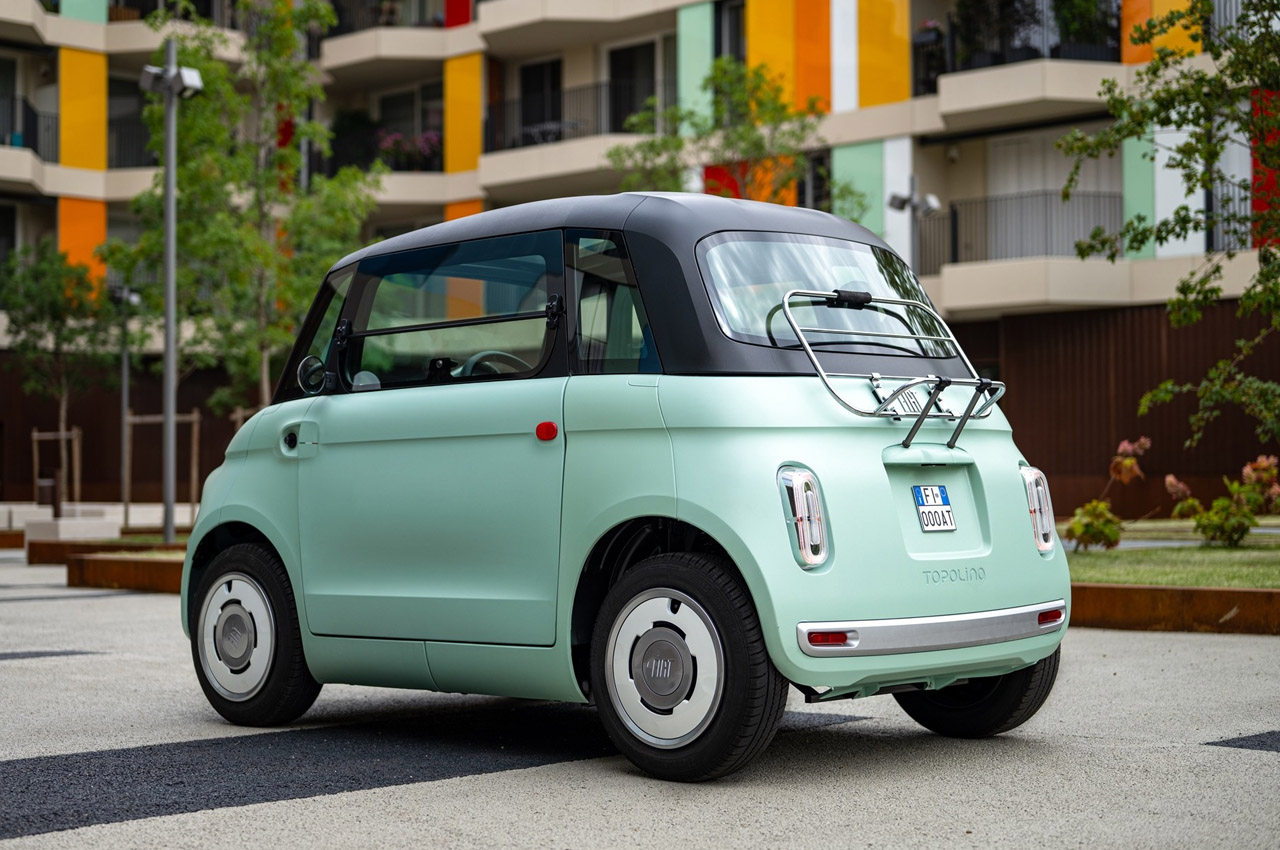
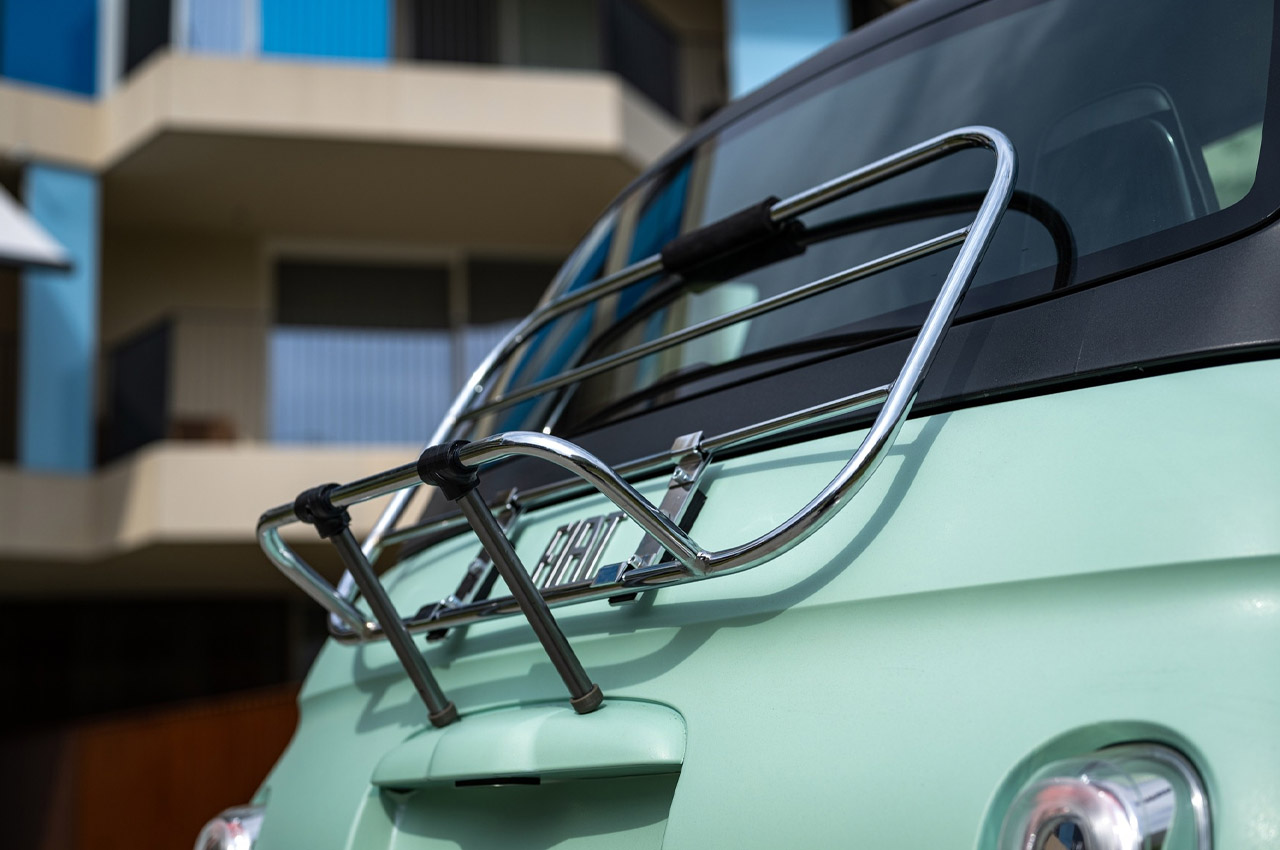
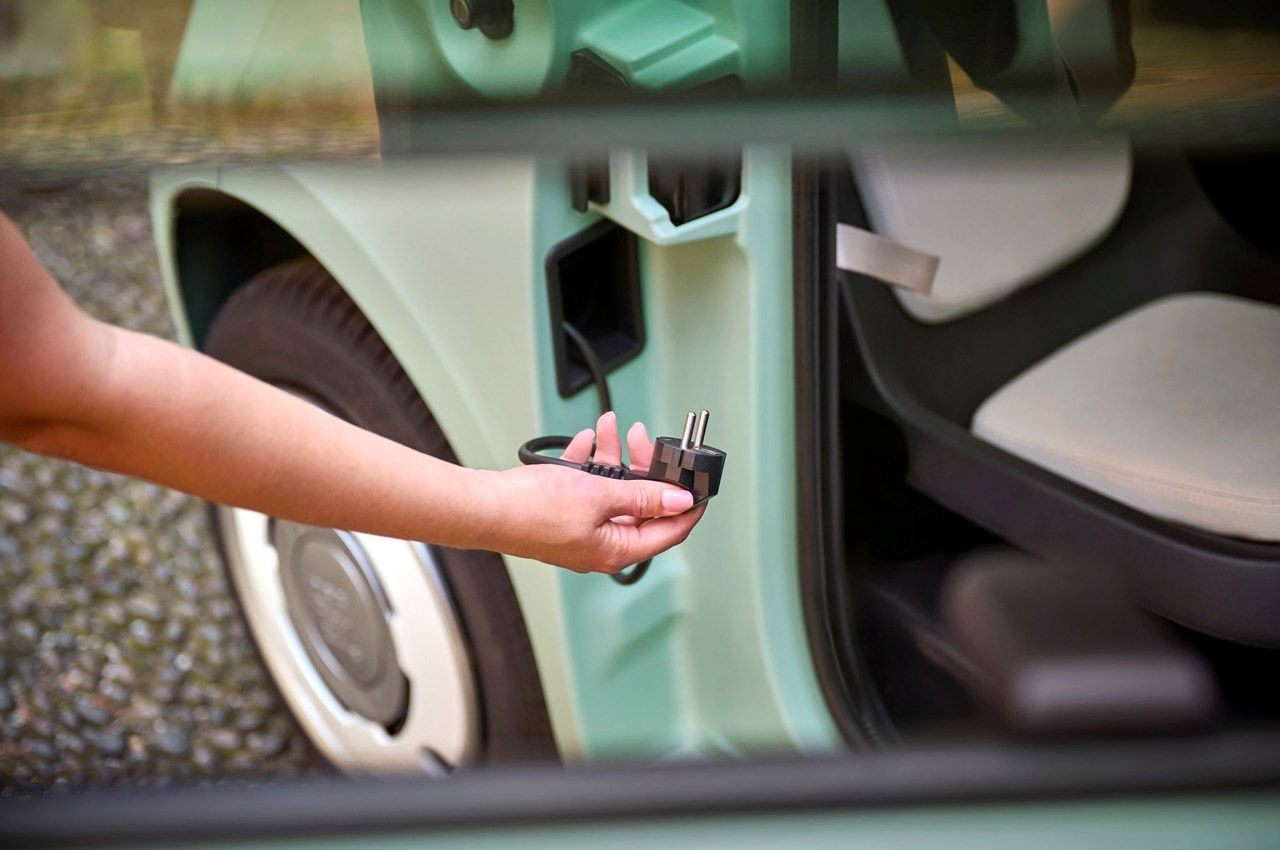
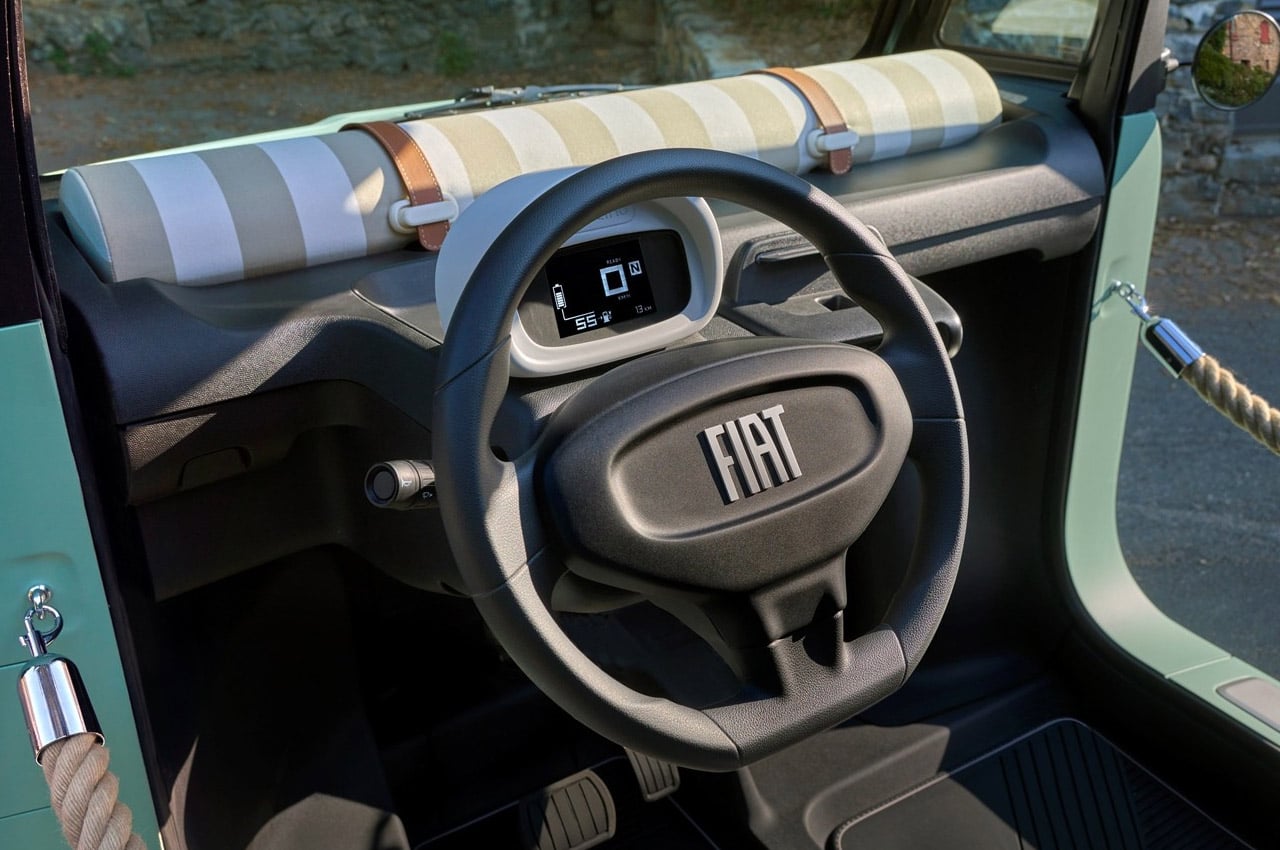
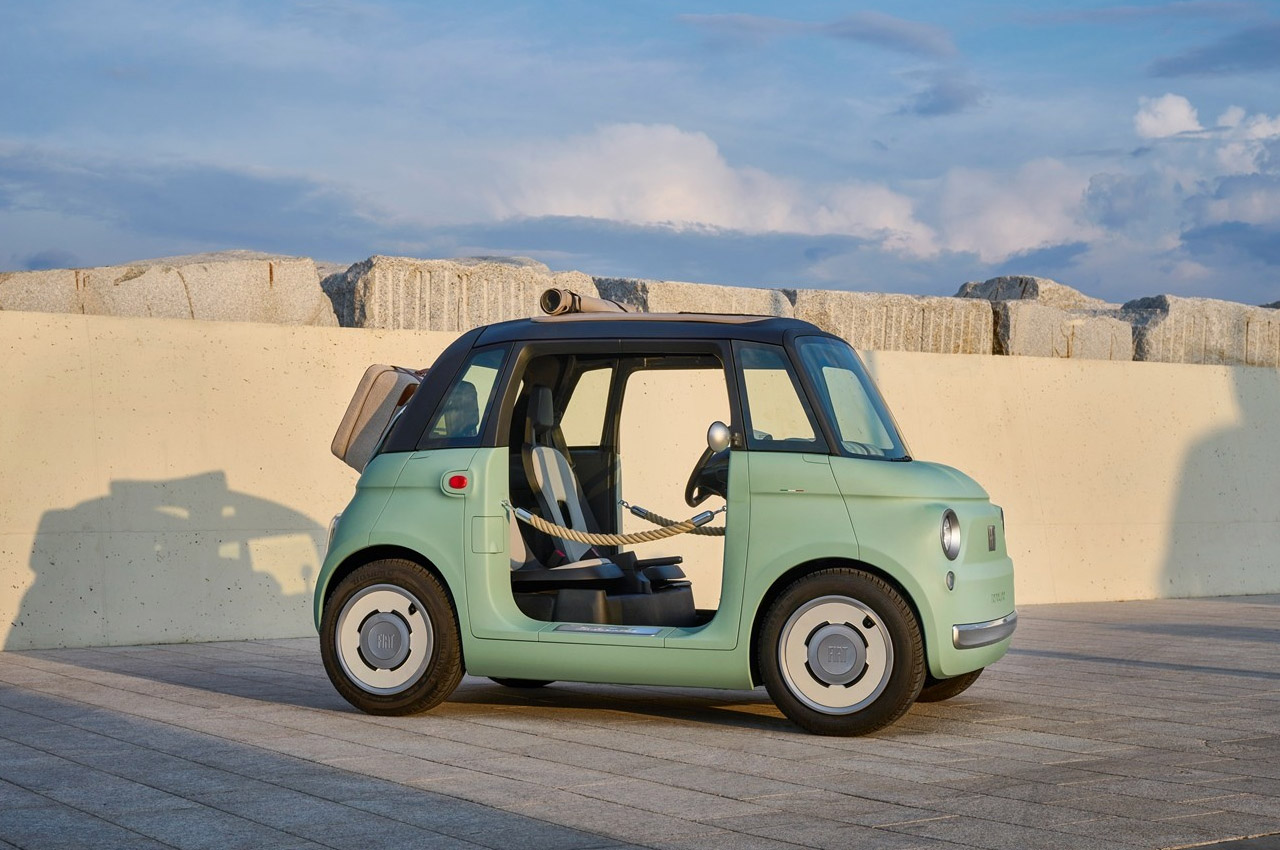
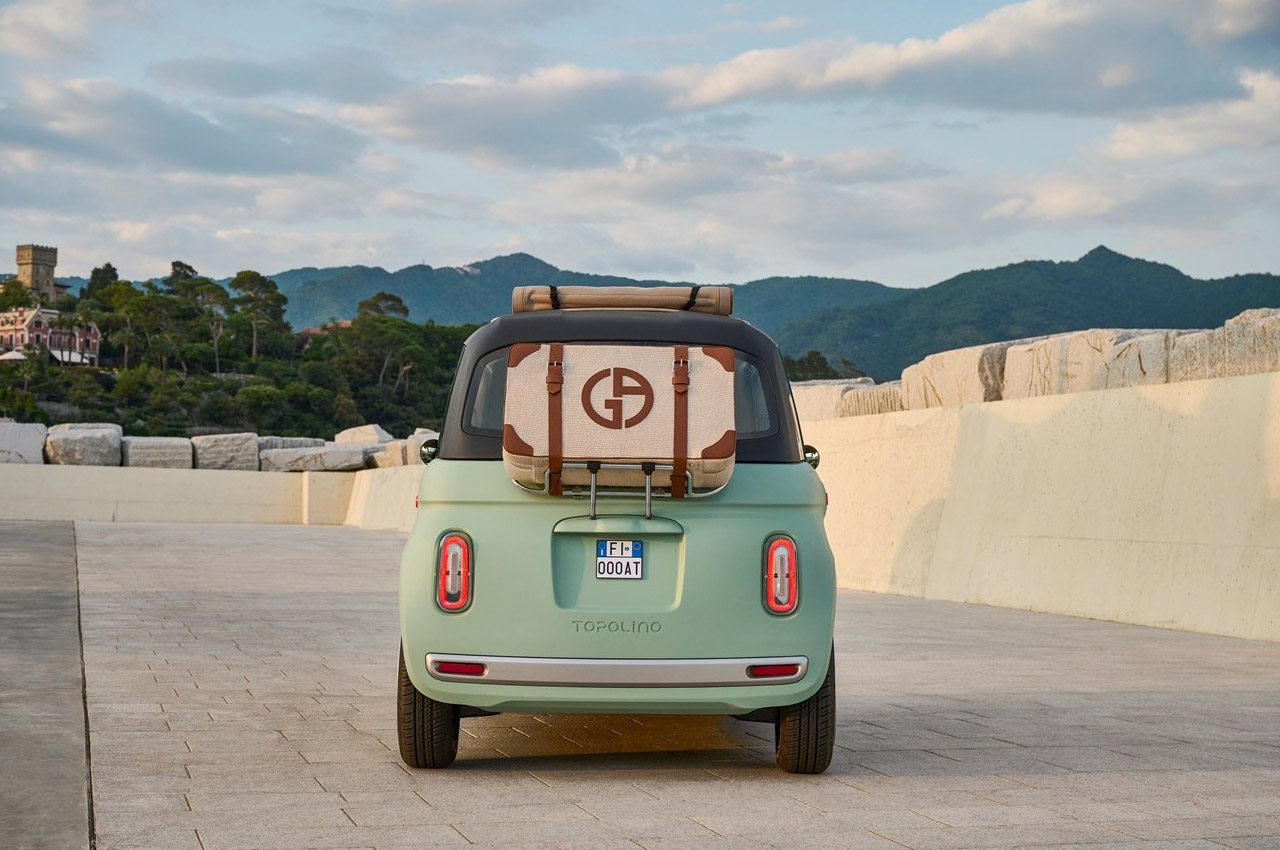
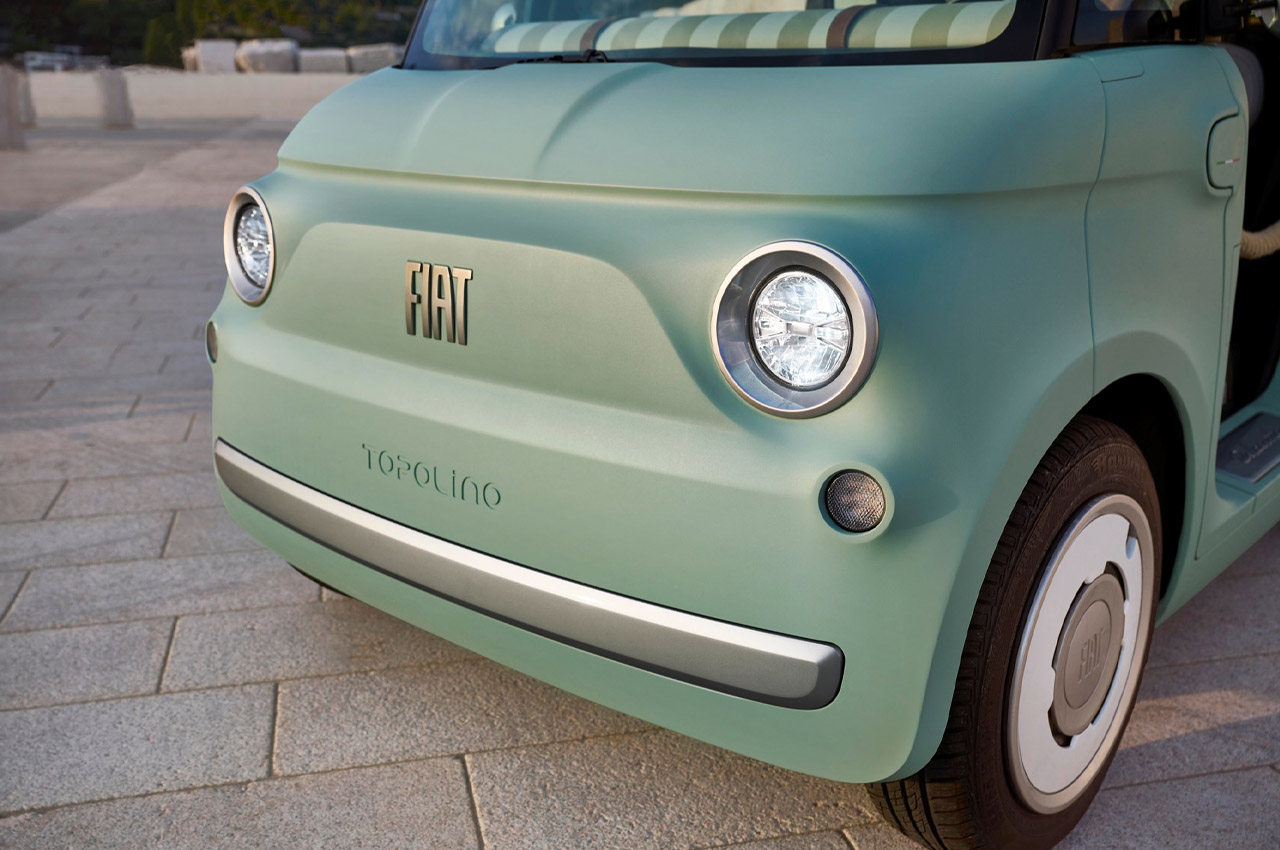
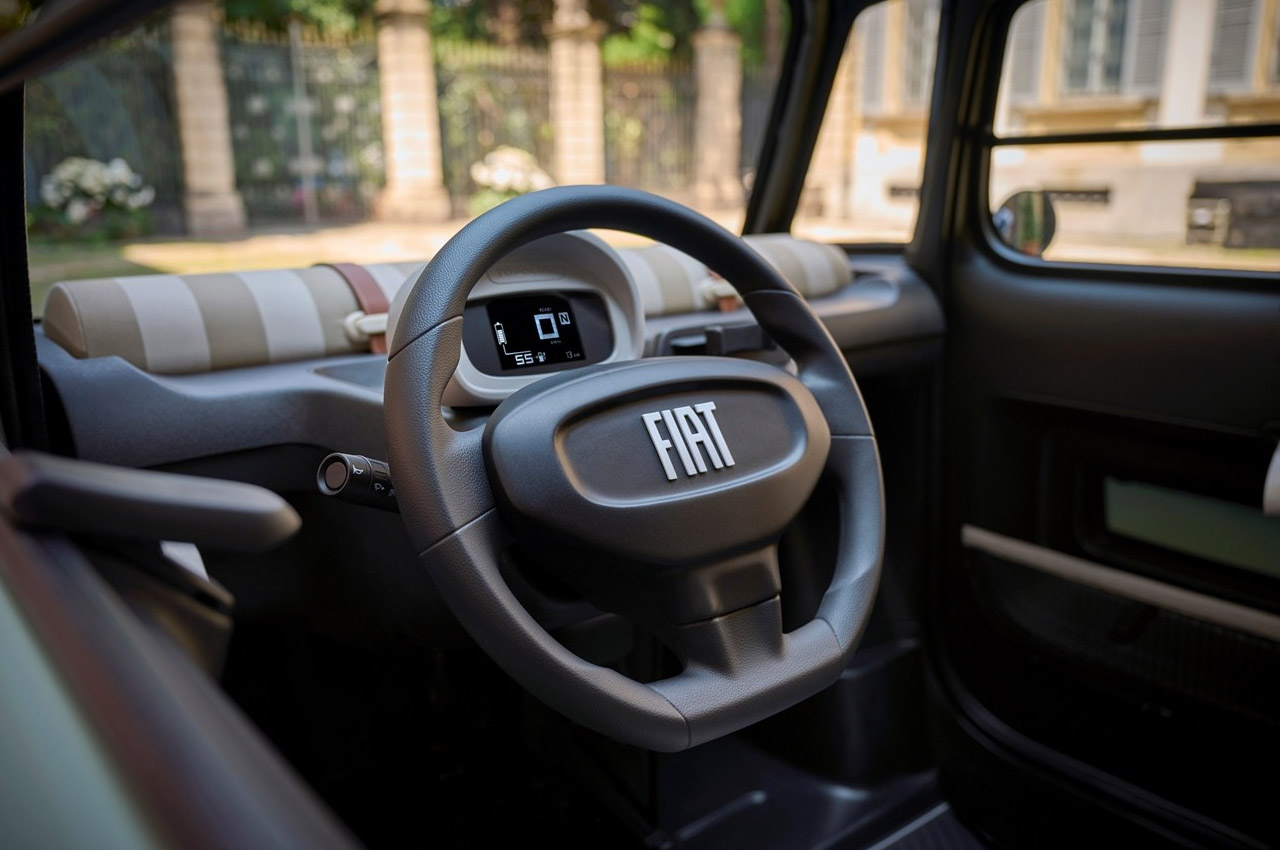
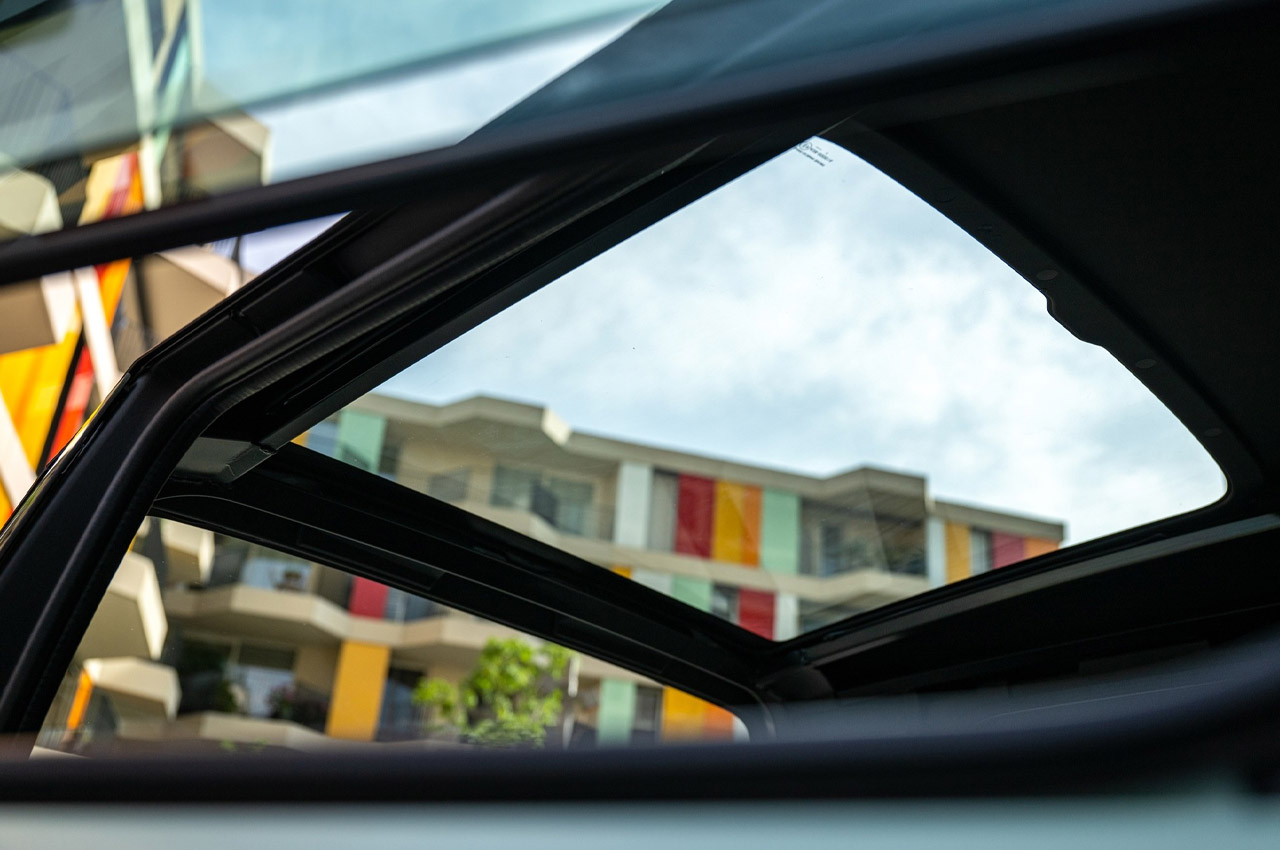
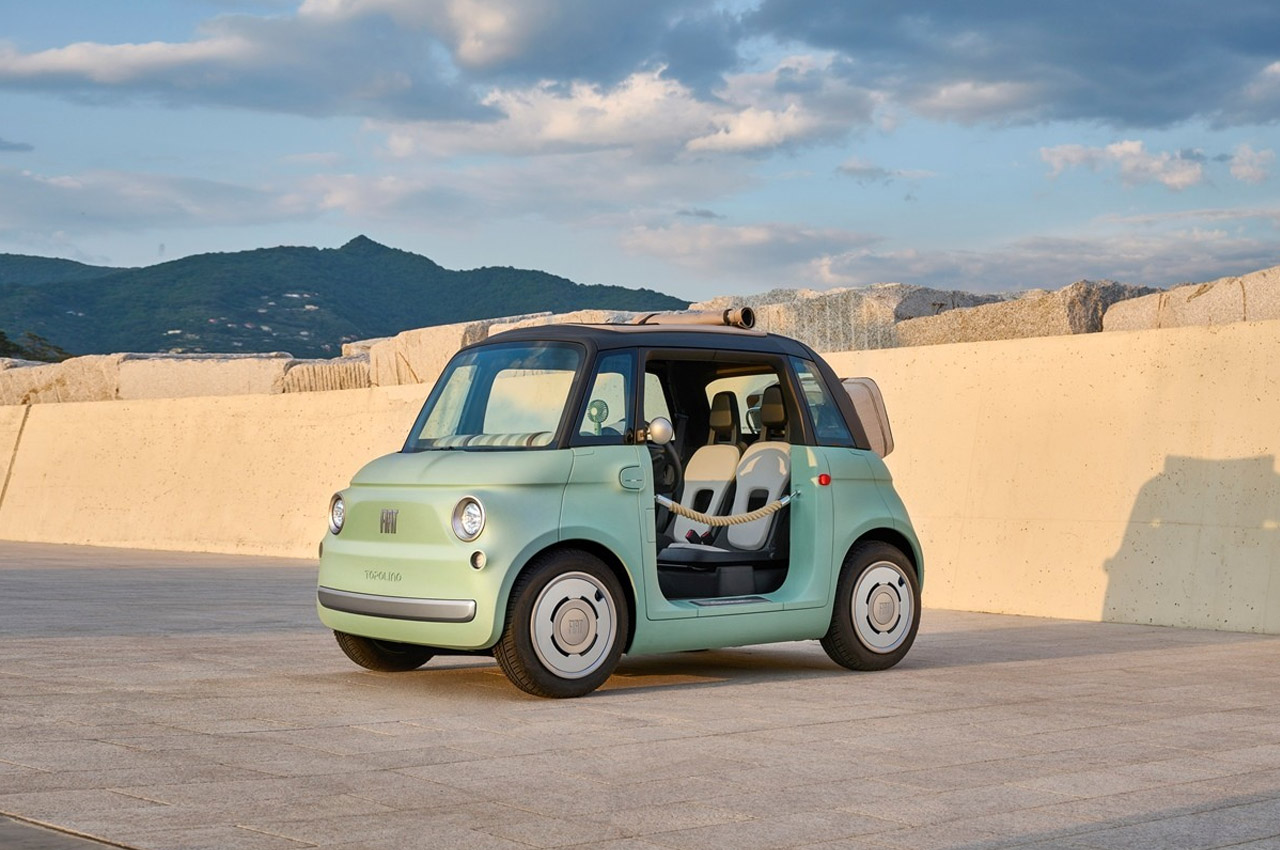
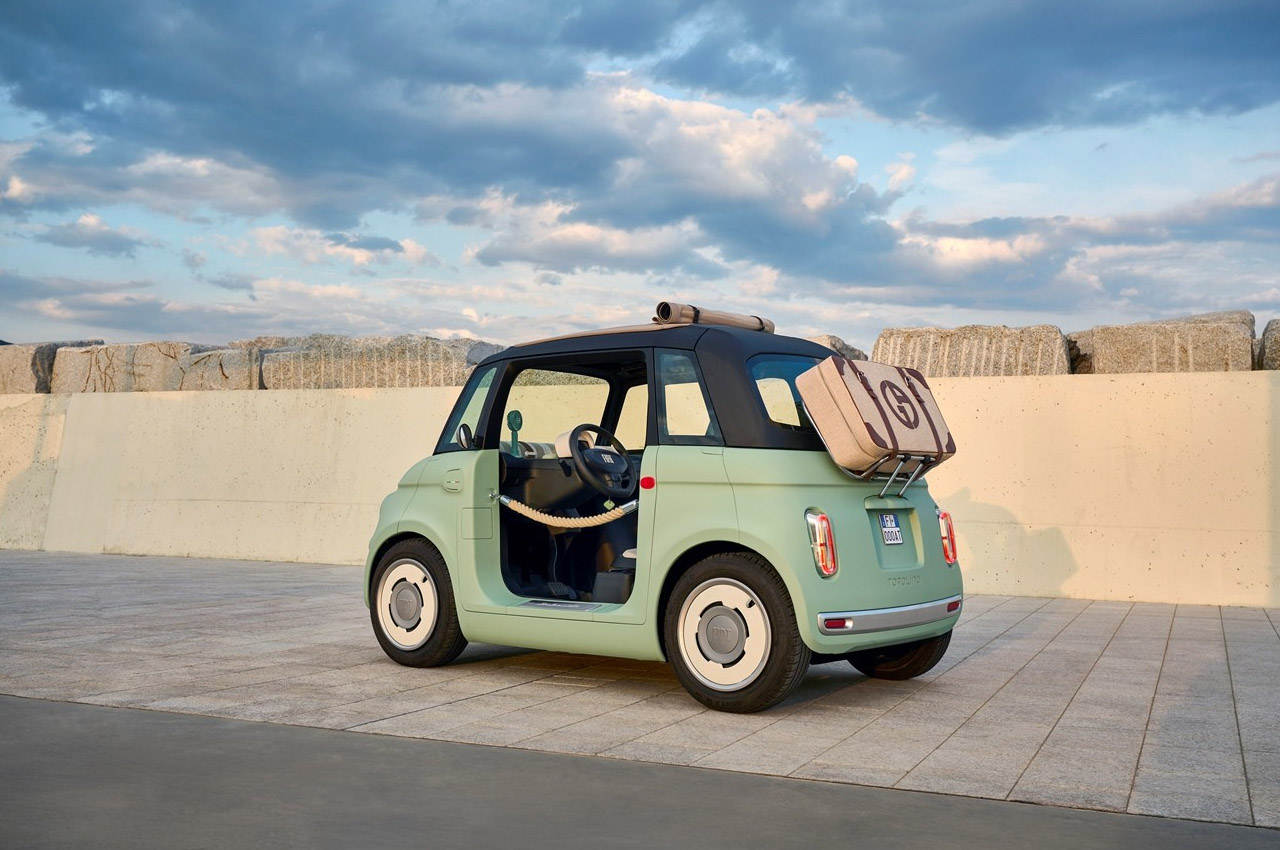
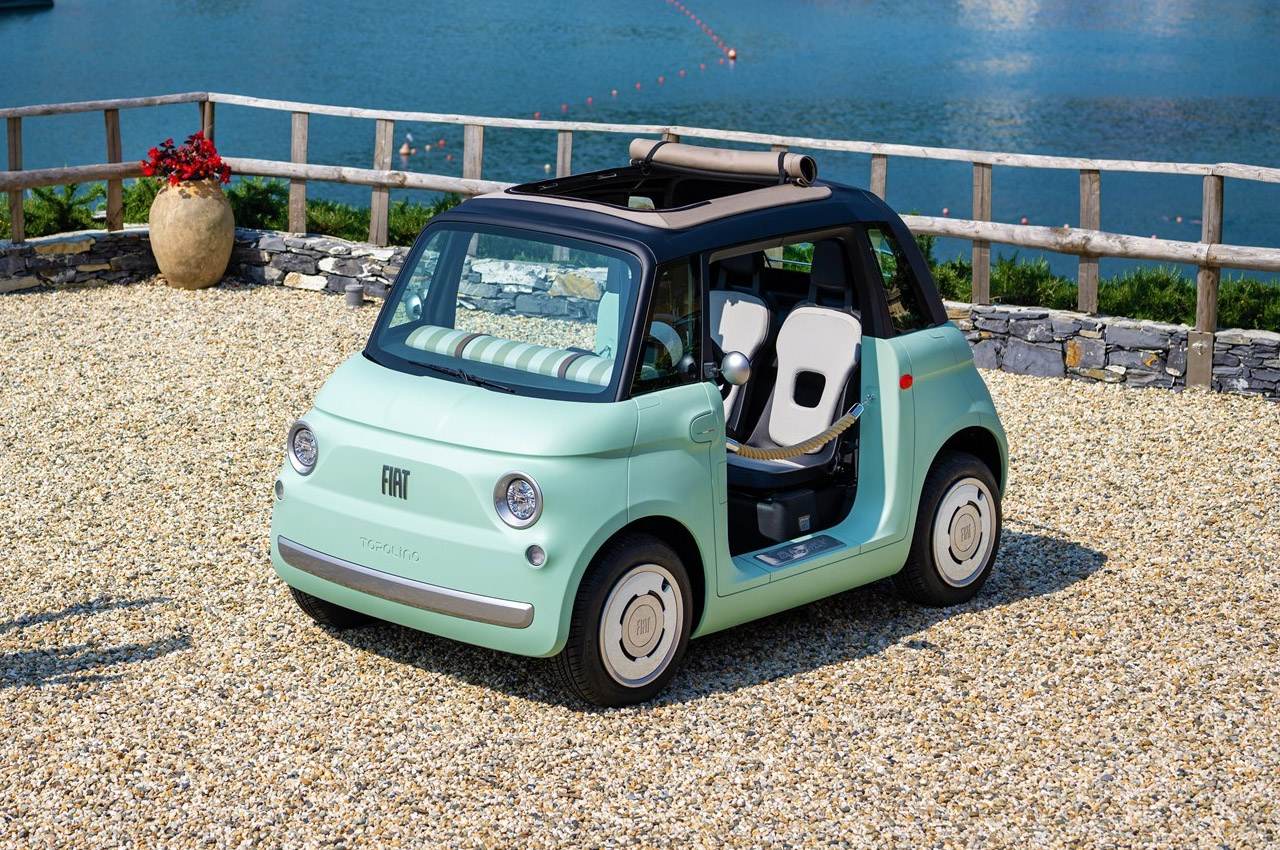
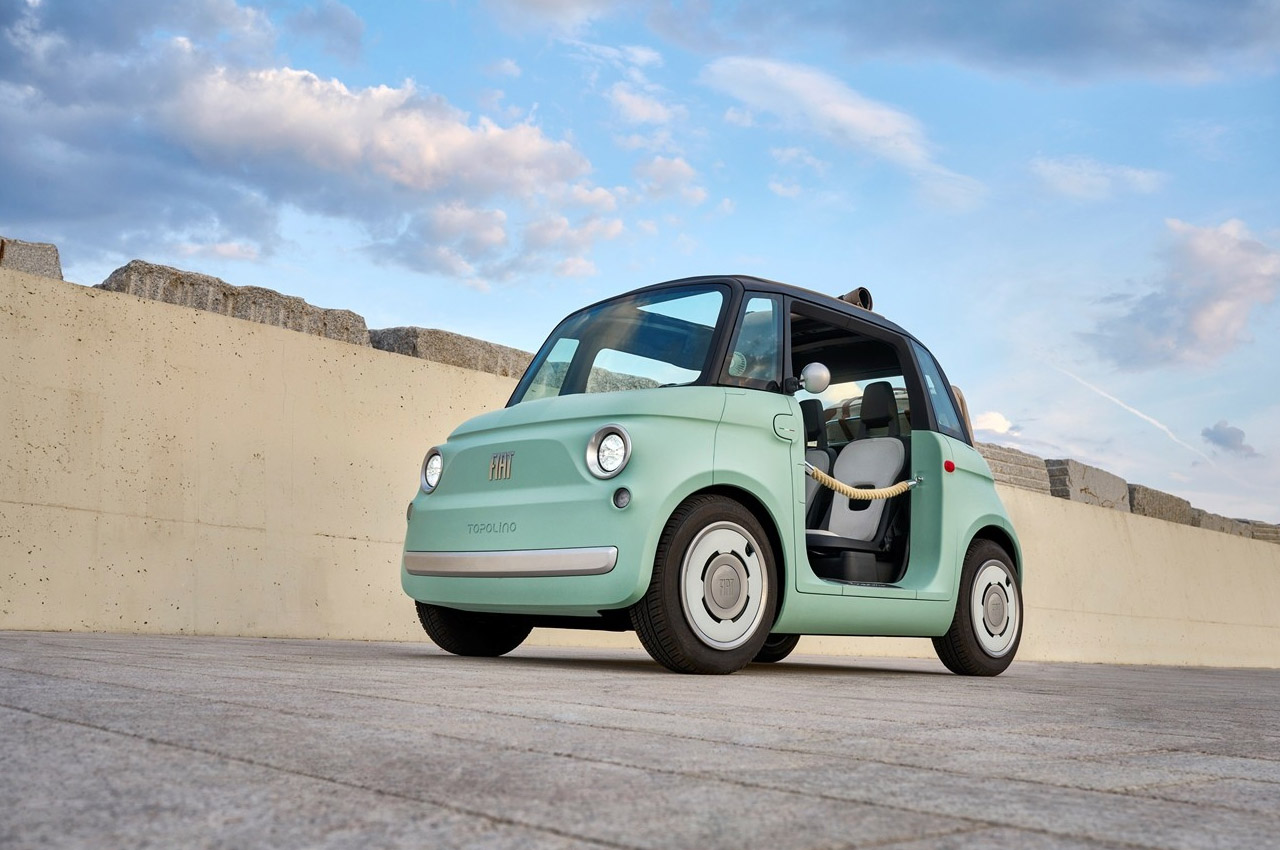
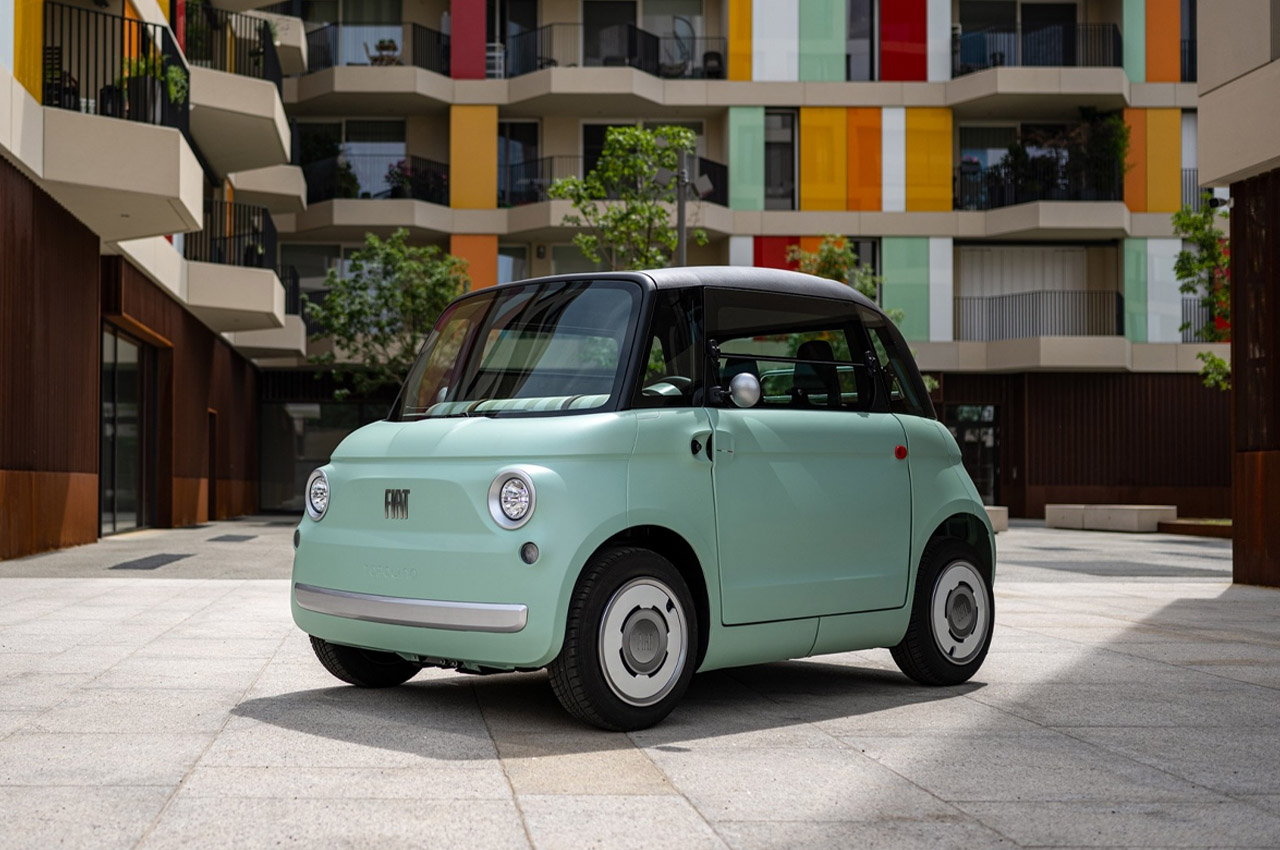
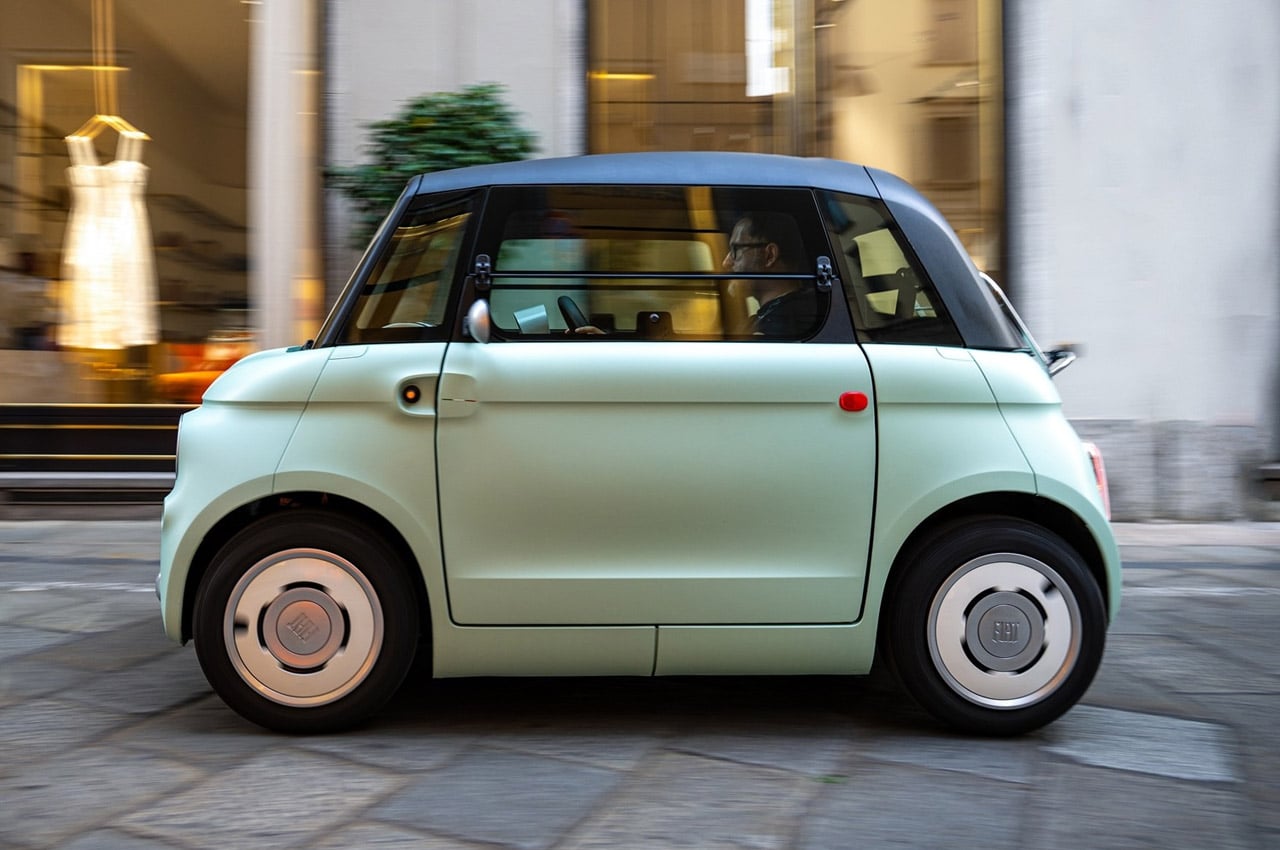
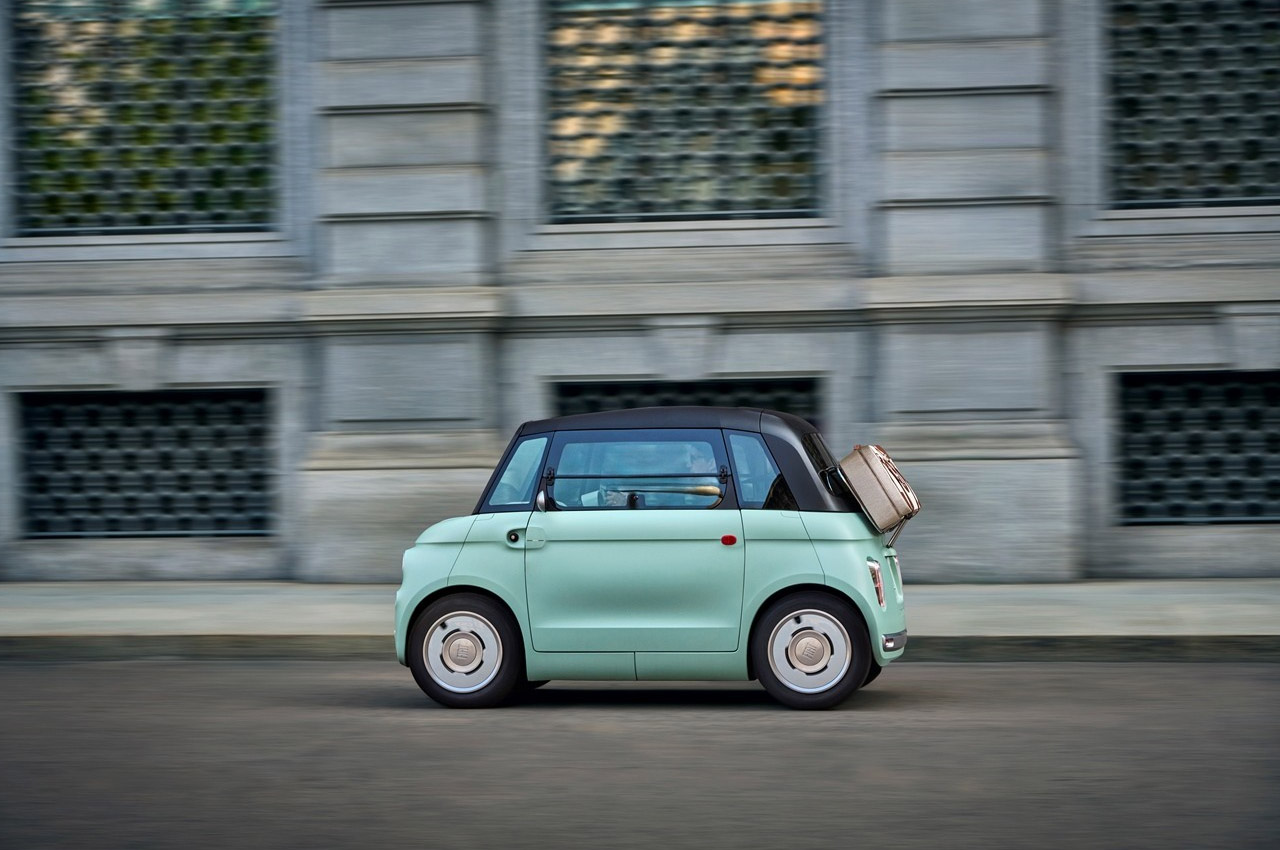
The post FIAT Topolino is a subcompact EV for stylized urban mobility first appeared on Yanko Design.
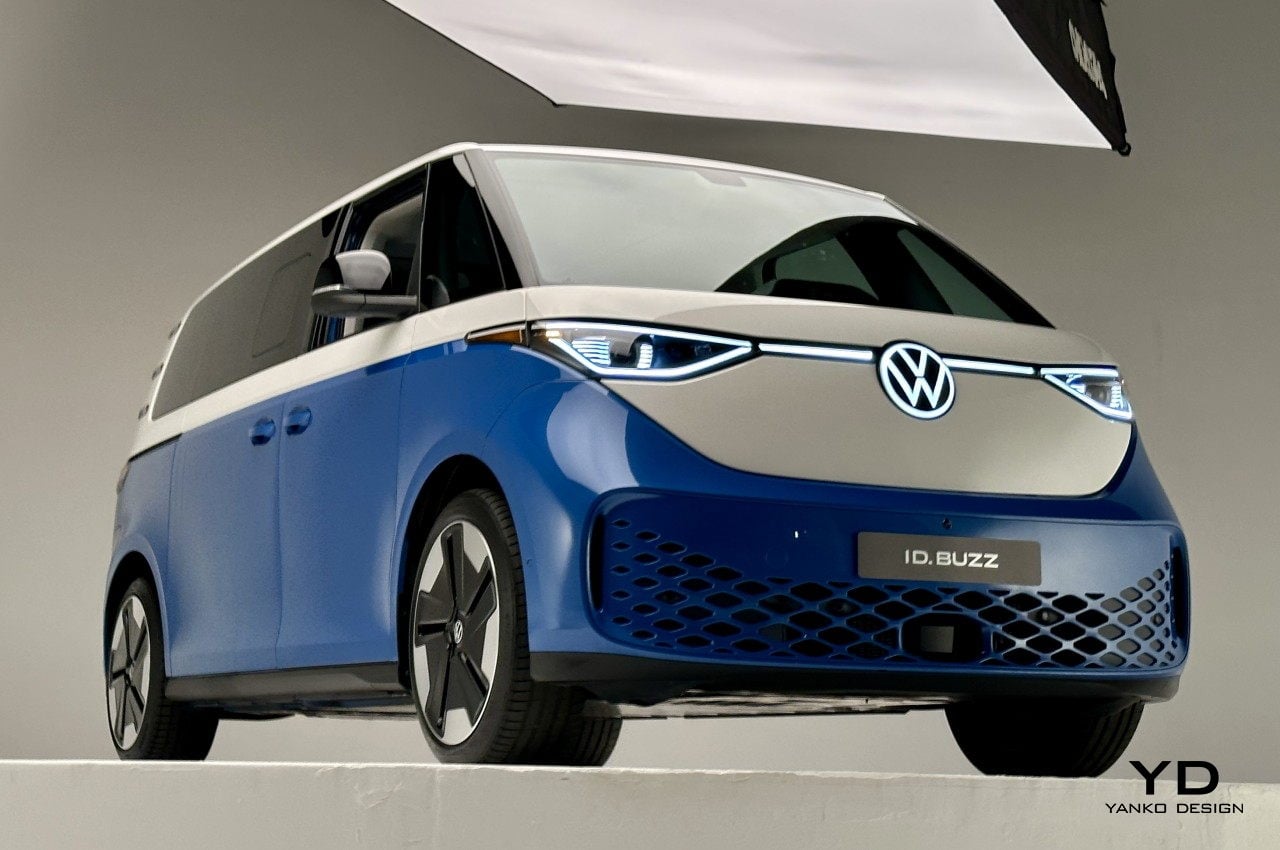
A remarkable event in the history of cars has occurred on the first-ever International Volkswagen Bus Day with the return of the microbus after a 20-year break. The T4 model was the last of these iconic vehicles sold in America, and now the electric ID.BUZZ has taken over. This is a significant milestone for the automotive industry.
Designer: Volkwagen
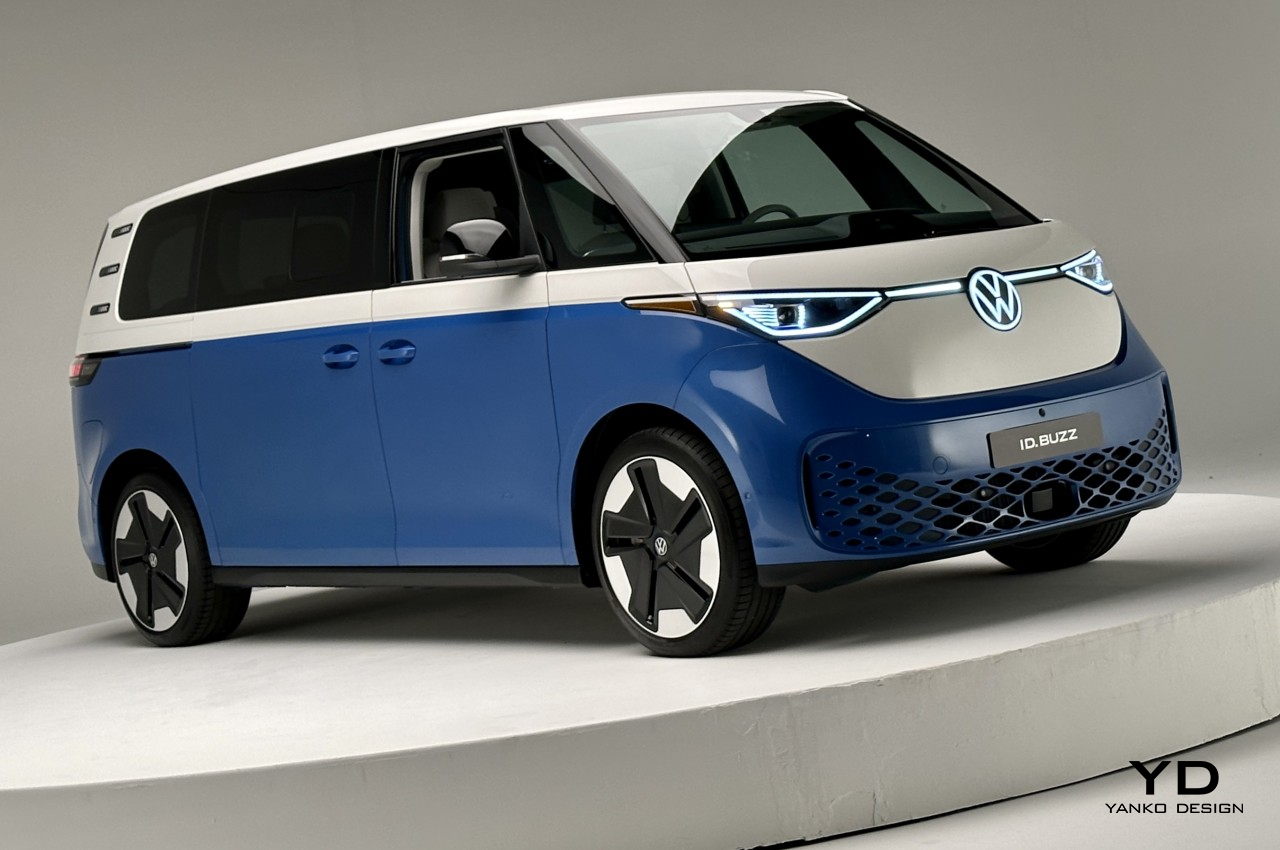
This vehicle is unique, unconventional, and breaks expectations. Its design stands out from other vehicles. The microbus is not just about looks but has an efficient layout. Despite its small size, the interior is surprisingly spacious, thanks to the rear engine placement.
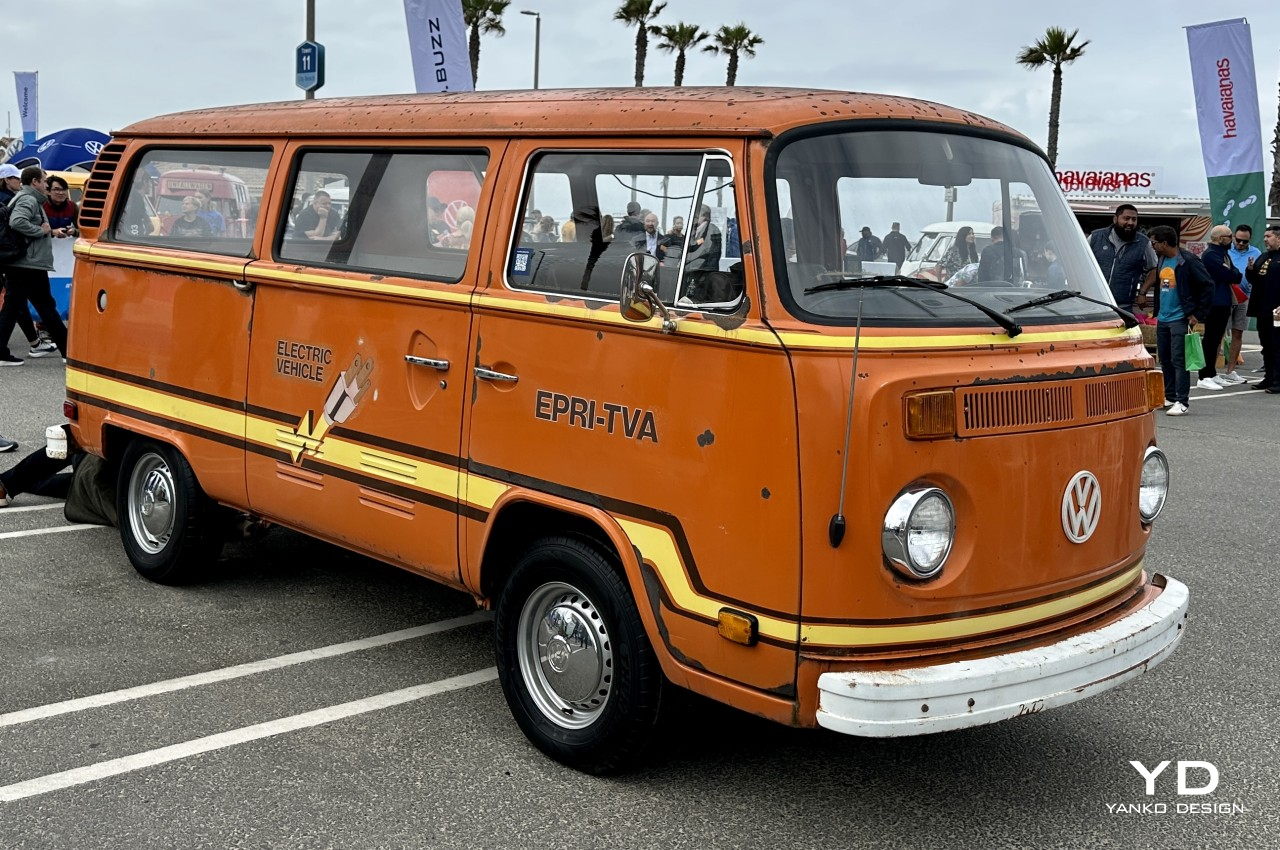
Piloting a microbus can be equated to asserting a commanding presence on the road. One of the key characteristics is the wheel placement, which is extended to each corner of the vehicle. This design aspect improves driving dynamics, rendering the ID.BUZZ to be more agile and enhances visibility. The extensive glass enclosure around the cabin allows a panoramic, crystal-clear view of the surrounding environment.
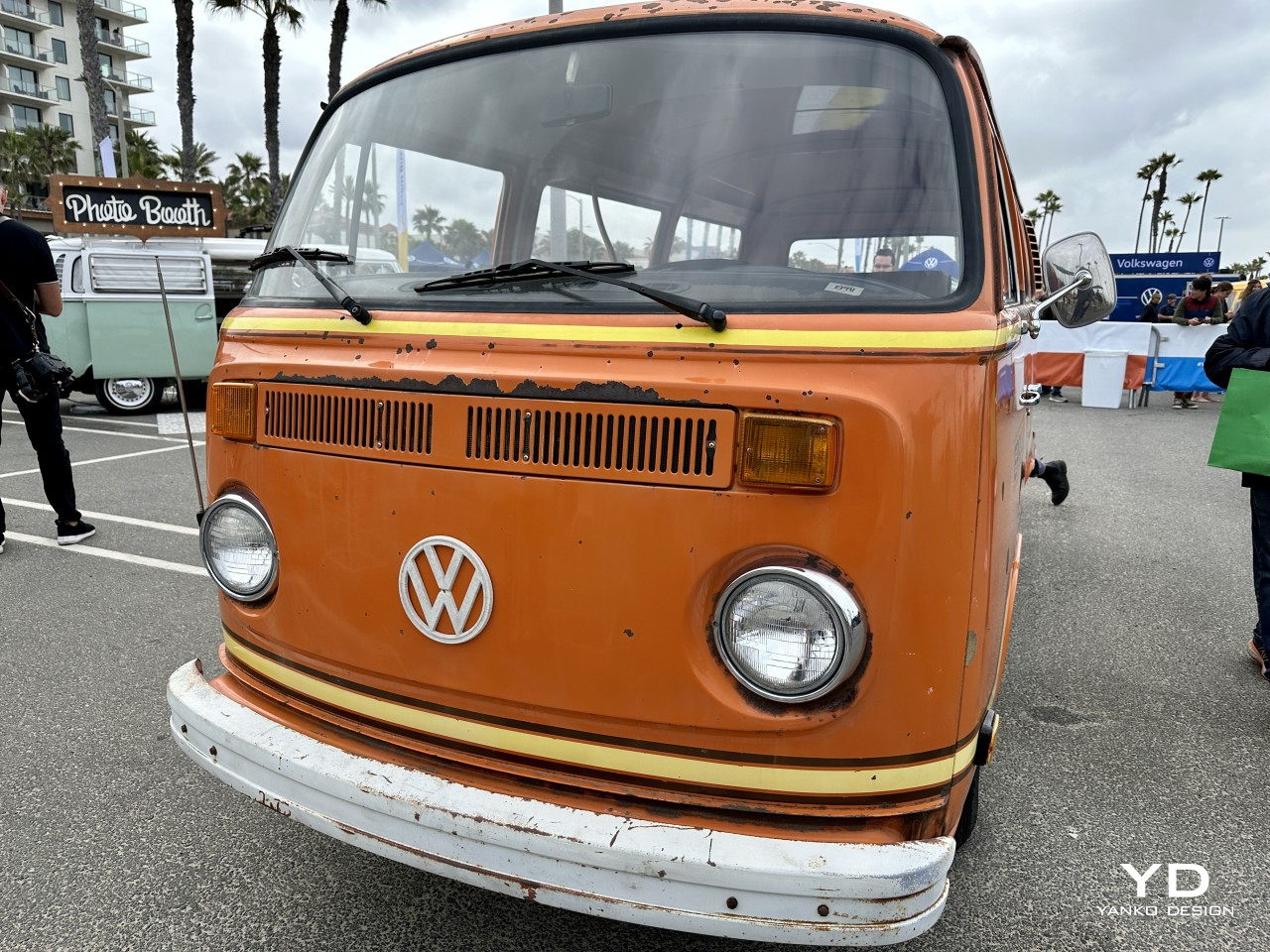
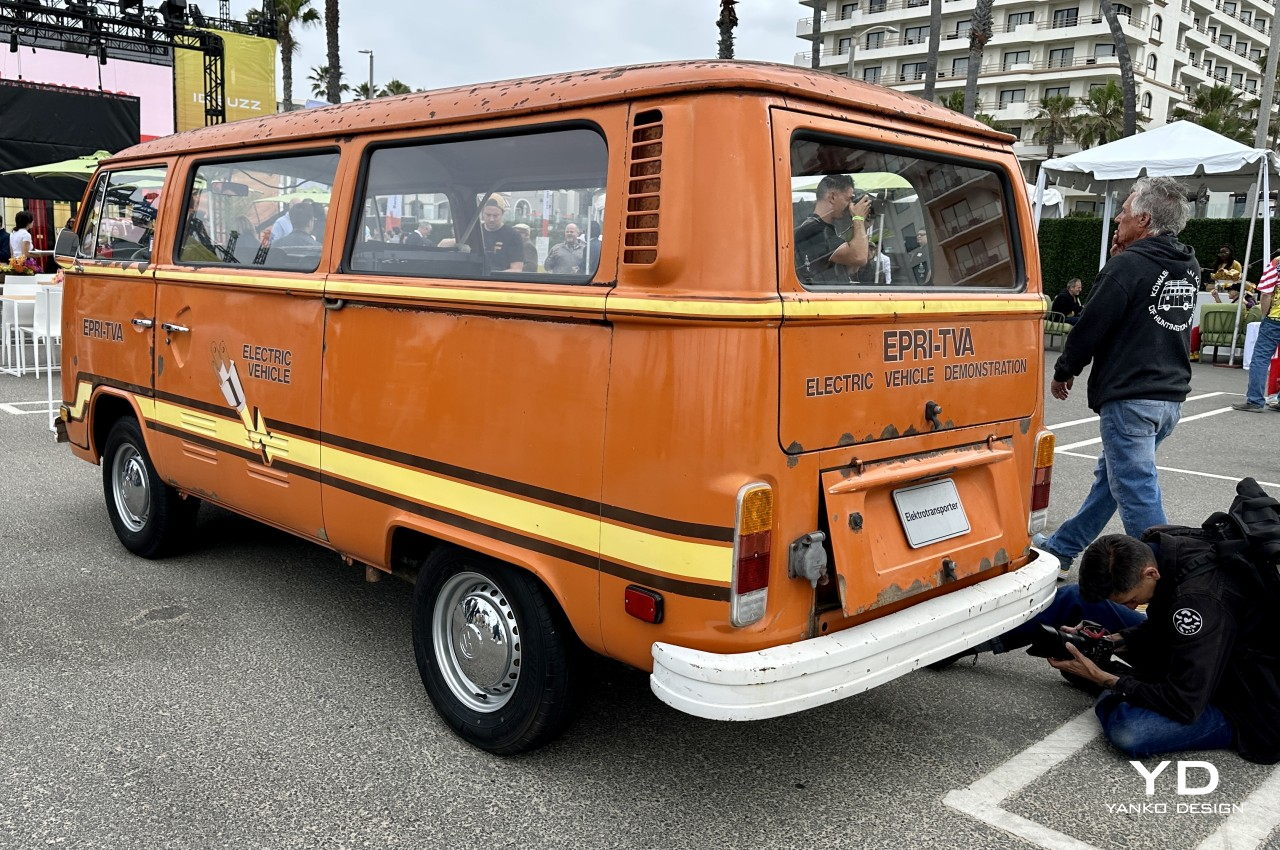
This legendary vehicle’s rebirth tailors it for North American consumers. Given this market’s propensity for larger vehicles, the wheelbase has been expanded by 10 inches, an extra row of seats has been added, power output has been boosted, and a larger battery has been integrated. The extended wheelbase fosters improved driving dynamics and a roomier interior.
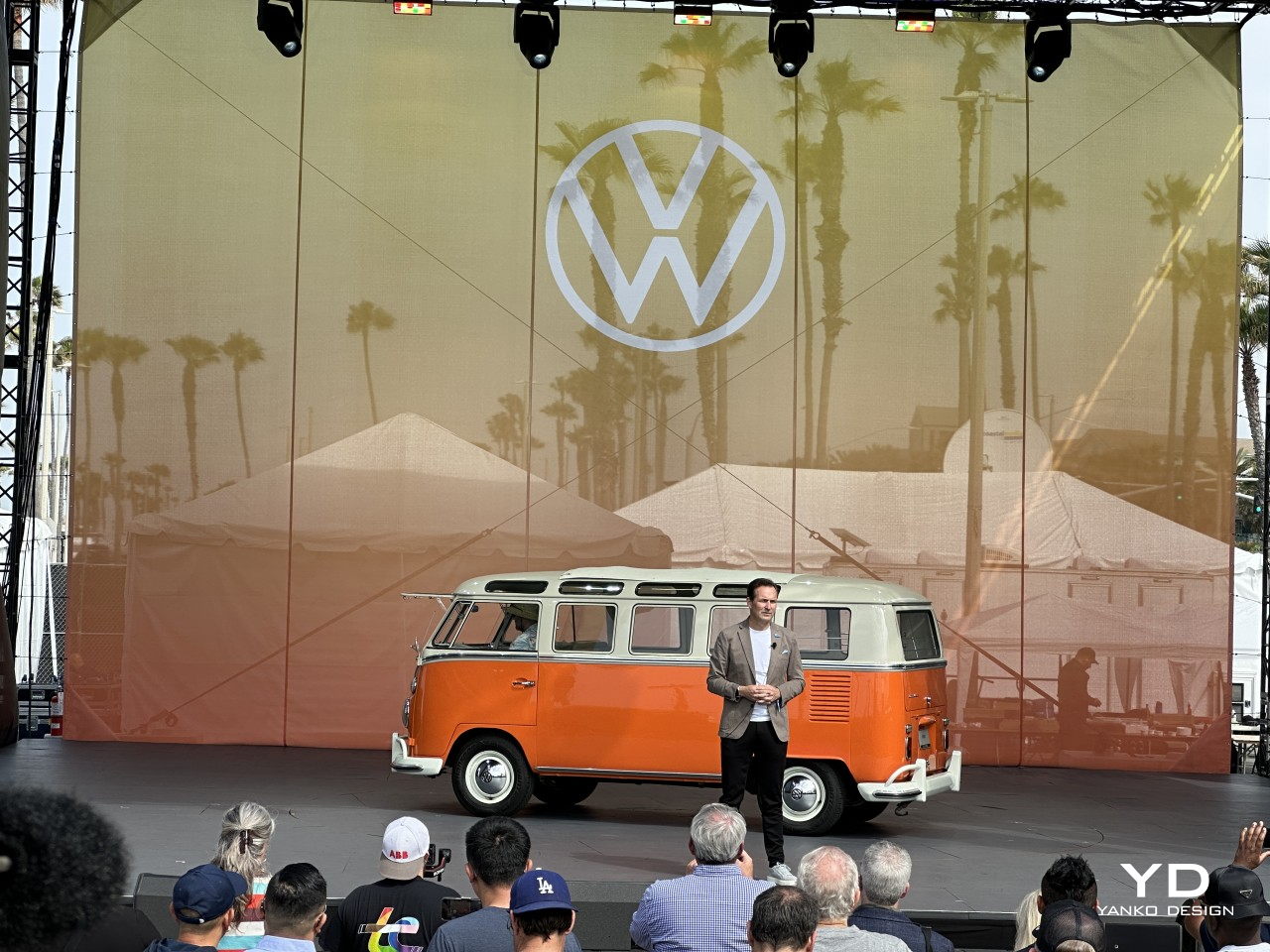
This newly designed vehicle has a powerful performance drive unit that provides 282 horsepower to the rear wheels. There is also an all-wheel-drive version with approximately 330 horsepower available. The vehicle’s lithium-ion batteries are integrated into the floor, which results in a low center of gravity and improves the overall driving experience.
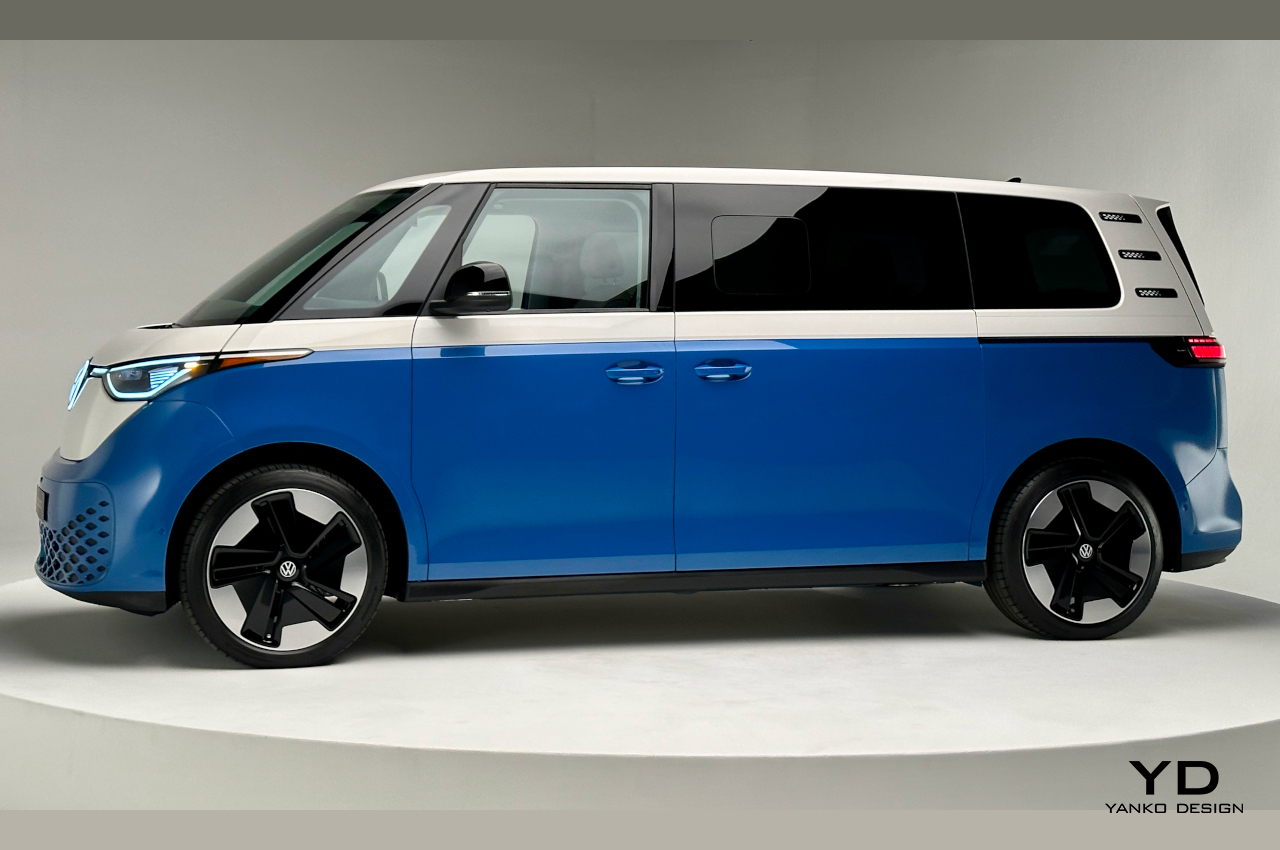
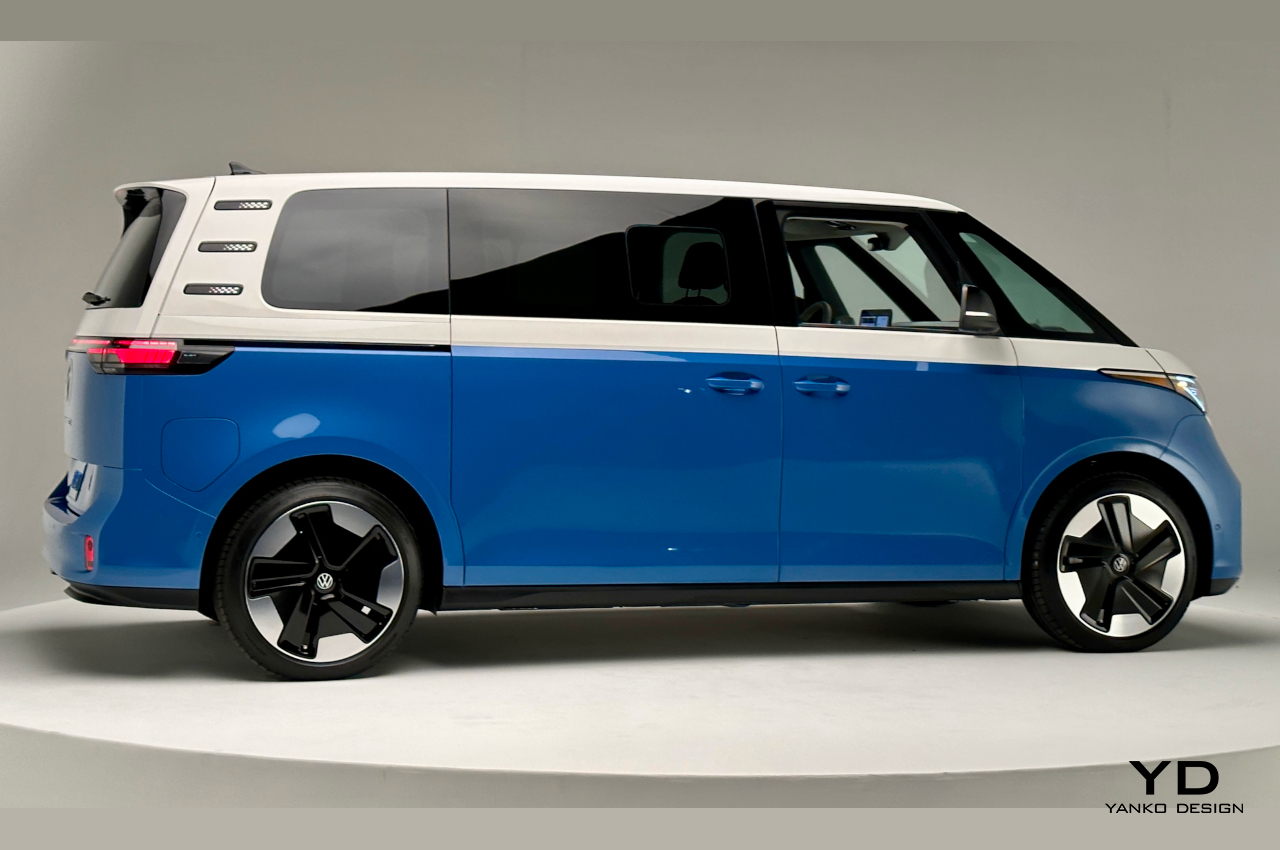
In terms of dimensions, the two-row European version of the microbus is roughly the same length as a Tiguan but shares an Atlas’s width. With an extra 10 inches added to the wheelbase for the North American market, the microbus deftly balances the proportions of a compact and a midsize SUV. This distinct blend results in a maneuverable and manageable vehicle, yet it offers significantly more interior space than comparable SUVs.
The North American version of the vehicle has an updated look with new color options for both the exterior and interior. The iconic VW logo is illuminated, and color choices include the original European hues such as orange, yellow, dark blue, and bright green, as well as three new options: silver, cabana blue, and grey. This wide range of colors allows each owner to create a unique vehicle that reflects their individual personality.
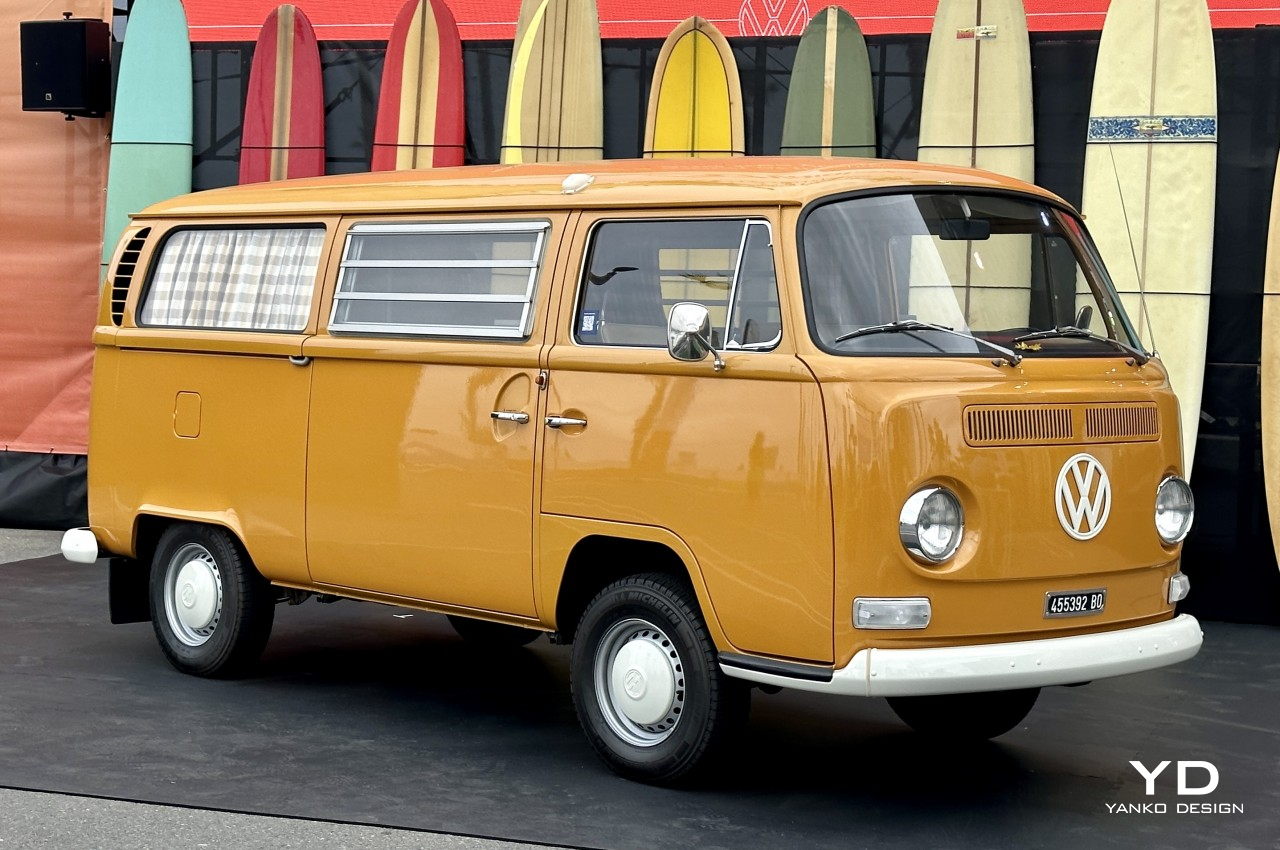

The North American microbus’s interior outshines its competition. Three unique, custom interiors are available, each designed to captivate and cater to individual preferences. Whether it’s the urban ambiance with dark brown seats and blue door inserts, the coastal theme’s light tones, or the ’70s retro-inspired cognac brown seats with yellow piping, and there’s an interior to suit every preference.
Inside the microbus, comfort and utility reign supreme. Seven seats are standard, with the option to swap out for captain’s chairs, reducing the seat count to six. Standard leatherette seats come with heated and ventilated functionality that features 12-way power adjustment, memory function, and massage, and all are included as standard amenities. As a passenger vehicle, ensuring the comfort of occupants is paramount.
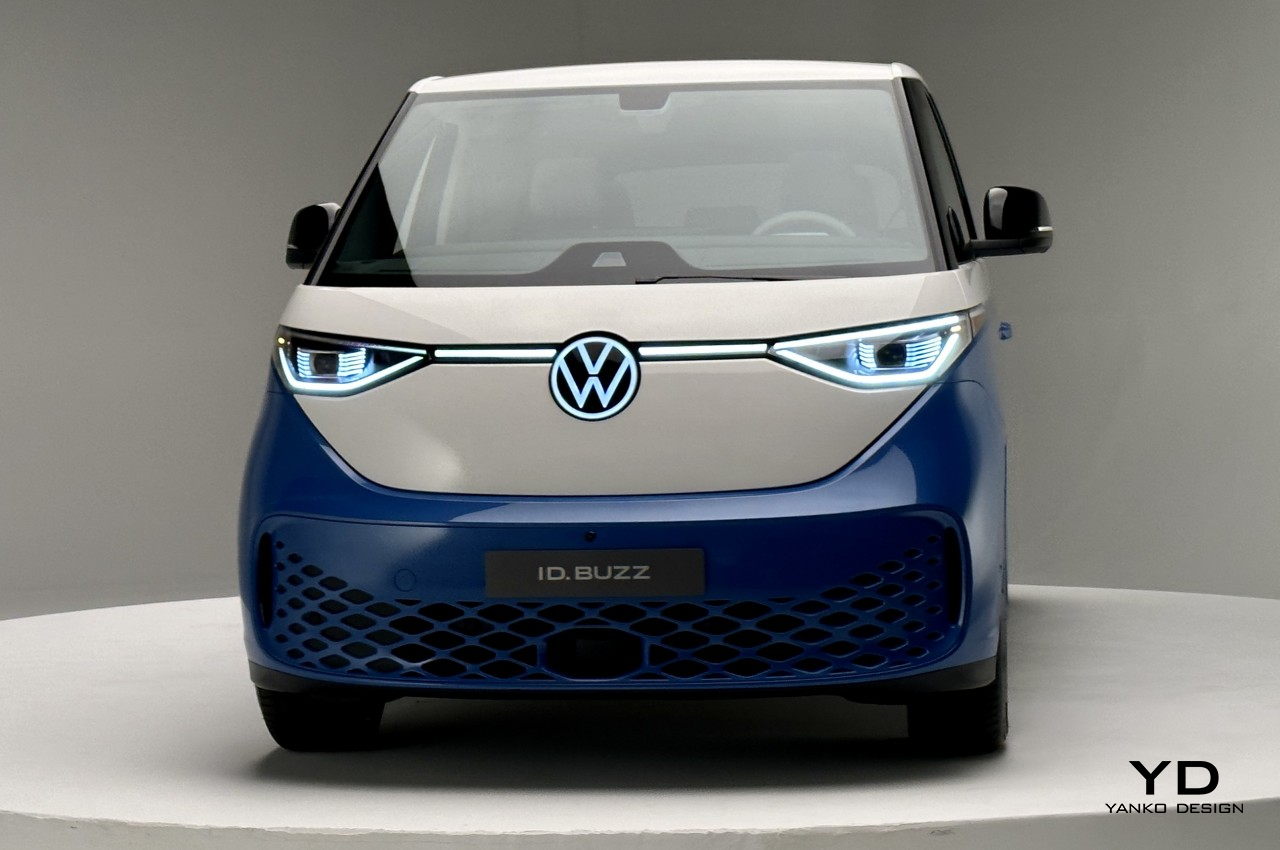
The seating layout is versatile and designed to accommodate various needs and purposes. The middle row, a 60/40 split-fold seat, can also slide forward by approximately 20 centimeters. The third row follows a similar design but adds the convenience of being removable, ensuring that additional cargo space can be made available when needed.
At a height of 6’2″, there was plenty of space for both my legs and head in the second and third rows. I found it much easier to get in and out of the third row compared to any minivan or SUV I’ve tried before. This makes the ID.BUZZ one of the most versatile vehicles for moving people in any consumer class.

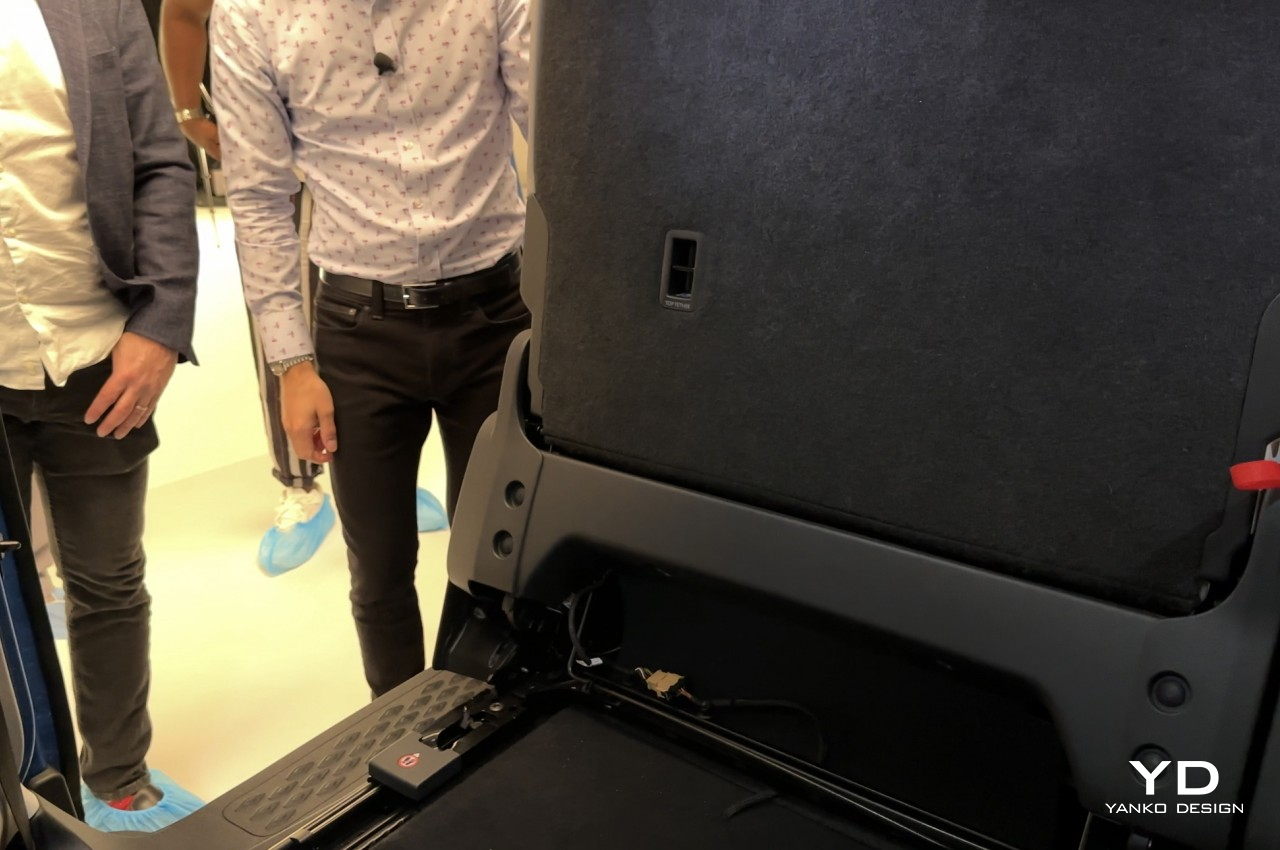

In the ID.BUZZ, I found it very simple to remove the third-row seats. A quick tug on a string released the latch, allowing the seats to easily slide back. Additionally, the seats had a carrying handle for convenient transport and storage. Reinstalling the seats was just as easy, with a straightforward reverse process. The ID.BUZZ’s design and execution is notably thoughtful, especially when compared to traditional minivans that have captain’s seats.
The ID.BUZZ also introduces a new 12.9-inch infotainment display, equipped with illuminated sliders for temperature and volume control and a dedicated climate document. The vehicle boasts features that amplify convenience and comfort, most of which are standard in the entry model. Highlights include power sliding doors, a power horizontal sliding second-row window, a power tailgate with a kick-to-open function, three-zone climate control, and minimal optional equipment.
Additional optional features include a panoramic electrochromic roof that considerably opens up the cabin, and a pre-heated windshield, among others.
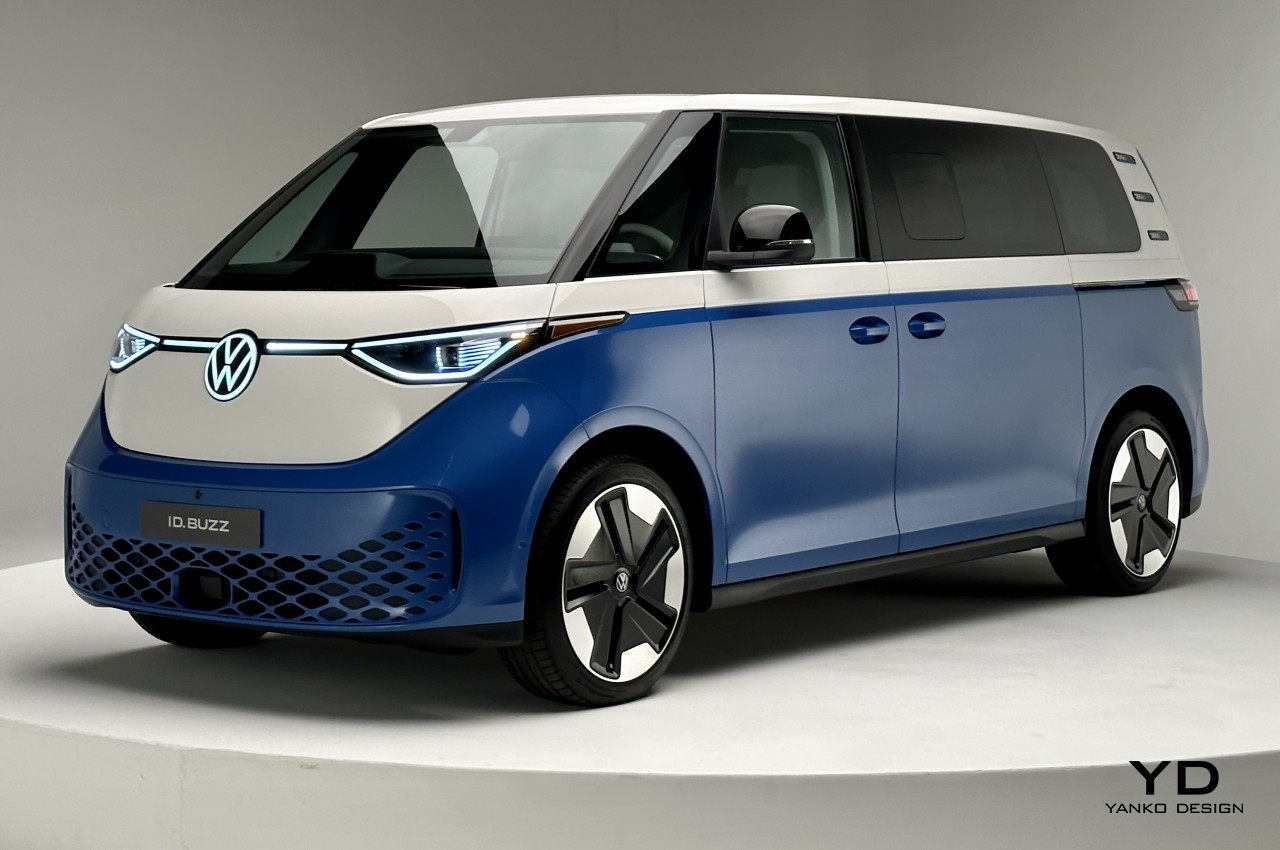
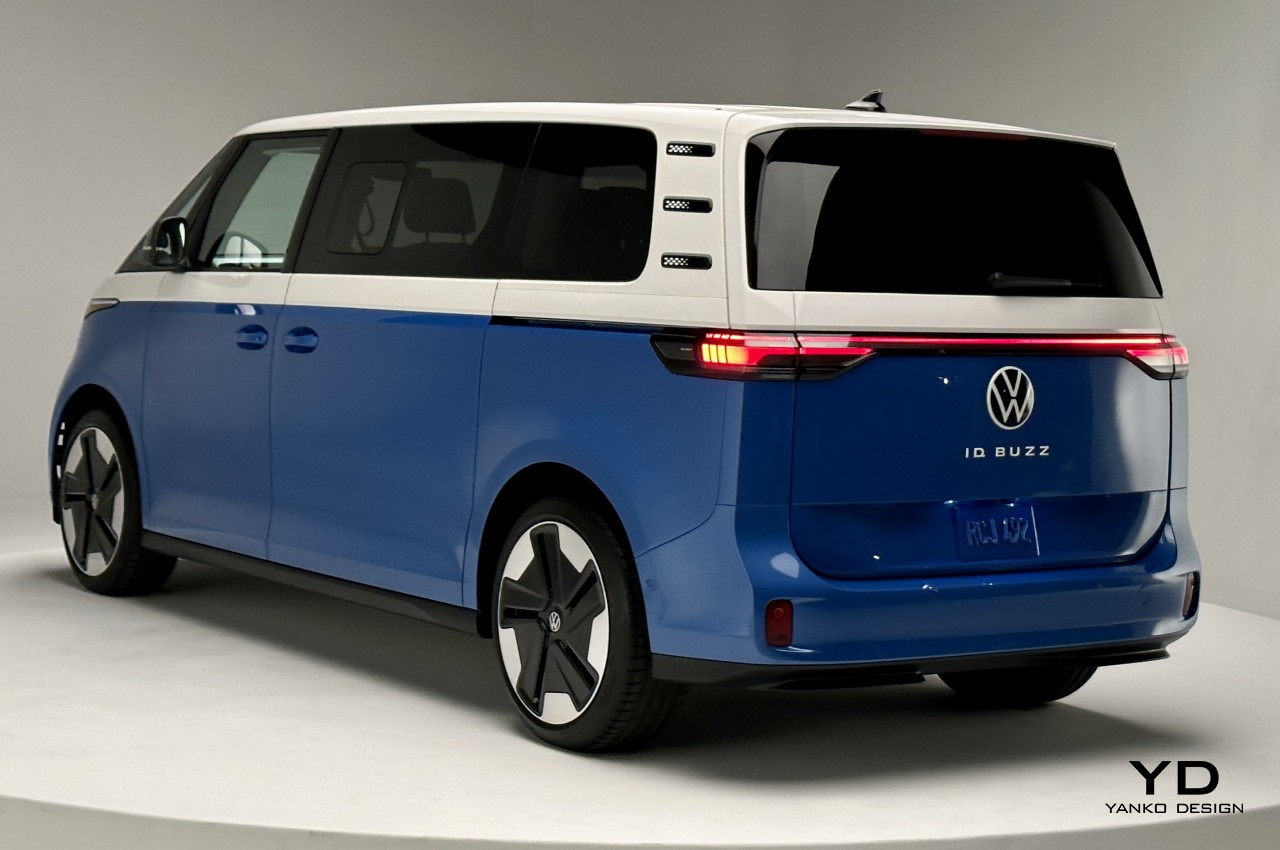
Safety, convenience, and driver assistance are all consolidated under the IQ Drive umbrella. A standout feature of this suite is the travel assist functionality, which blends adaptive cruise control and lane assist. As long as drivers maintain slight contact with the steering wheel, the vehicle handles the rest, making the journey both comfortable and enjoyable. Other IQ Drive features include Remote Parking, Head Up Display, and an area view.
The return of the microbus is more than just a nostalgic comeback; it represents a complete rethinking of what a vehicle can be. It blends the best of both worlds, with a mix of classic design and modern functionality, creating a perfect balance of style and practicality. This vehicle is more than just a means of transportation; it offers a unique experience, makes a statement, and owning one means possessing a piece of history while traveling into the future. The wait has been long, but the consensus is that it has been worth it. Having had the chance to test drive the European version of the ID.BUZZ, I am eager to share its unique appeal and the joy of operating such a distinctive vehicle—the ID.BUZZ will be available on the market next year, with pricing details yet to be released.
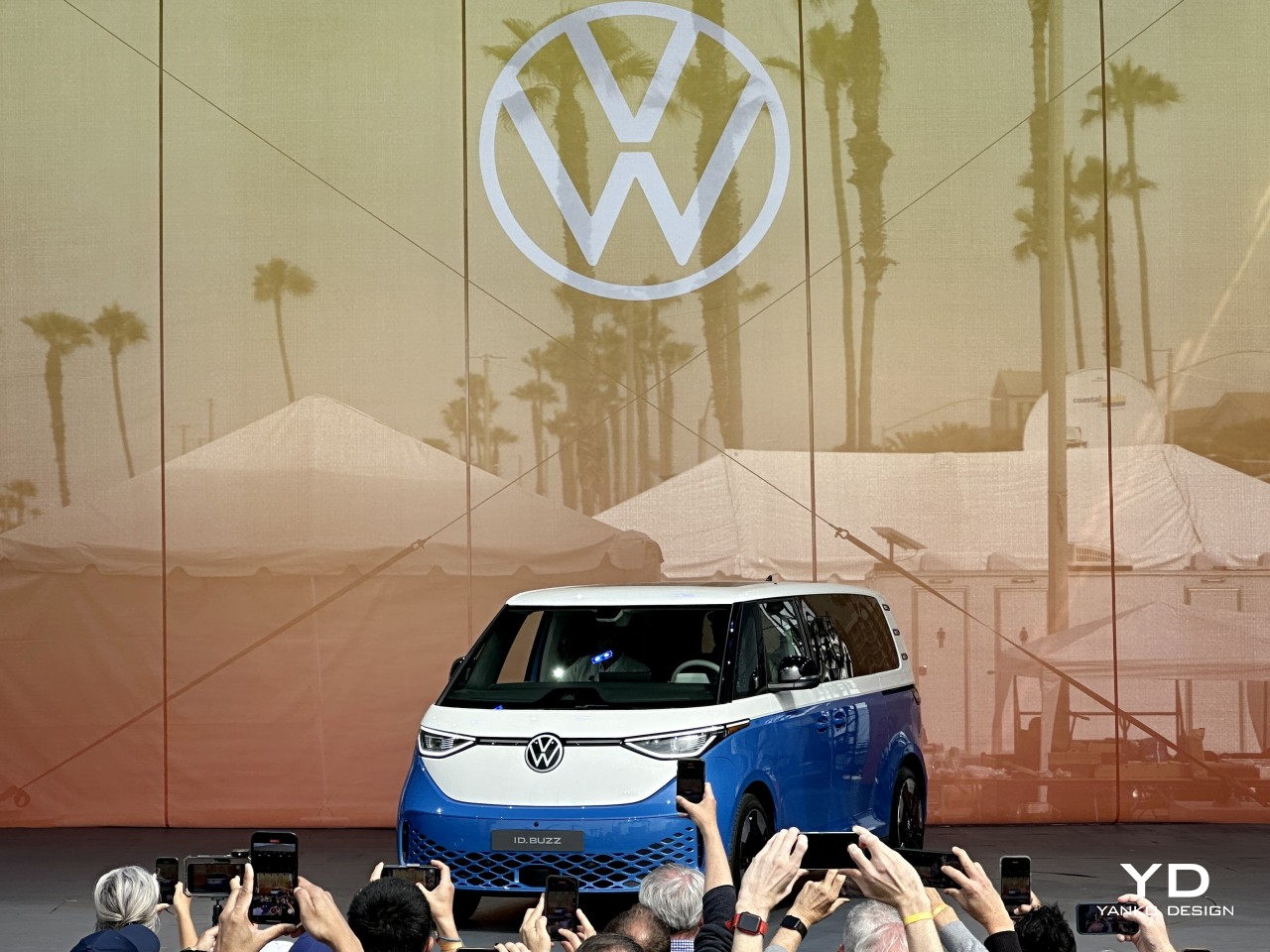
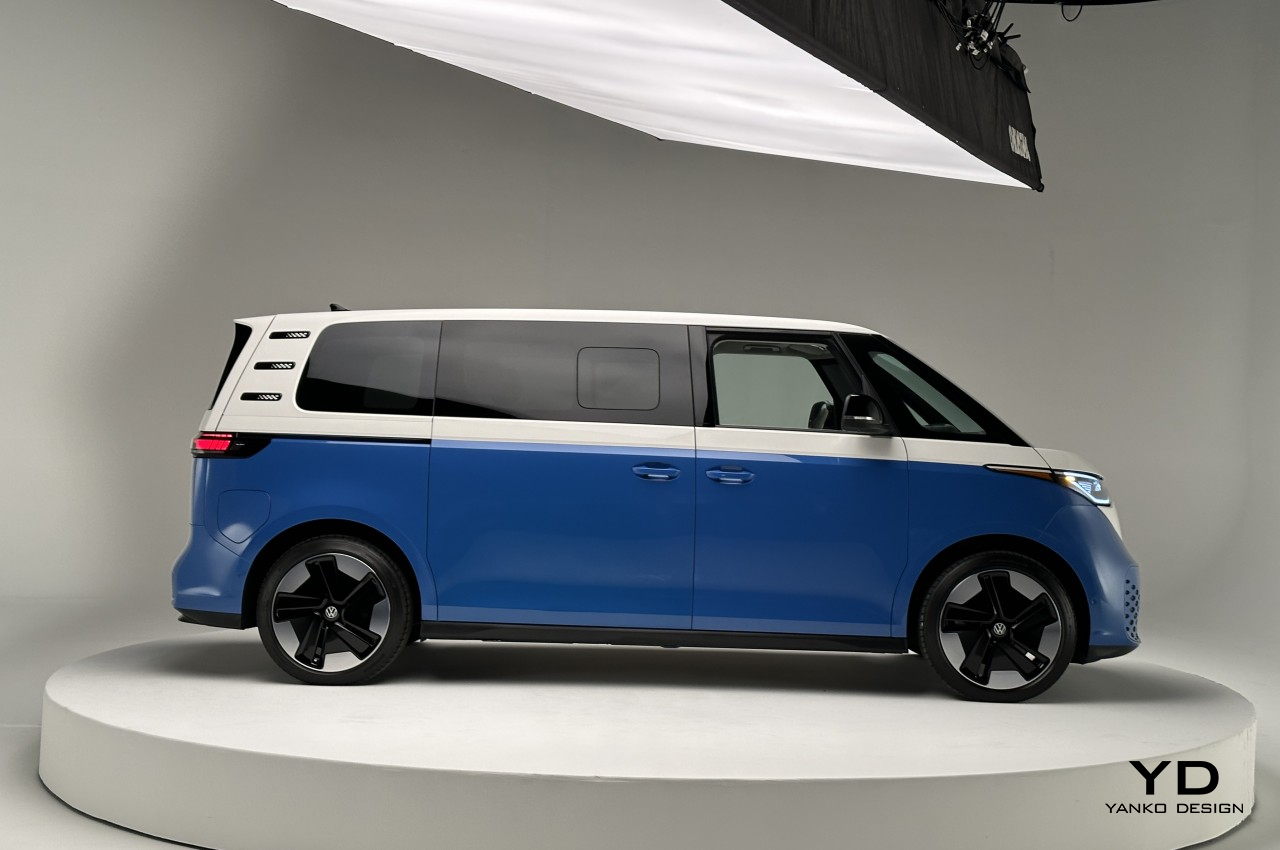
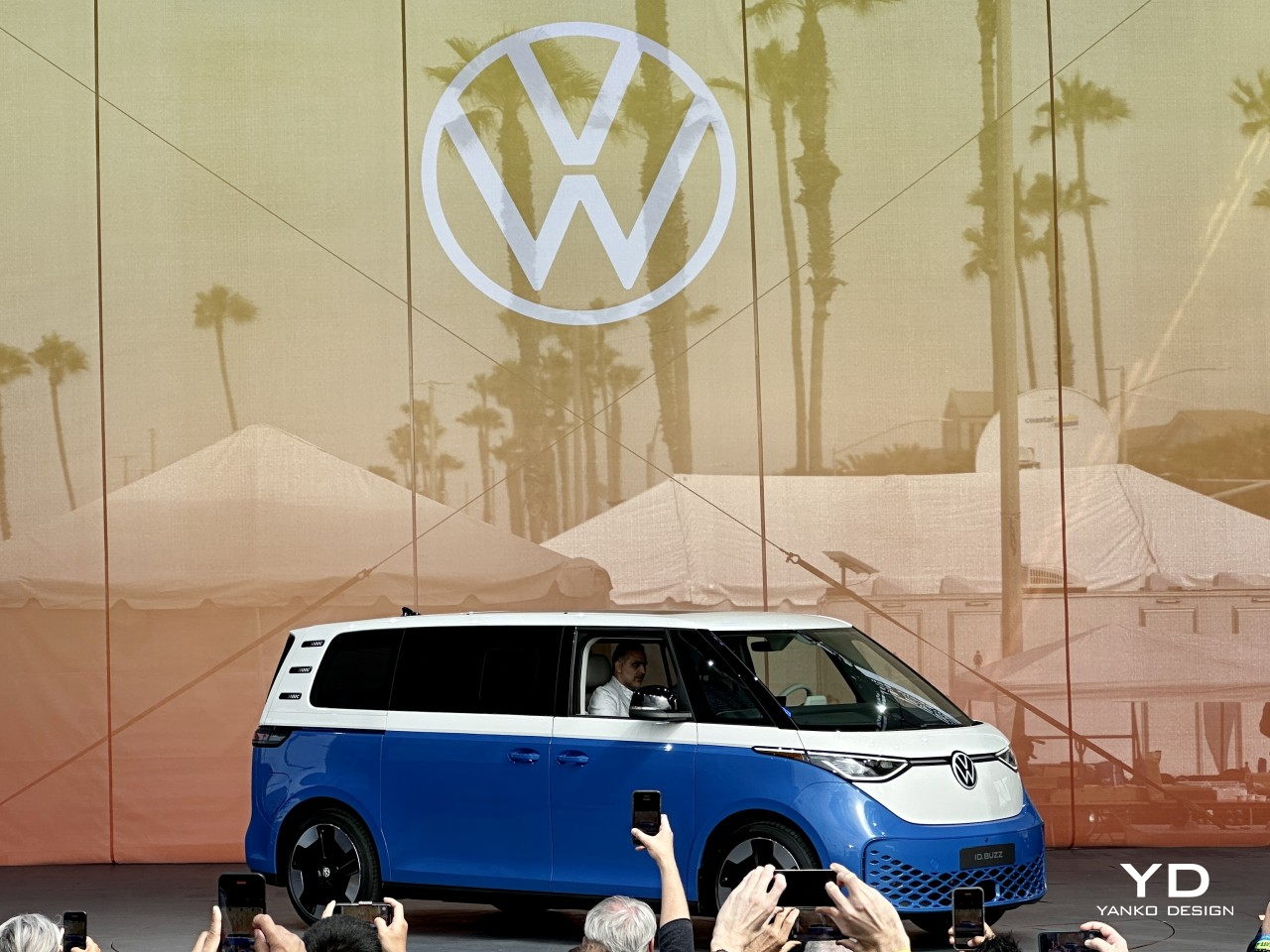
The post Electrifying the Roads: The ID.BUZZ Microbus, a Classic Reimagined for the Future first appeared on Yanko Design.
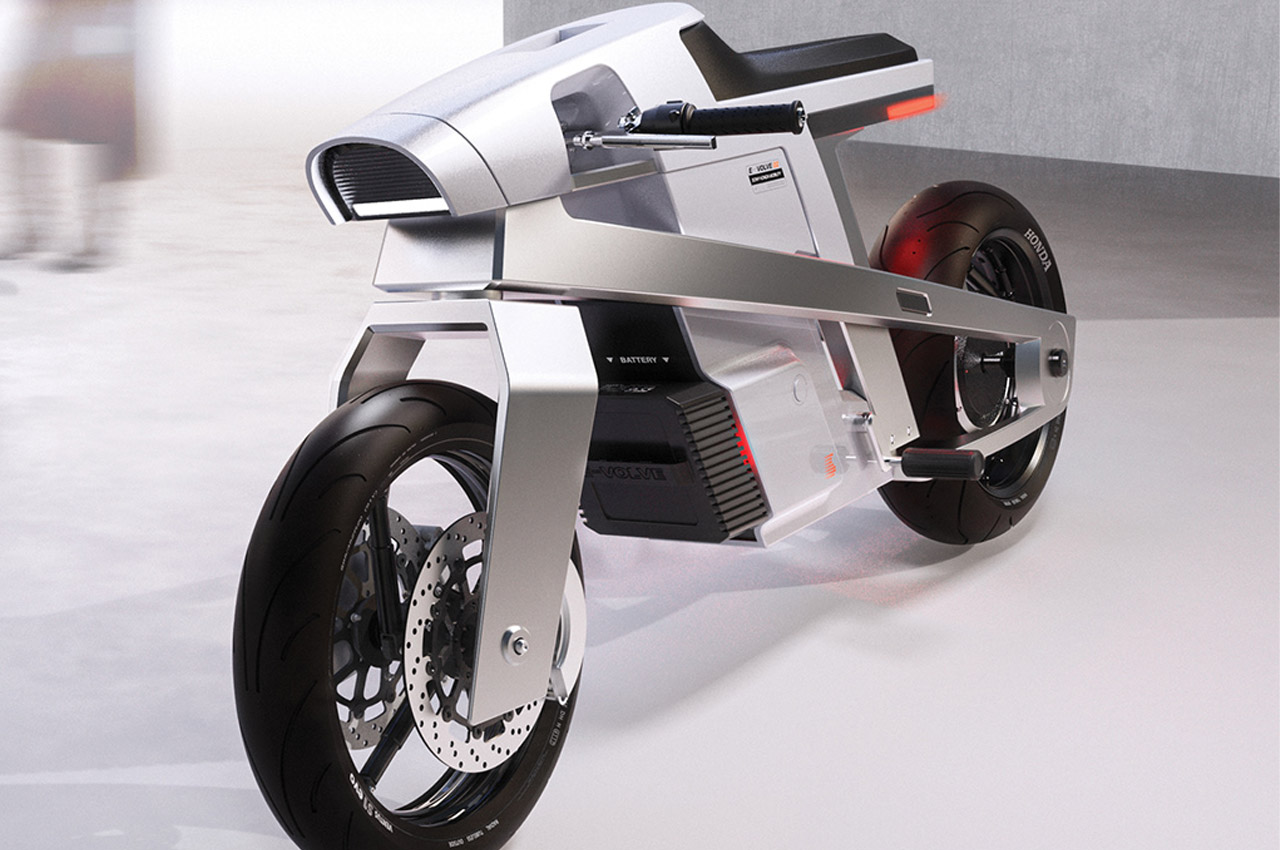
Honda has struck a deal with Sony to create new mobility services to optimize the way consumers interact with future vehicles for a balance between manufacturing and functionality.
Now that the two Japanese heavyweights have already revealed a prototype electric sedan under the brand name Afeela, as a result of this long-running partnership, should the two-wheelers not also get the rubbing-off treatment?
Designer: Jennifer Ellison
Rendered on KeyShot: Click Here to Download Your Free Trial Now!
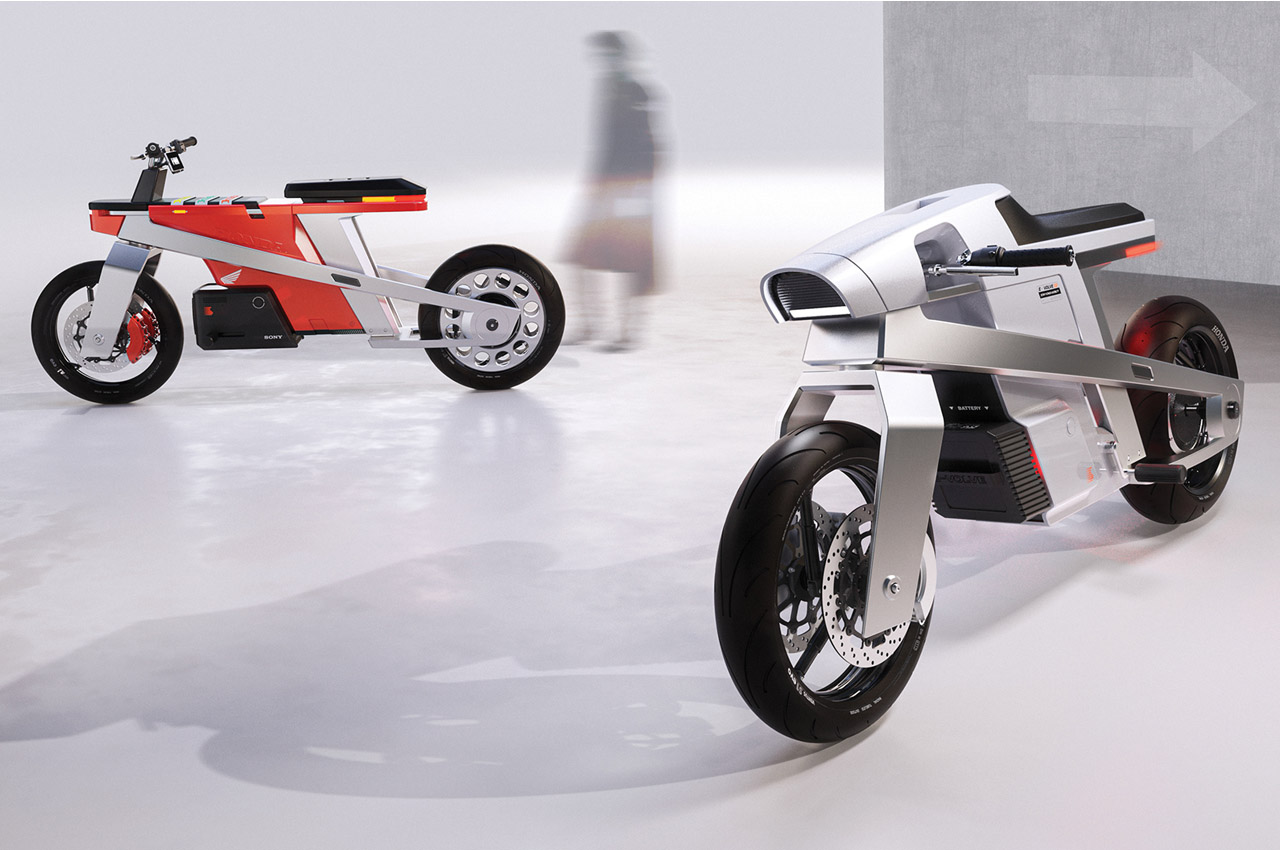
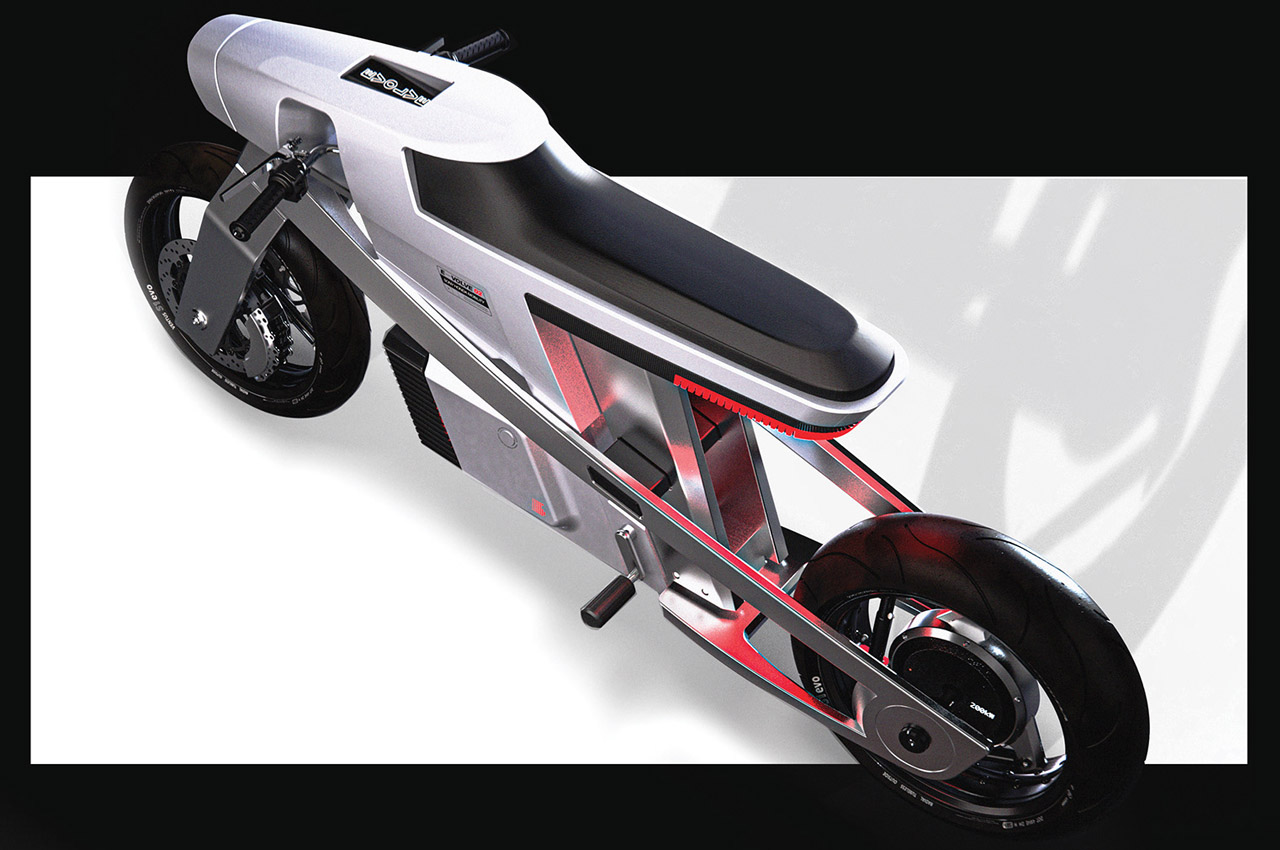
A motorbike with the same exploits as the four-wheeled counterparts for a unified approach towards sensible mobility. This electric concept bike is exactly what a Honda-Sony partnership would result in, and it’s aptly dubbed SonyxHonda E-Volve. The core idea of the design is freedom in style, to grow and have the flexibility that Gen-Z craves. This electric motorcycle built on a light, compact frame has a wide range of modules that can be interchanged whenever desired for real-time needs.
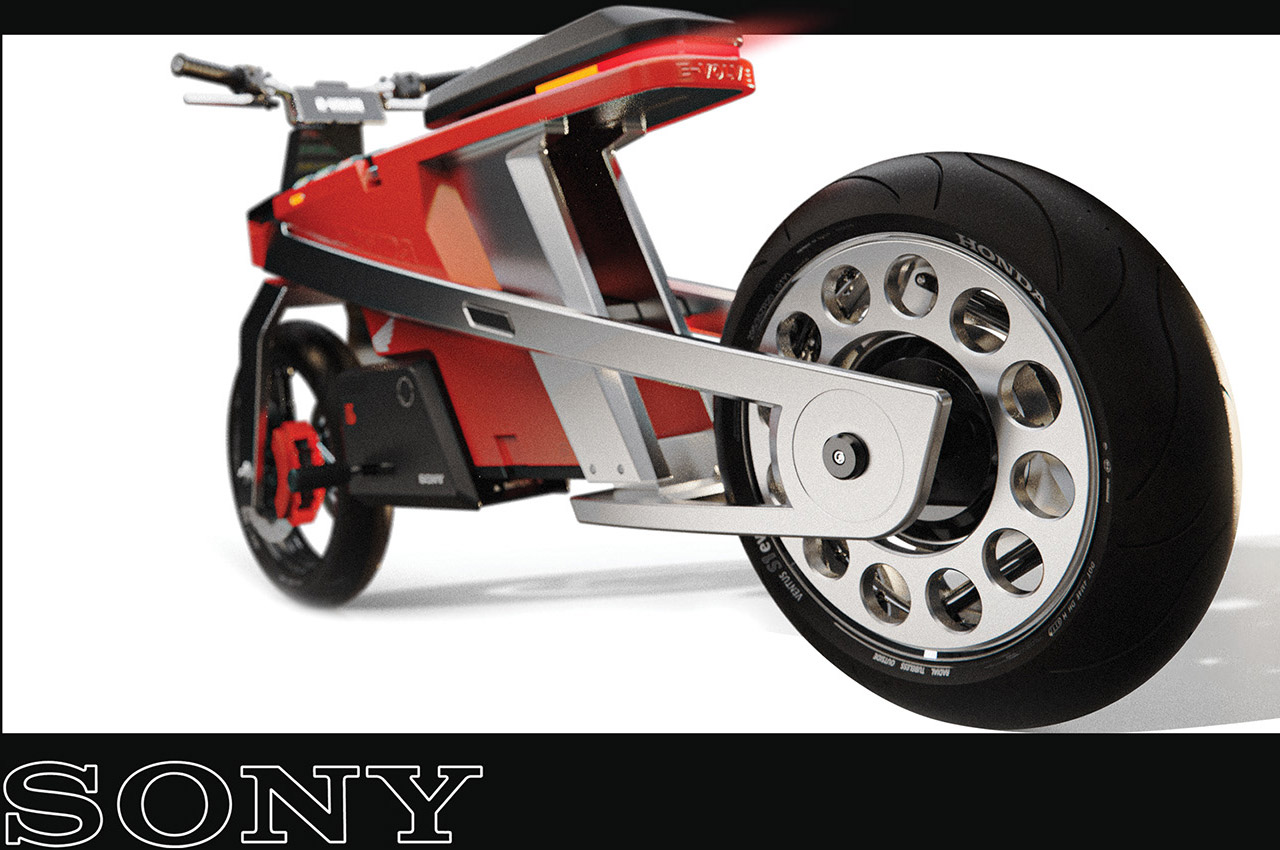
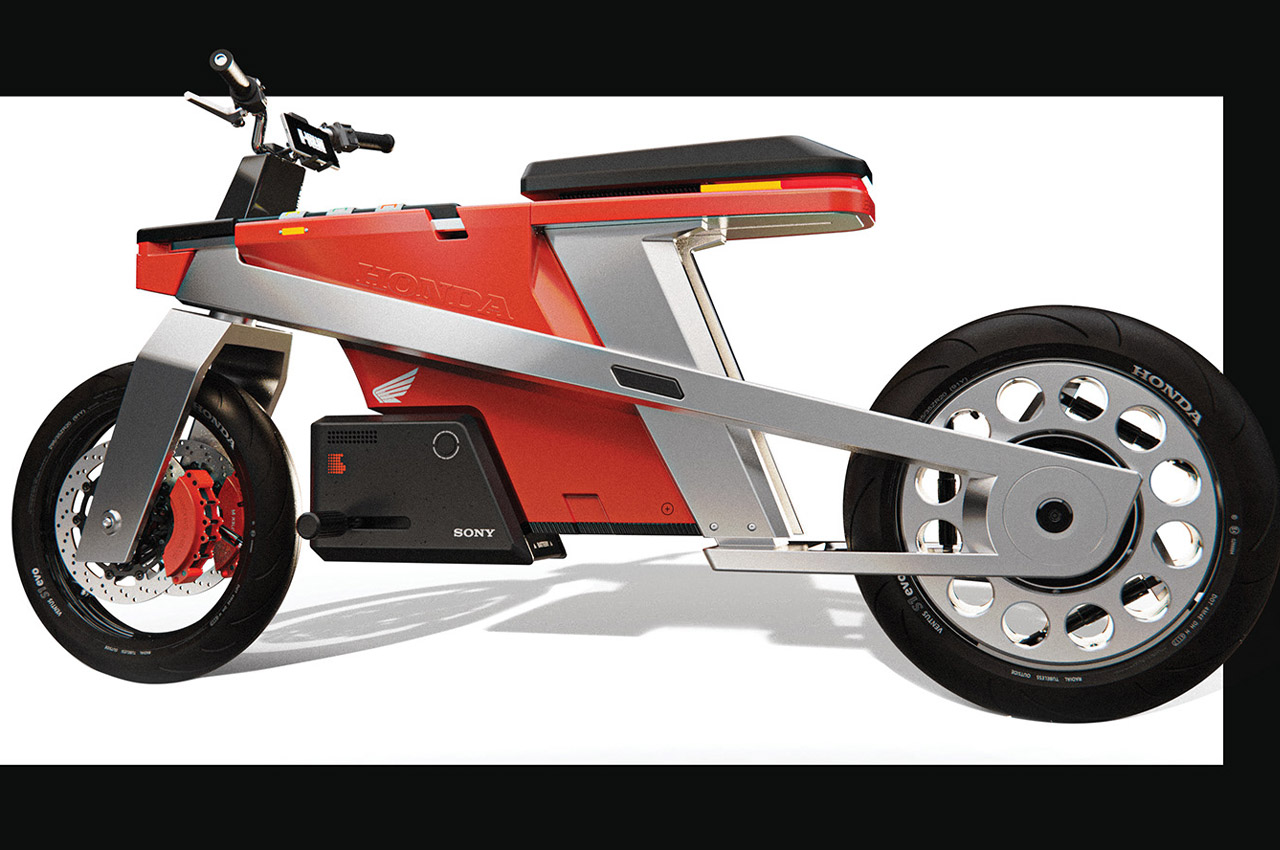
What’s more intriguing is the ability of the bike frame that’s initially purchased to be displayed in their homes during seasons when biking is not such a good idea. Extreme winters and monsoons for instance. The barebone frame can be fitted with the required modules focused on either style, performance, agility or both. Users can either choose the E-Volve to be a café racer or a sports racer depending on what the driving conditions are or the skill level of the rider.
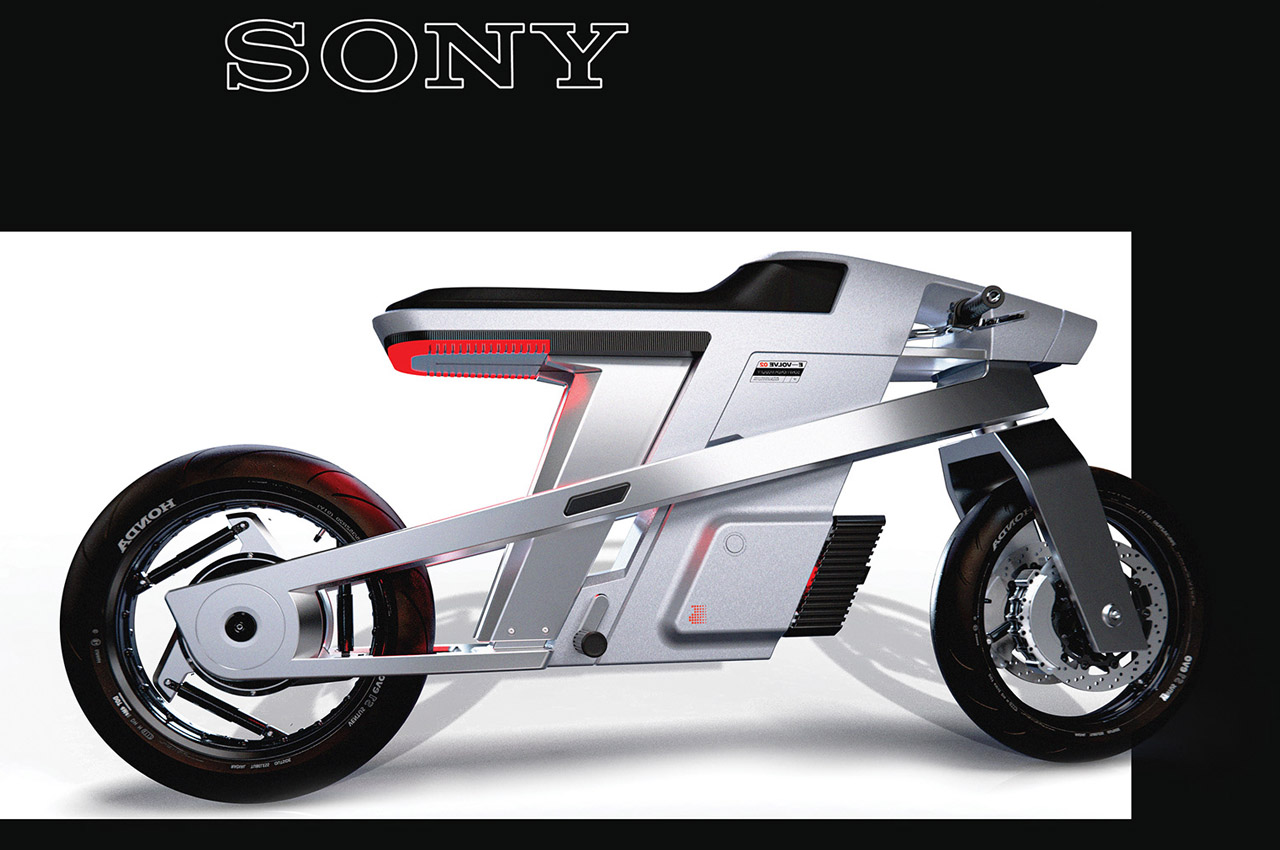
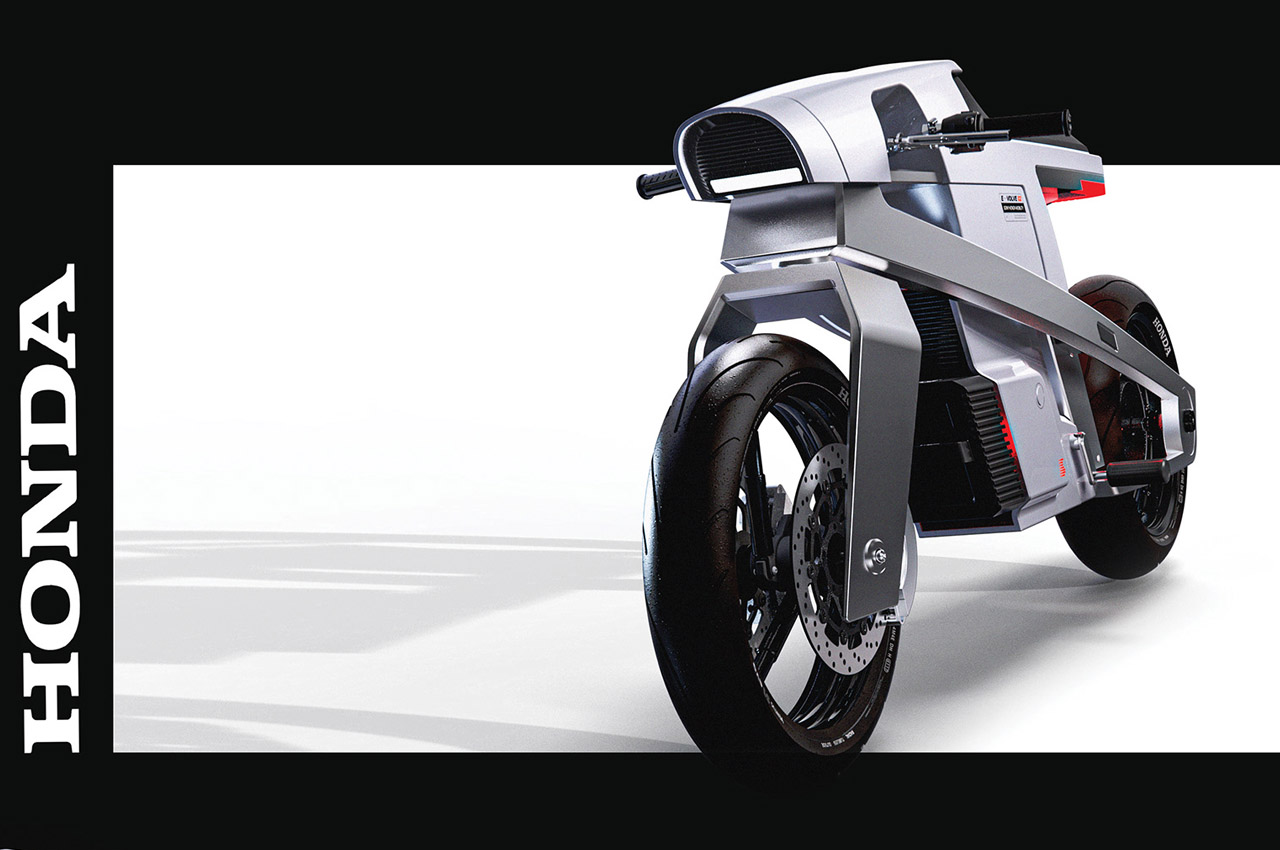
The wheels on the electric bike can be customized to have a hydraulically controlled independent suspension system controlled by a dedicated motor on the inside. This gives superior ride comfort and the ability to tweak the resultant pressure level on the wheels. According to the designer, the companion app helps the rider in setting the skill level of riding so that precise recommendations can be made on upgrading the hardware. This way you only drive a bike that’s tailored for your permissible limits and nothing more for road safety.
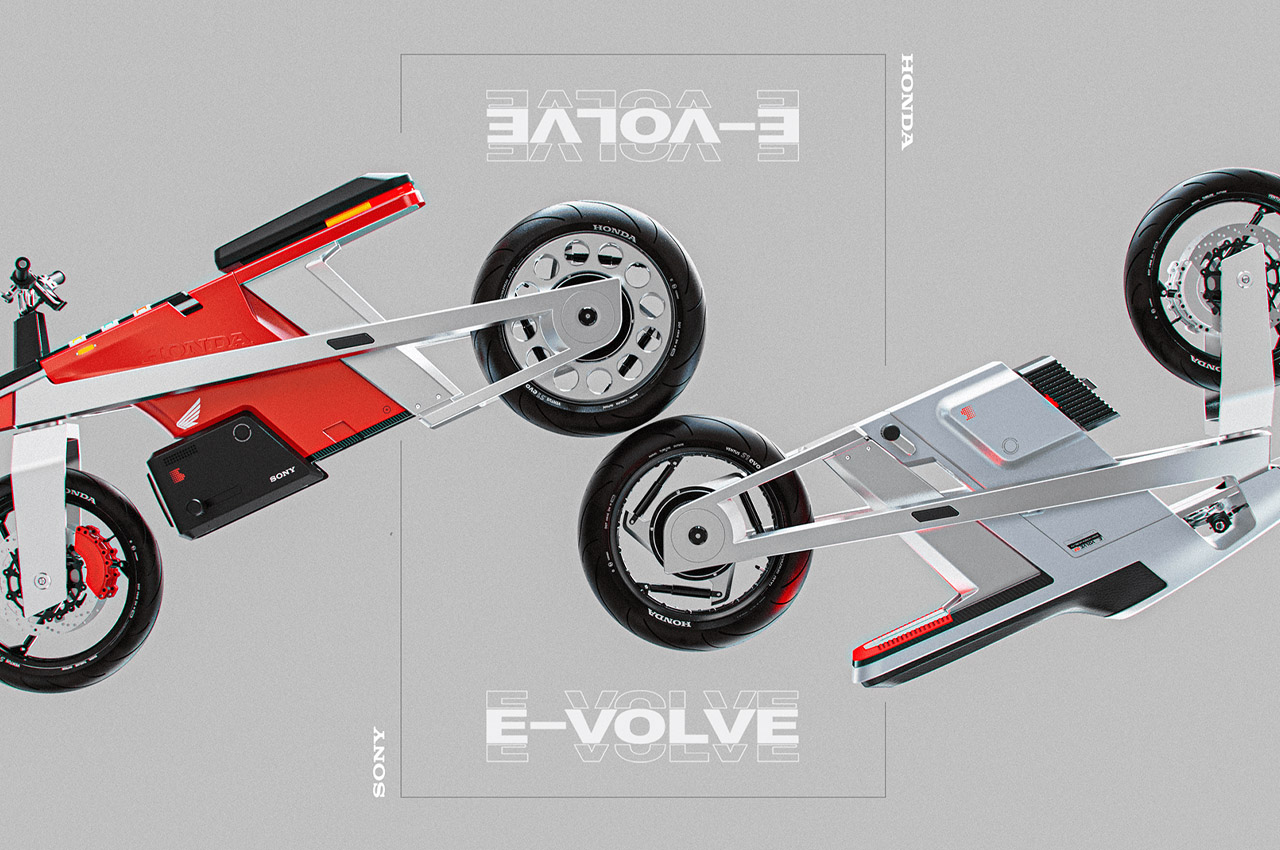
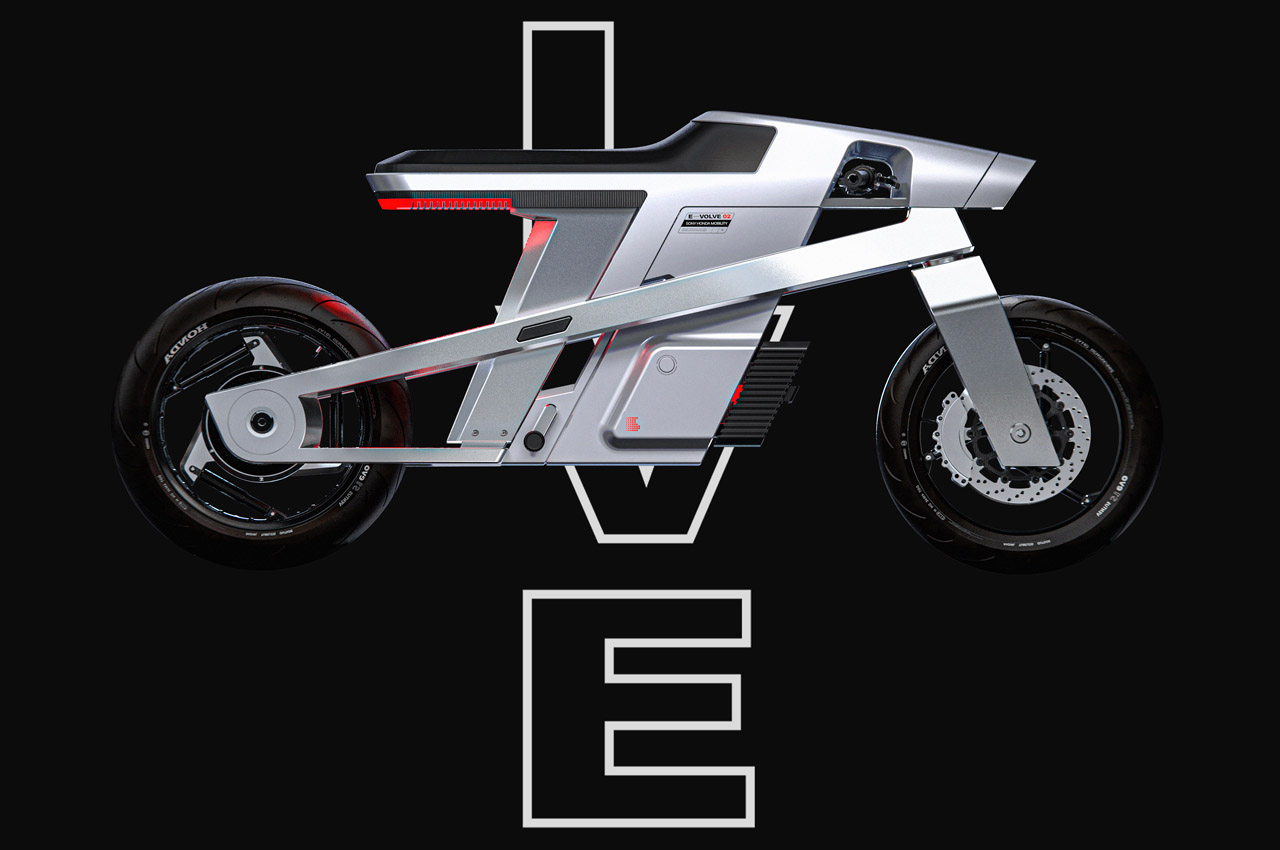
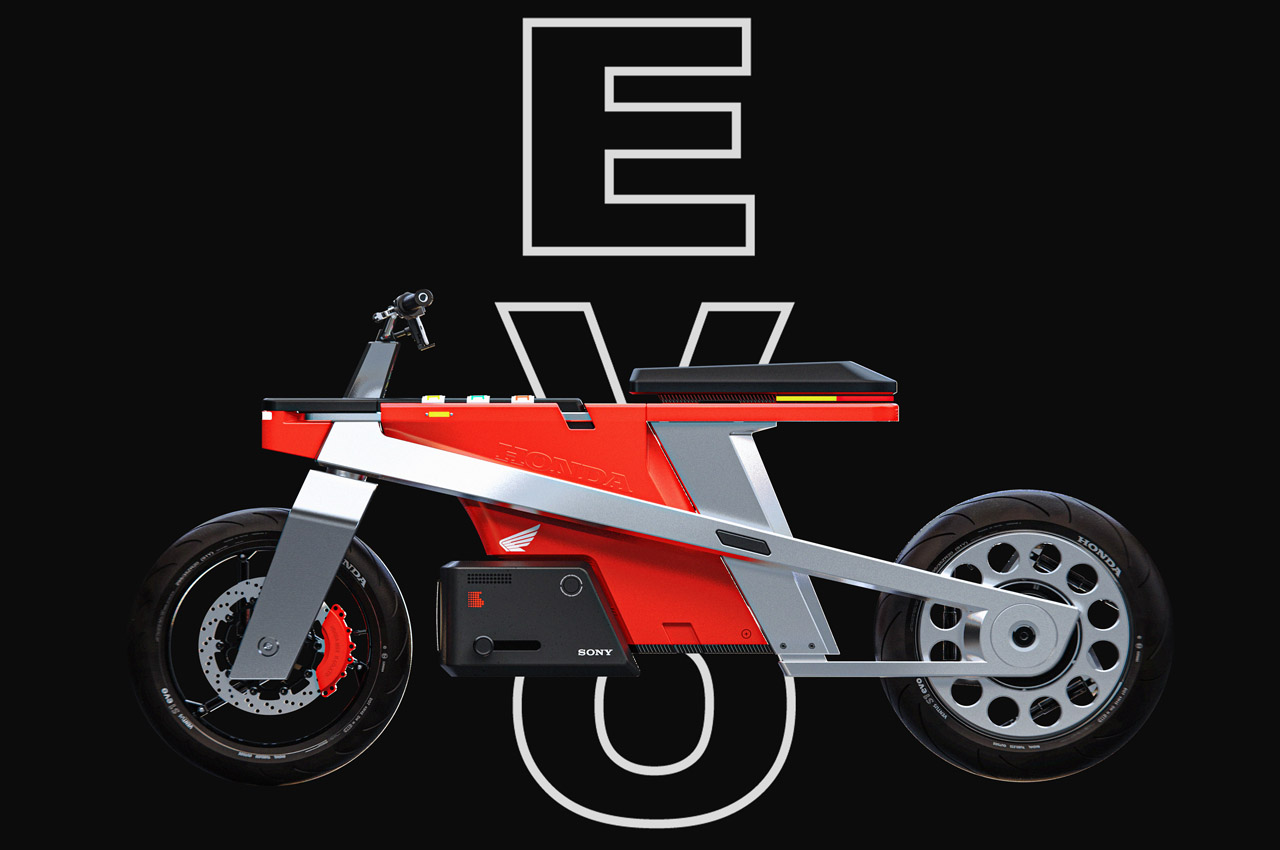
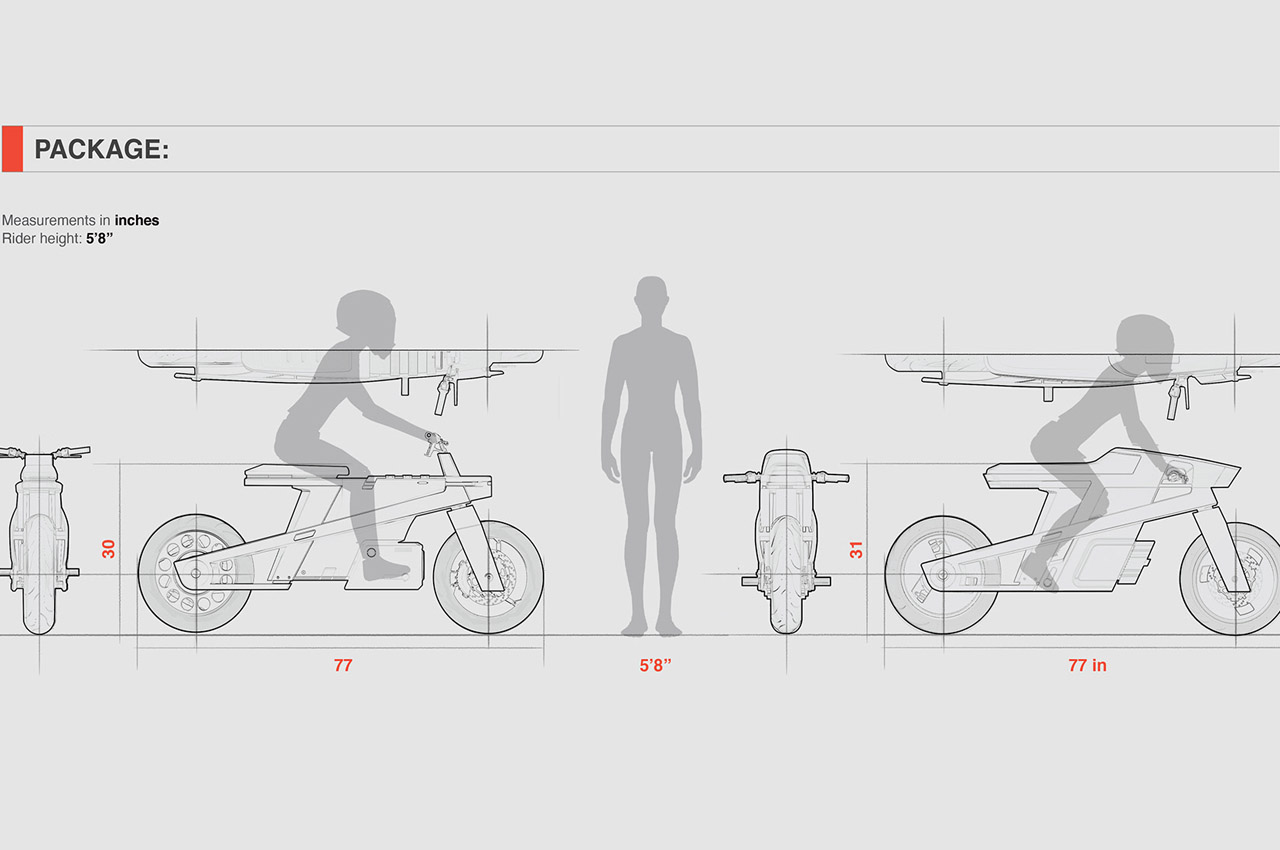
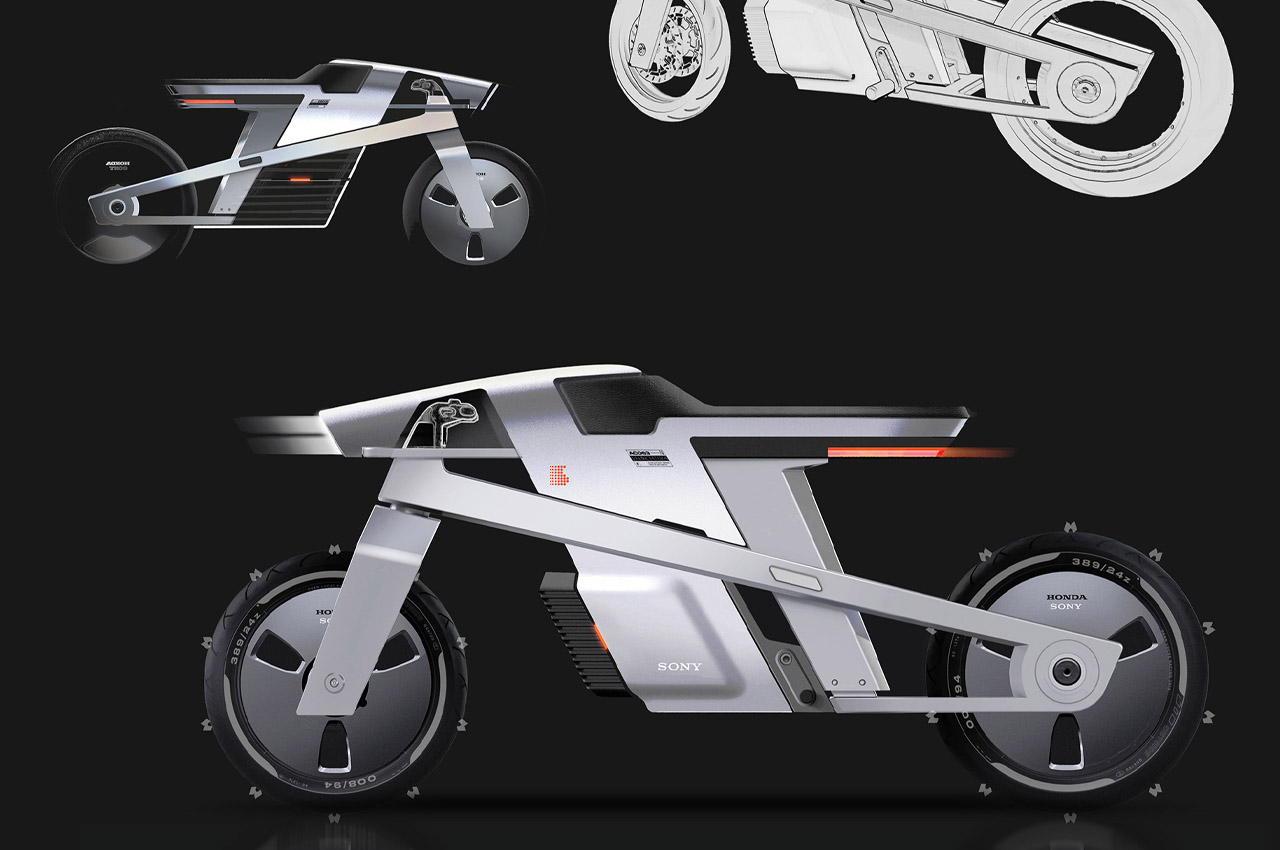
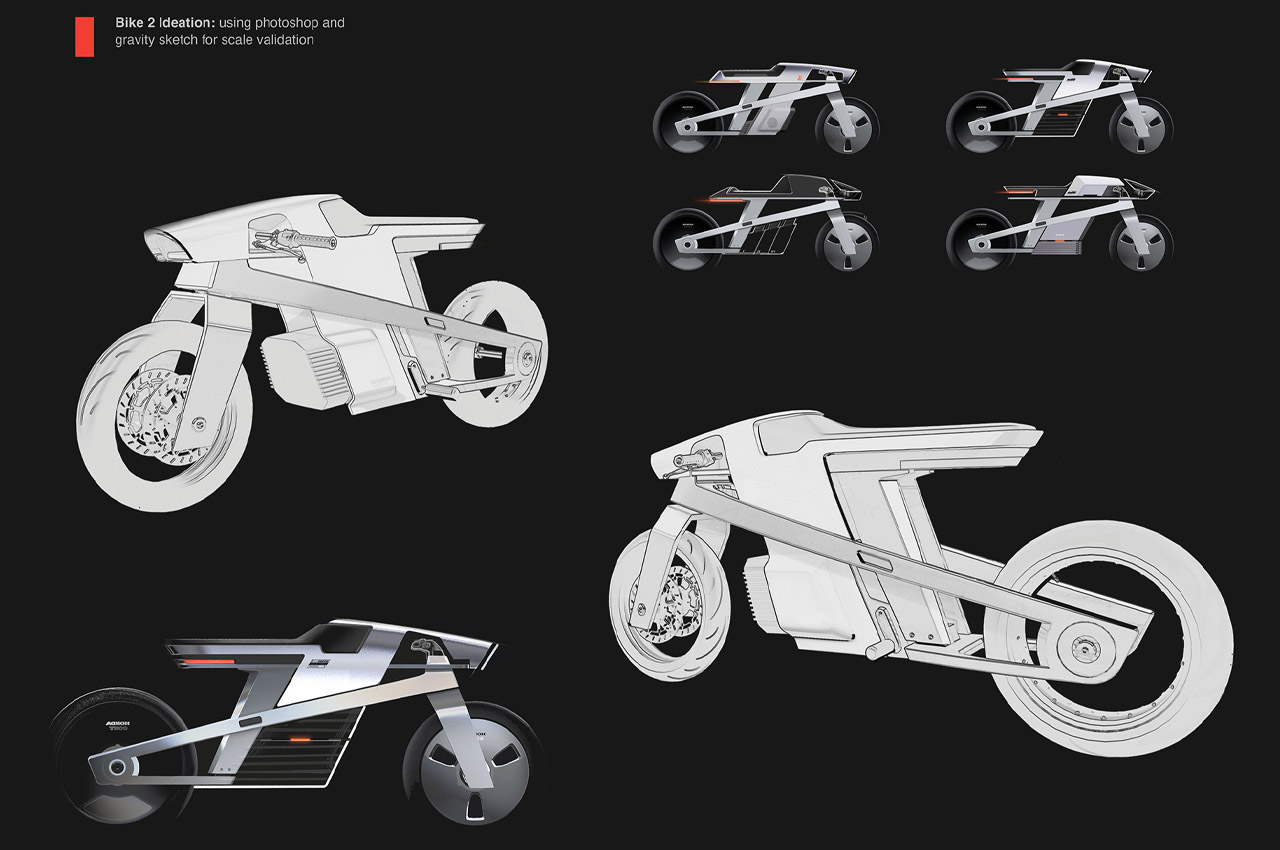
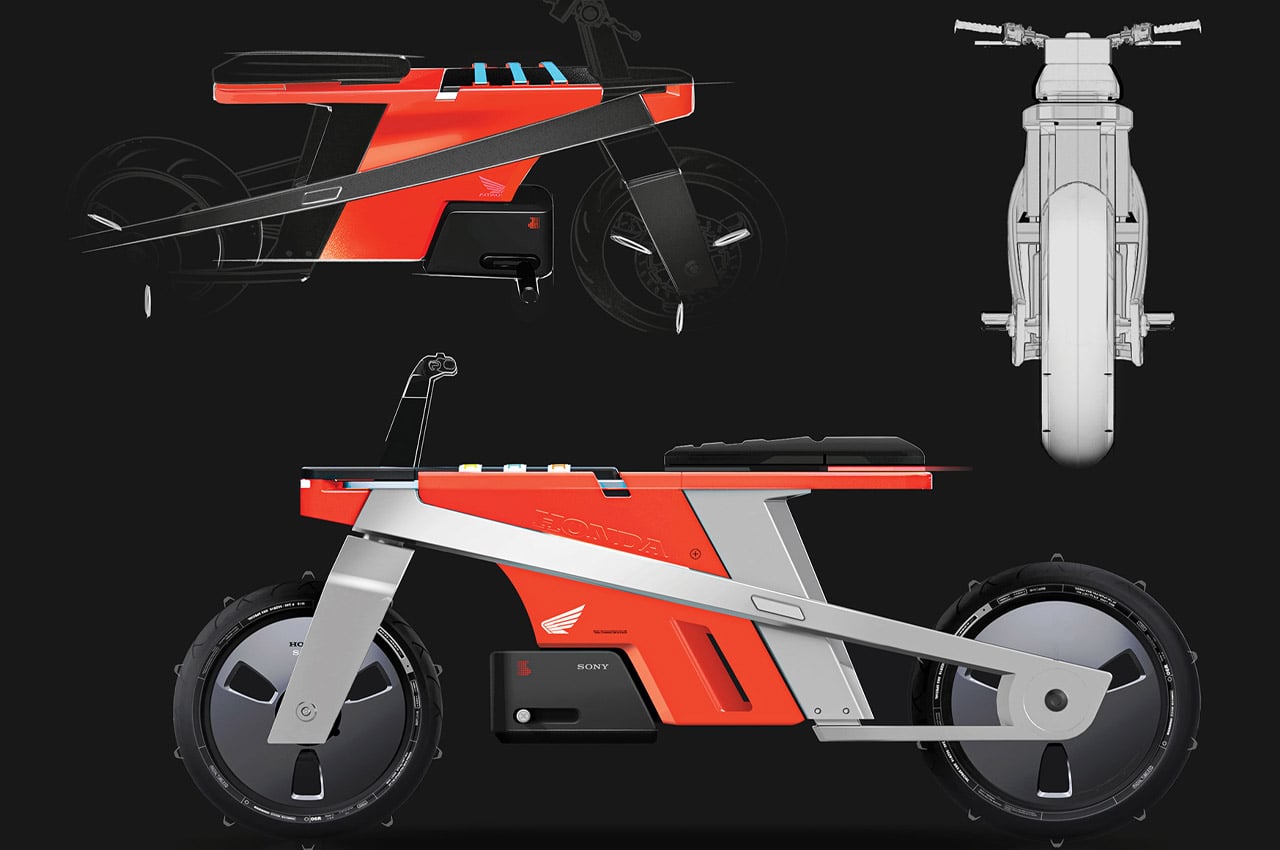
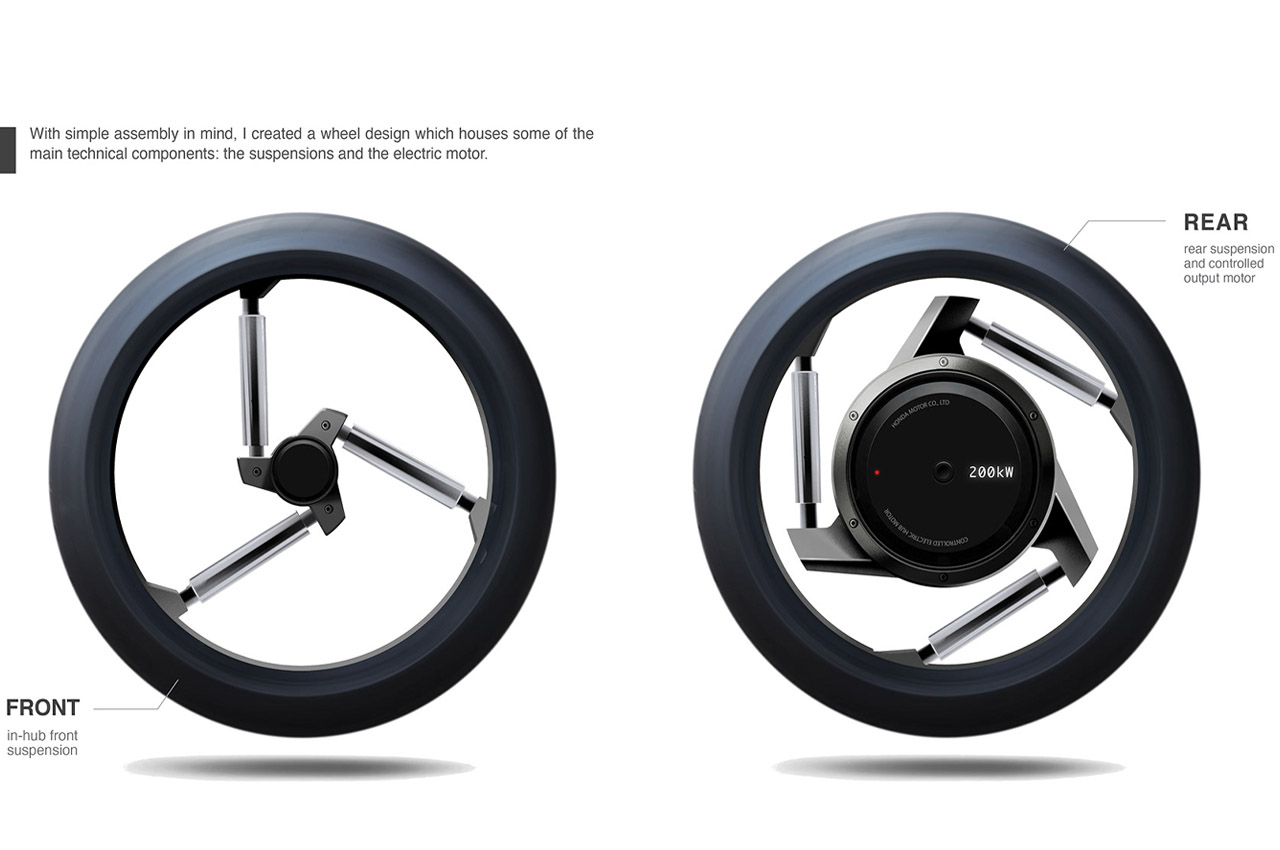
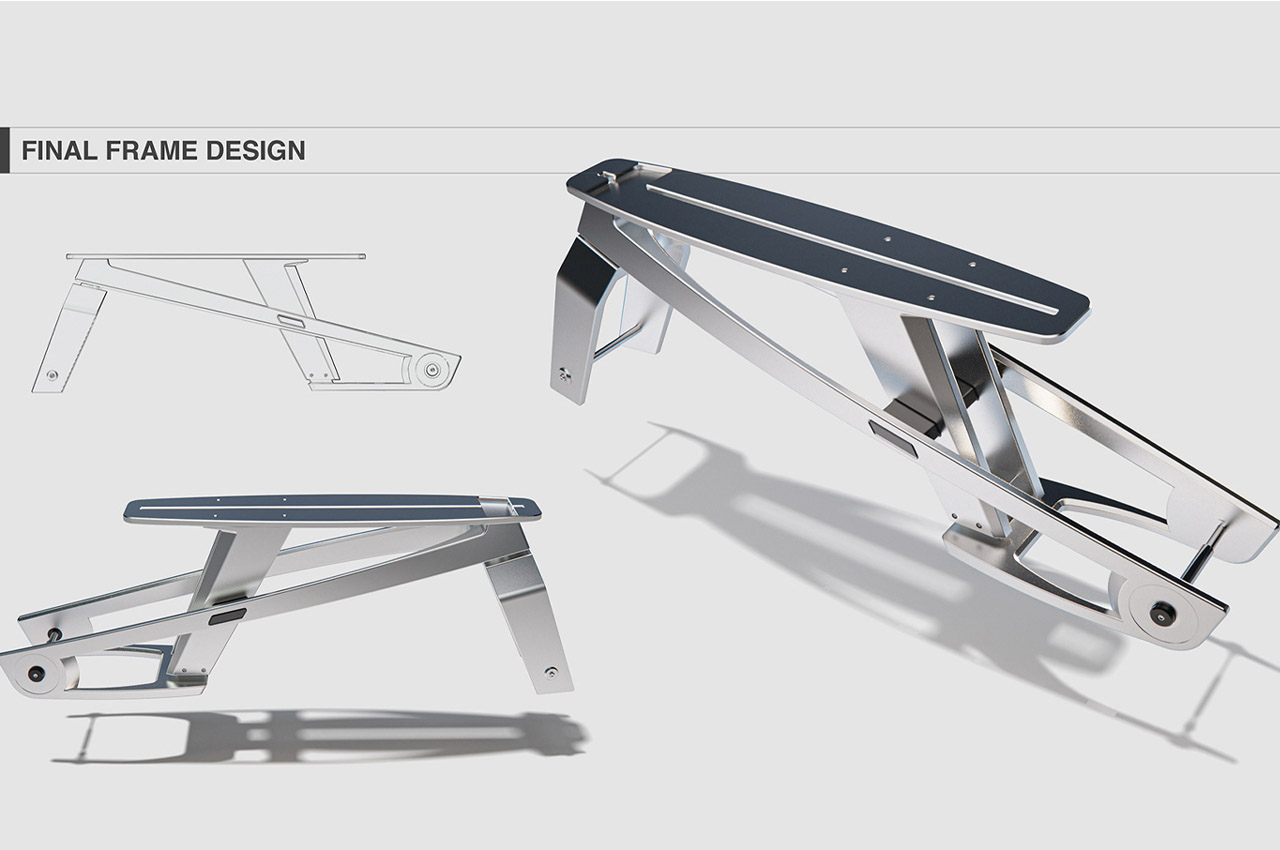
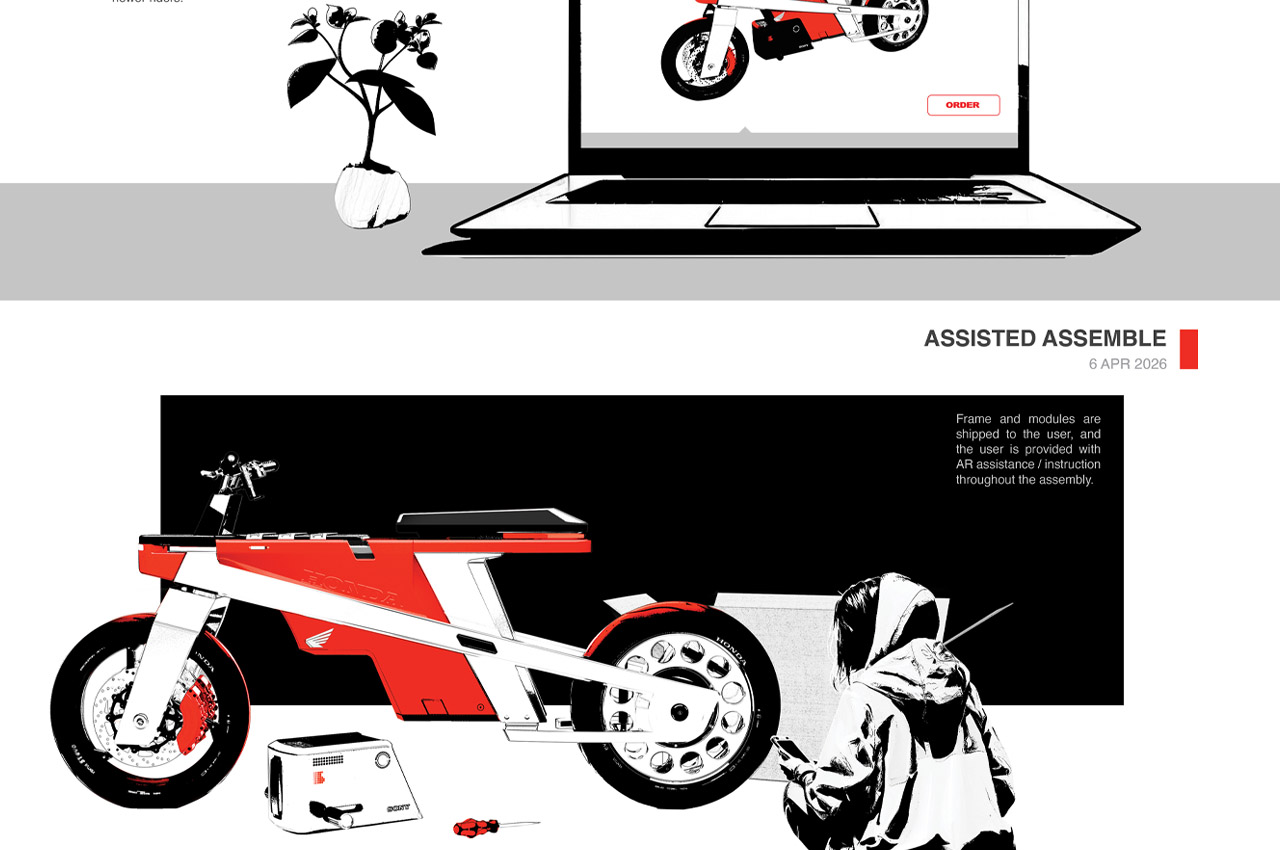
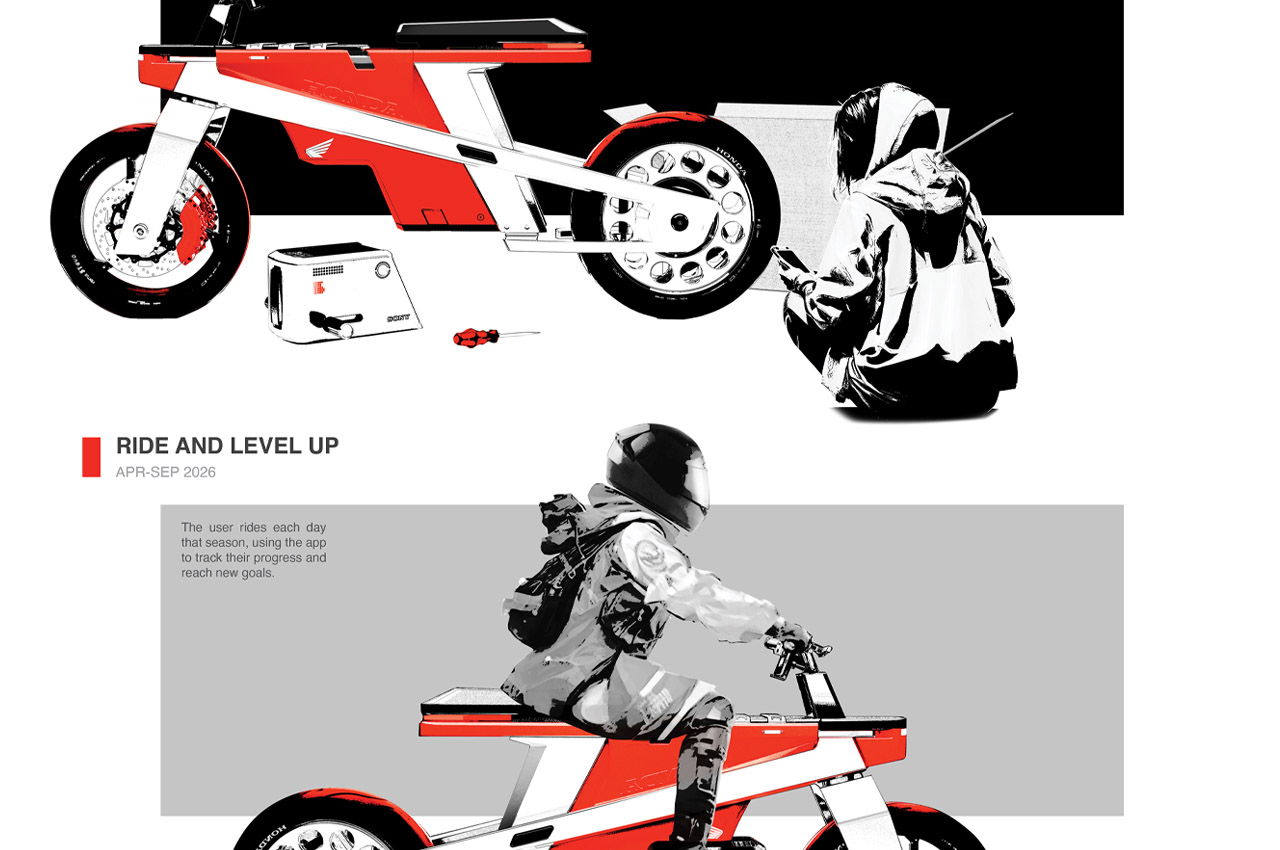
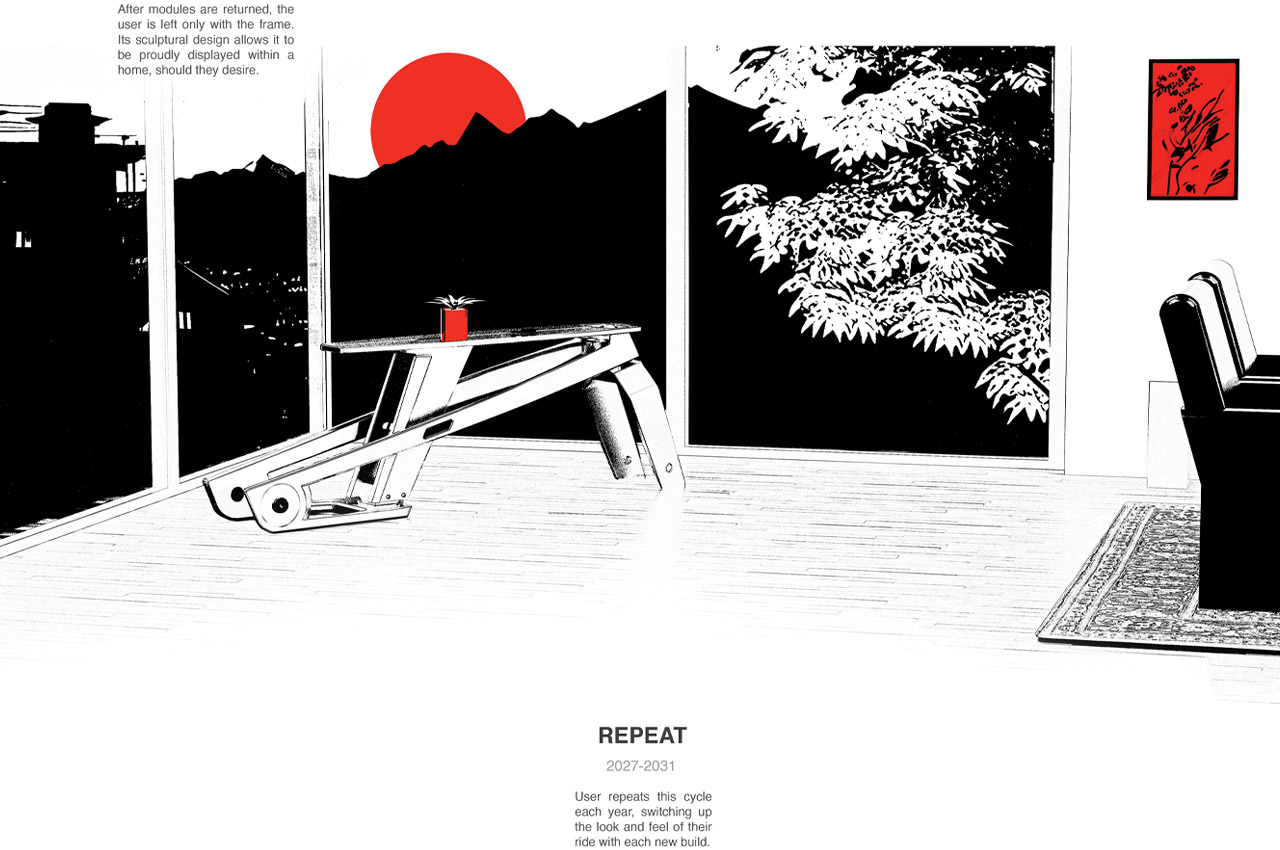
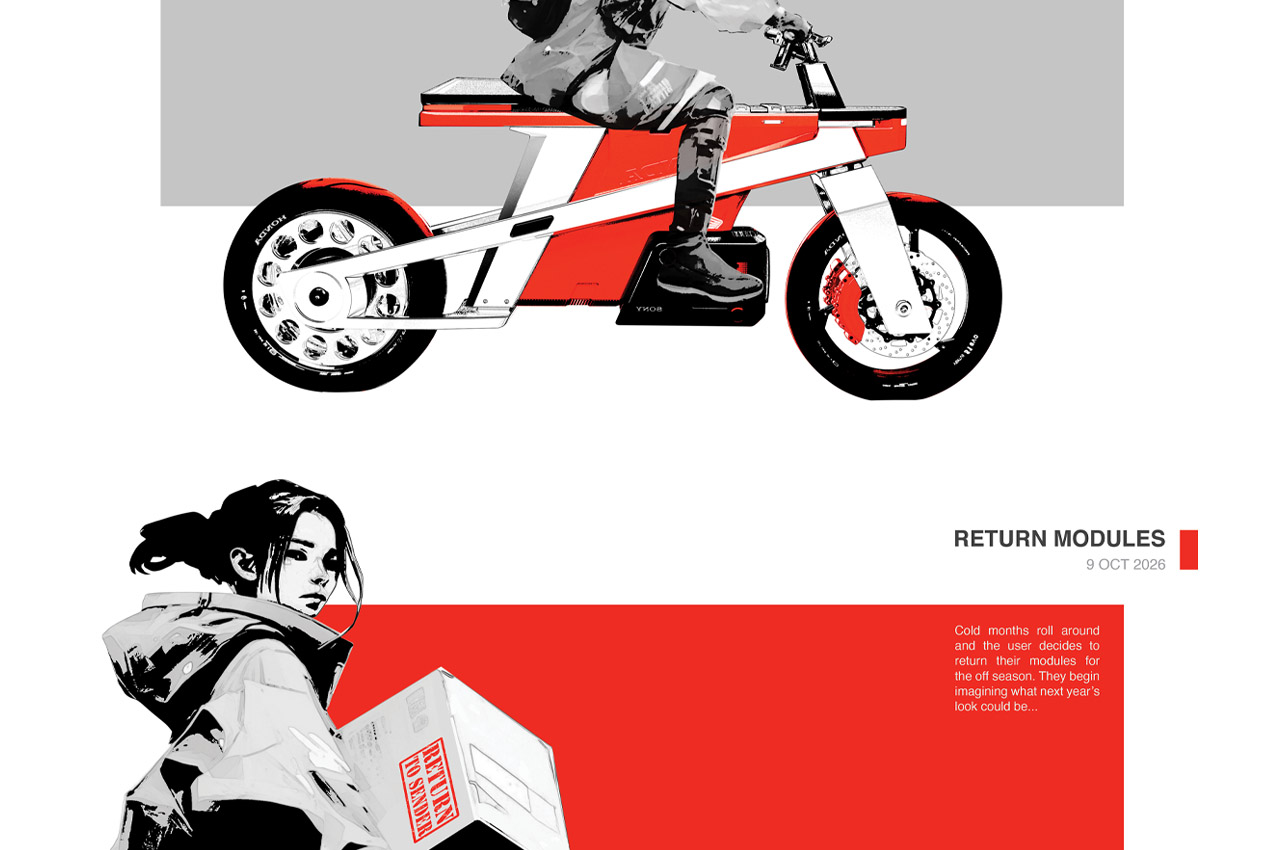
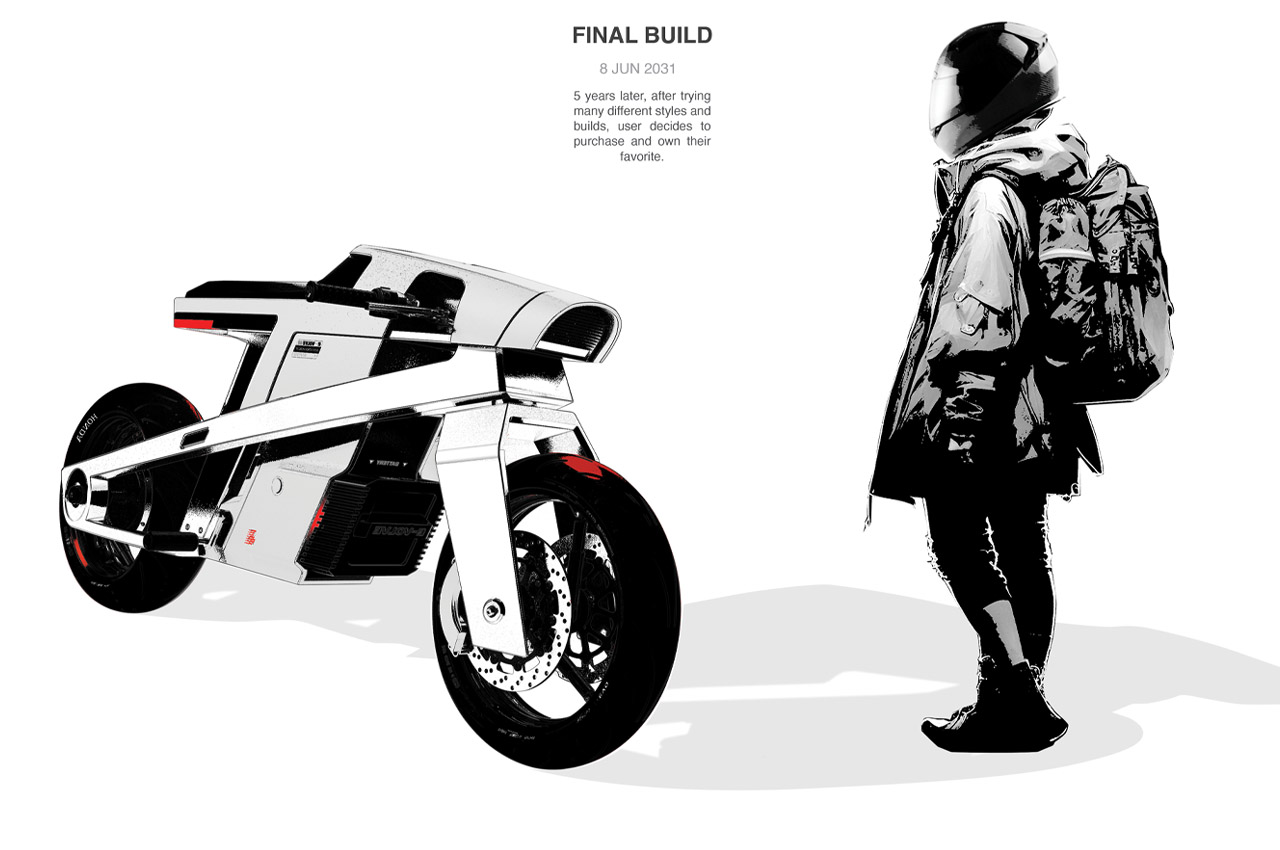
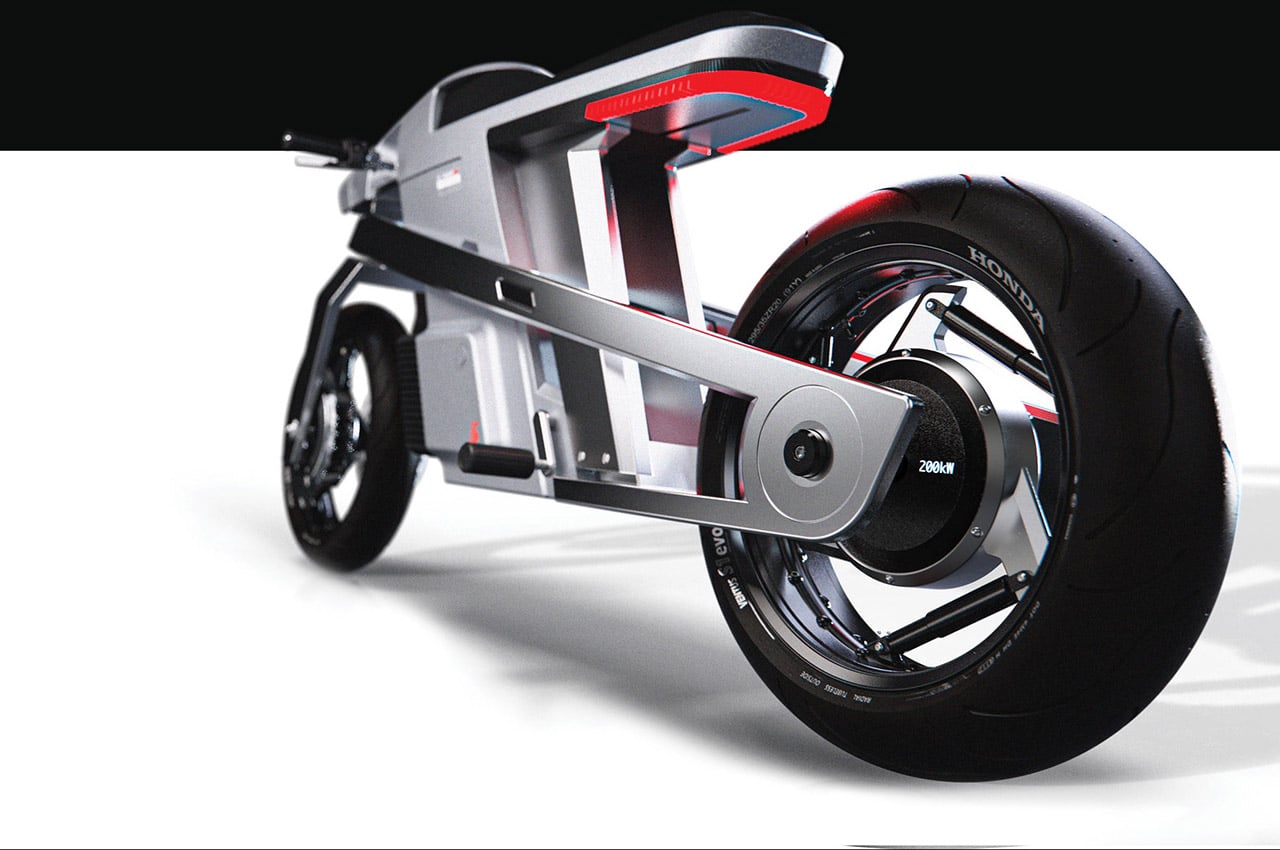
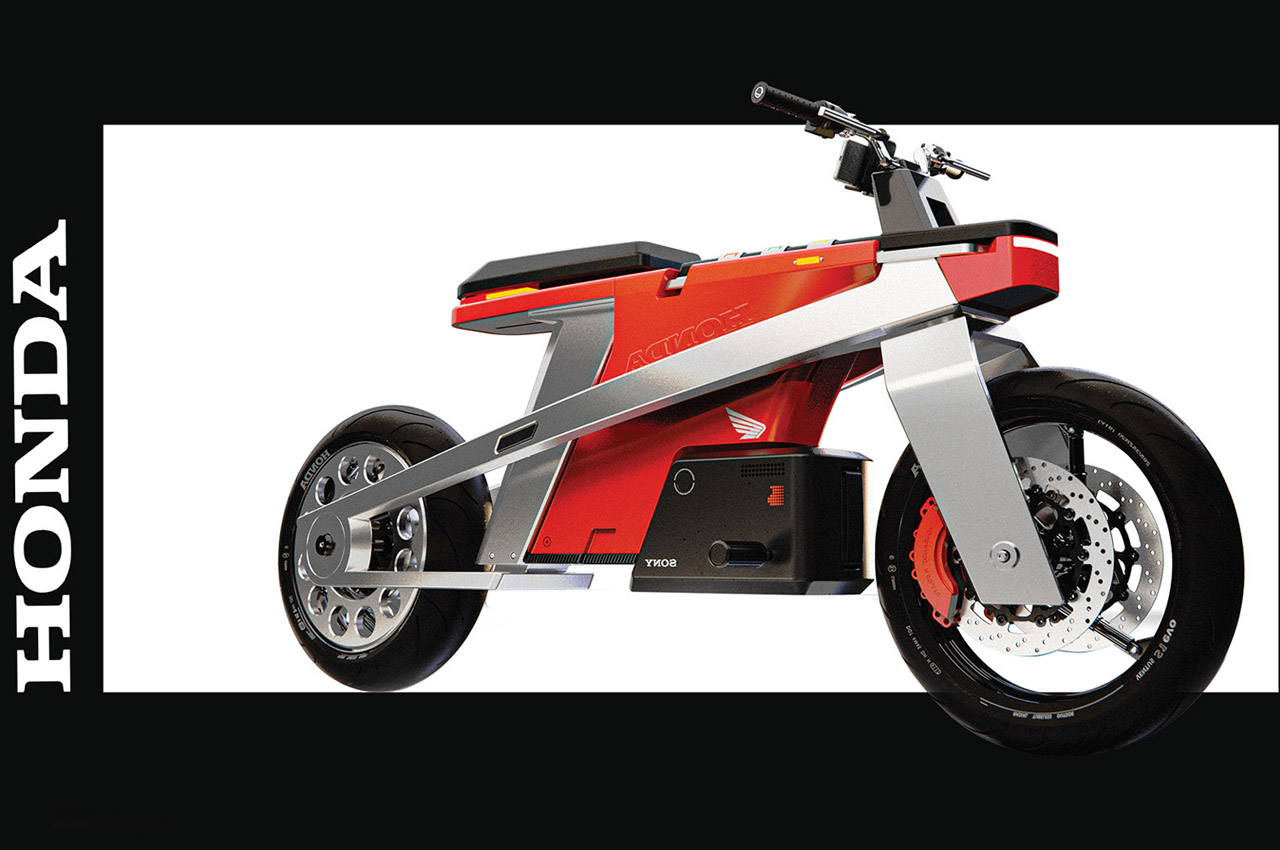
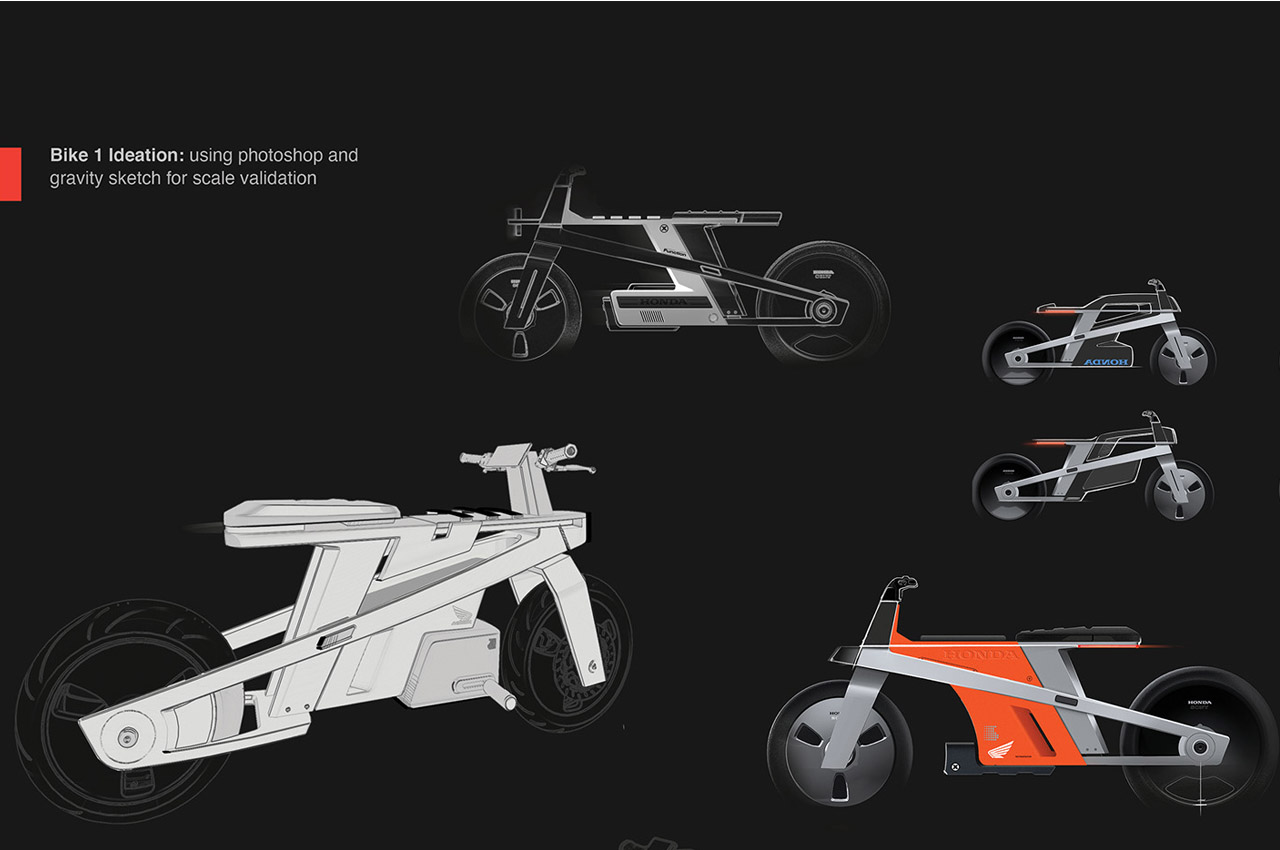
The post Sony x Honda E-Volve concept evolves with the riders skill level and preferred driving modes first appeared on Yanko Design.
Slowly and surely the world has been moving towards clean energy alternatives. People have been abandoning dirty energy, especially petrol and diesel-ridden vehicles, for smarter and cleaner EVs, and other solar energy products. However, an issue that EVs often pose, is the issue of charging them. It can be challenging to find charging stations frequently and in convenient locations, but this is where these intriguing ‘Solar trees’ come into the picture. London-based SolarBotanic Trees created these sleek innovative trees designed to power EV Charging stations!
Designer: SolarBotanic Trees
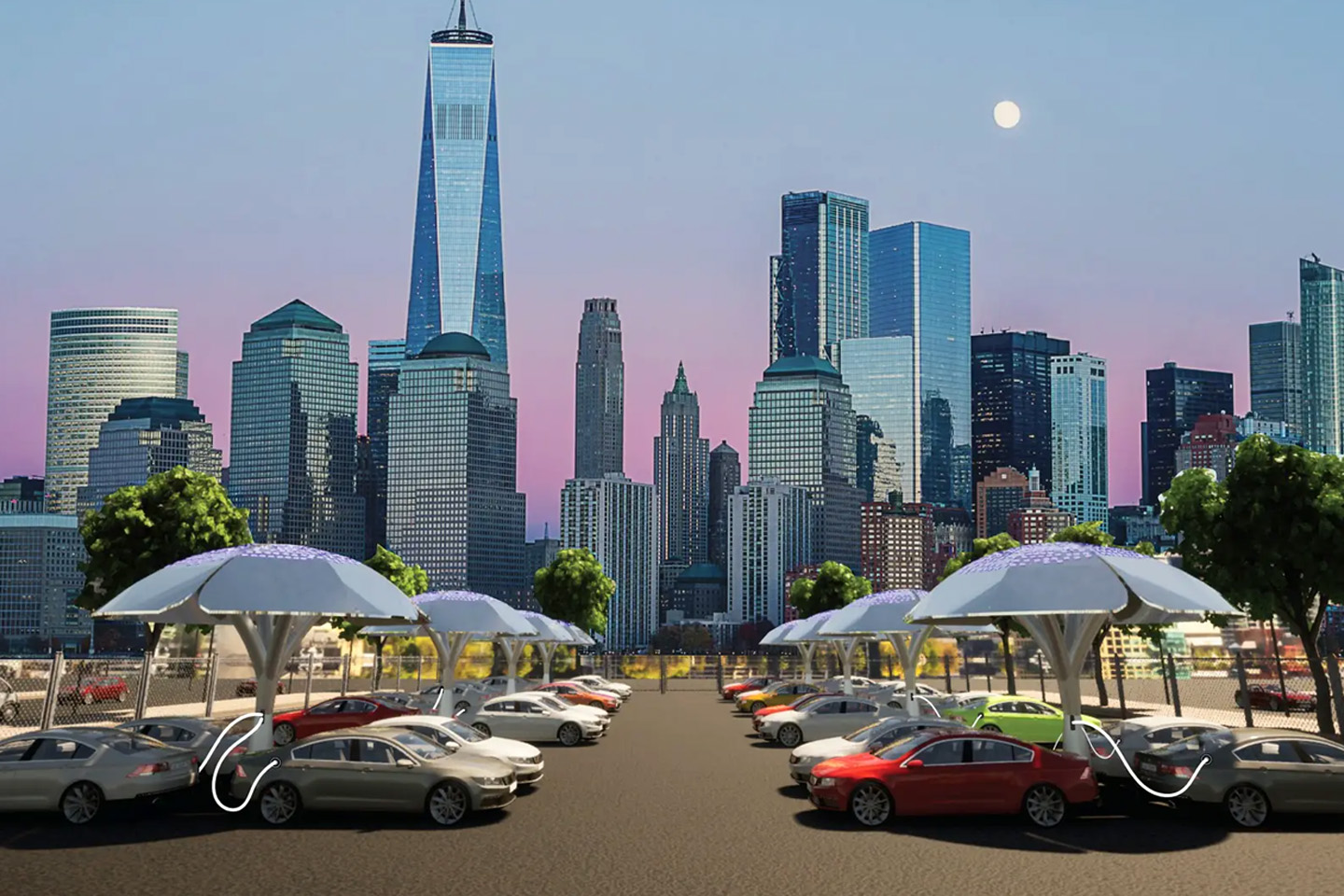
The London-based company launched the prototype for the trees in September 2022, and its first generation of solar trees will finally be available in the coming few months! SolarBotanic developed these trees in collaboration with a London-based business support program Co-Innovate. The two teamed up and used academic and innovation resources from the surrounding universities and facilities. The unique-looking trees have been equipped with solar panels. These solar panels or nano photovoltaic ‘leaves’ form the dome or the canopy of the trees. They absorb energy from sunlight and transform it into electrical energy.
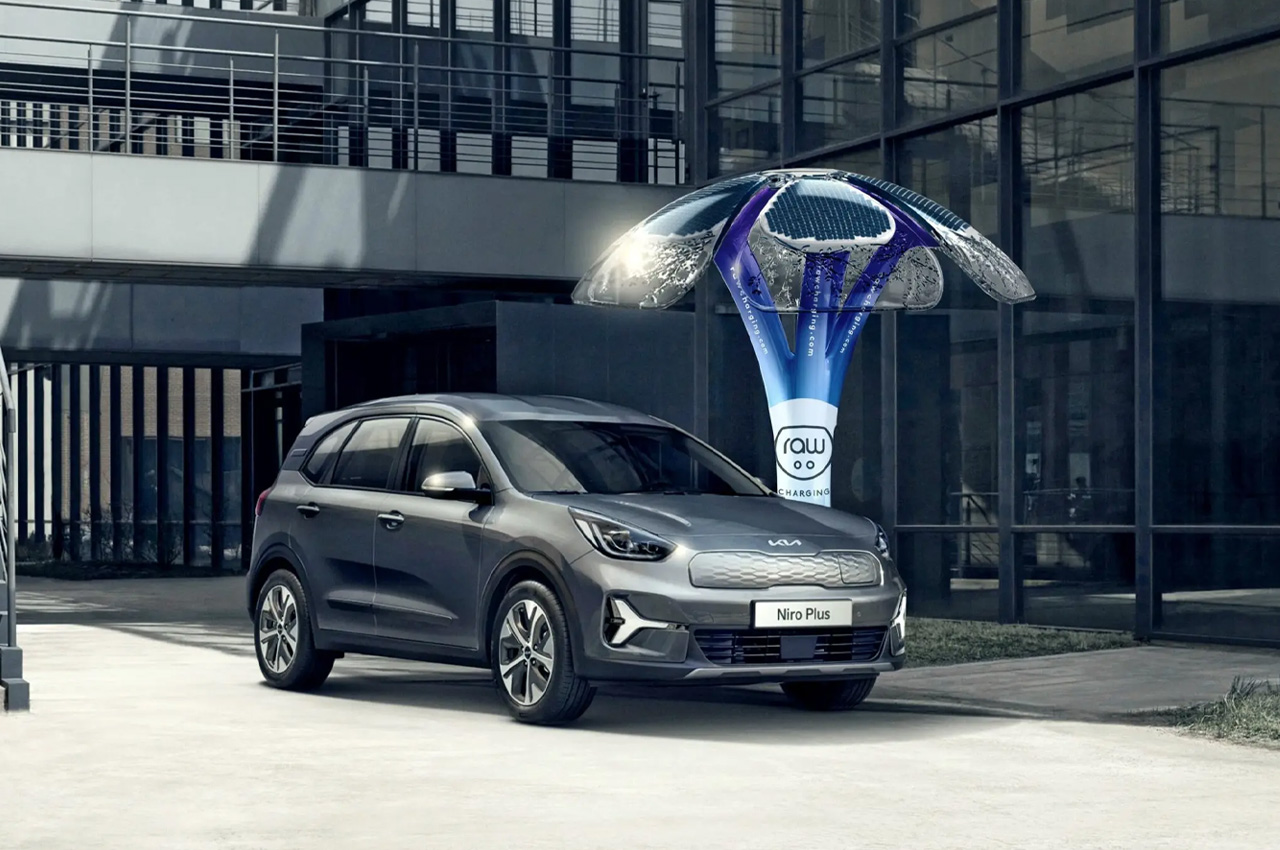
That collected electrical energy is then stored in the trees’ AI-driven energy storage and management system, which releases this power and manages it. There are other simple solar trees on the market, for example, Smartflower – a rather large daisy-shaped solar energy solution. But there are certain features that set the SolarBotanic Trees apart from similar designs on the market. First and foremost, the Smartflower has a four-kilowatt system, while the SolarBotanic Trees have been equipped with a five-kilowatt capacity, a larger capacity than other trees available today. Also, the SolarBotanic Trees will have a lower and more economical price point, which will make the product more accessible to the masses.
The SolarBotanic Trees will provide solar energy solutions for homes, businesses, and commercial parking spaces. The commercial version or the SolarBotanic Tree “v01” will be available in mid-2023 and version “v02” with an energy management system (EMS), battery storage, and rapid EV-charging system will be available later in the year. A third version the “v03” will be available in 2025 – it will use an advanced combination of wind and solar power generation modules.
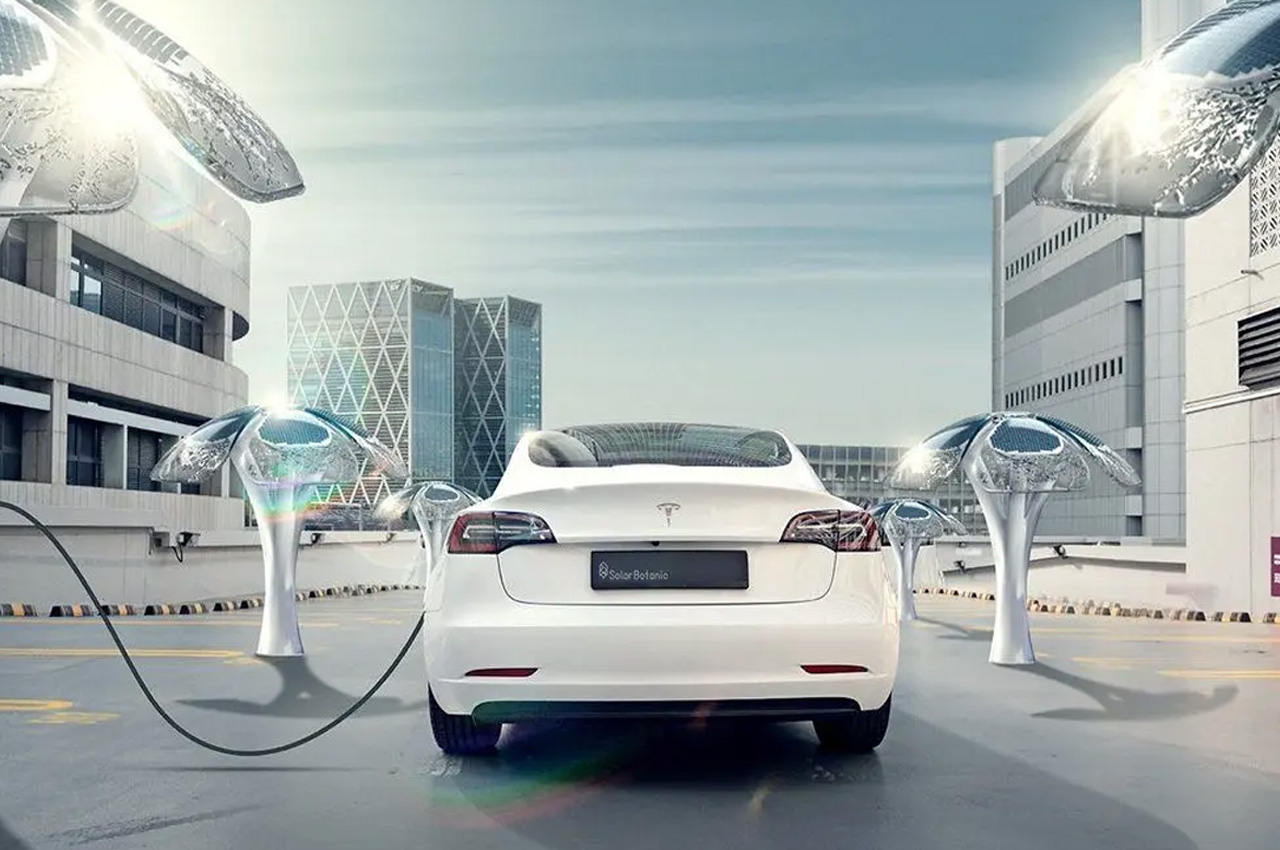
The post These dome-shaped solar trees use AI to charge electric vehicles and combat the issue of EV charging first appeared on Yanko Design.
The pint-sized Honda Motocompo scooter manufactured in 1981 could easily fit inside the boot of a car, and understandably over the years, there’ve been many iterations inspired by this design. Another resounding nod to the 49cc folding two-wheeler in the electrified era is the M One e-scooter.
Designed by Shanghai-based startup, FELO, the electric scooter is an electric Motocompo that urban riders have been longing for so long, and finally bestowed with one. The two-wheeler made its first appearance at the ongoing 2023 Tokyo Motorcycle Show which apparently is also the 50th anniversary of the mega event.
Designer: FELO
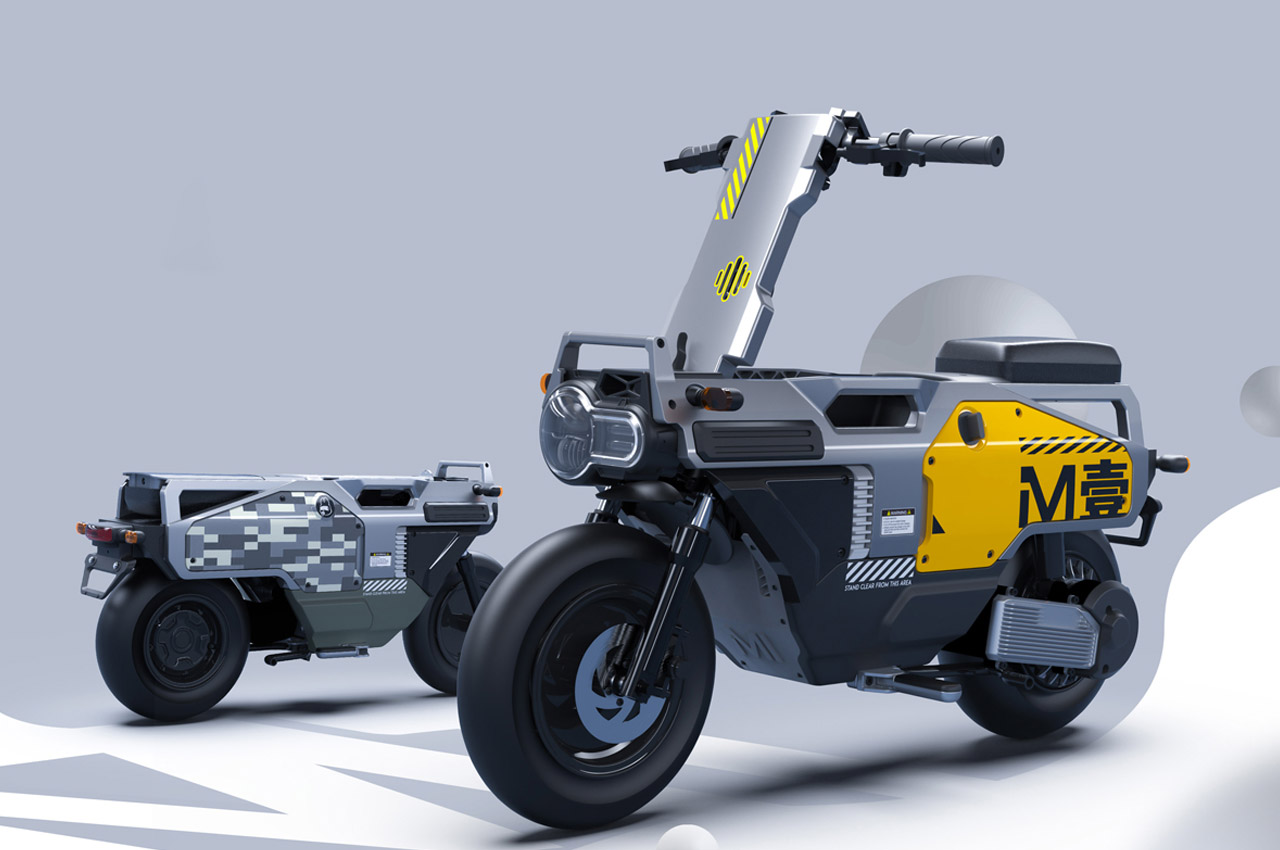
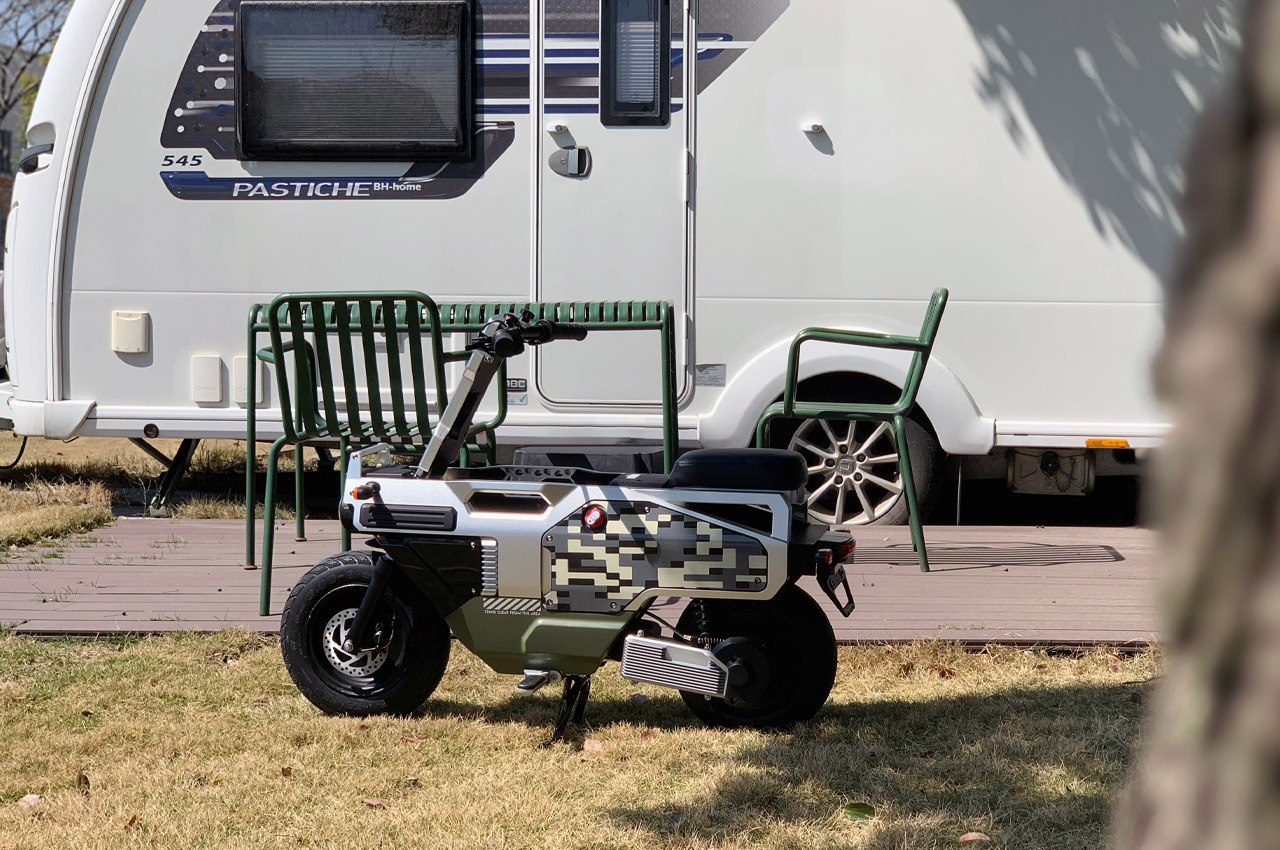
The compact moped is a tad lighter than the Motocompo weighing just 82 pounds and similar in dimensions measuring 45.6 inches x 22 inches x 33.8 inches. Of course, it gets a major overhaul (for comparison’s sake) in the form of a 400-watt 1.34-hp hub motor powered by the 48V, 20-Ah Lithium-ion battery pack. Just so that you know, the battery pack has a 220VAC 50Hz outlet that can power up your gadgets or household appliances courtesy of the V2L (vehicle to load) capability.
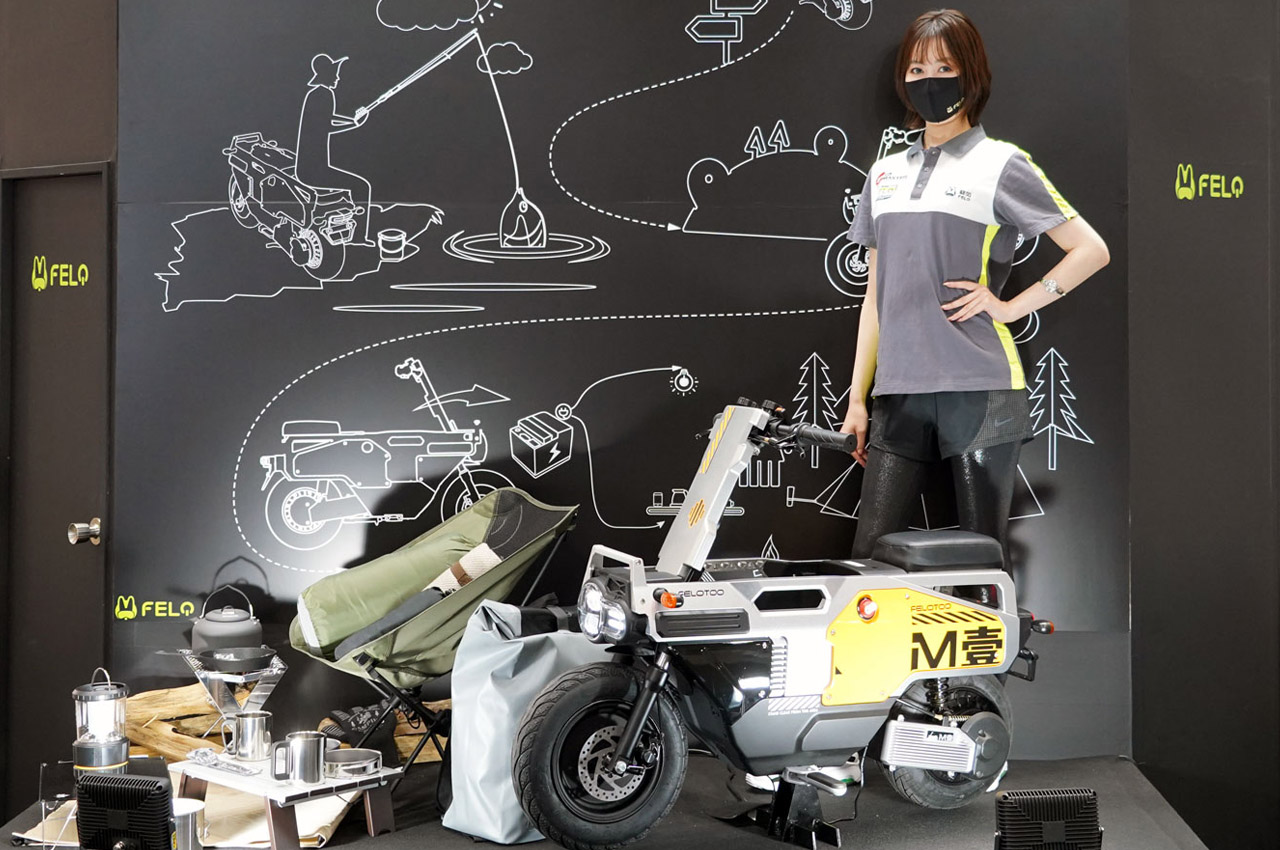
According to FELO, the M One will be able to churn out a range of 62 miles on one full charge if the rider maintains an average speed of 15 mph. Although there is no mention of the top speed yet, the e-bike could max out at around 20-30 mph on the speedometer. That’s very similar to what Motocompo could eke out, and no one’s complaining since top speeds aren’t a major talking point with such a compact set of wheels by any stretch of the imagination.
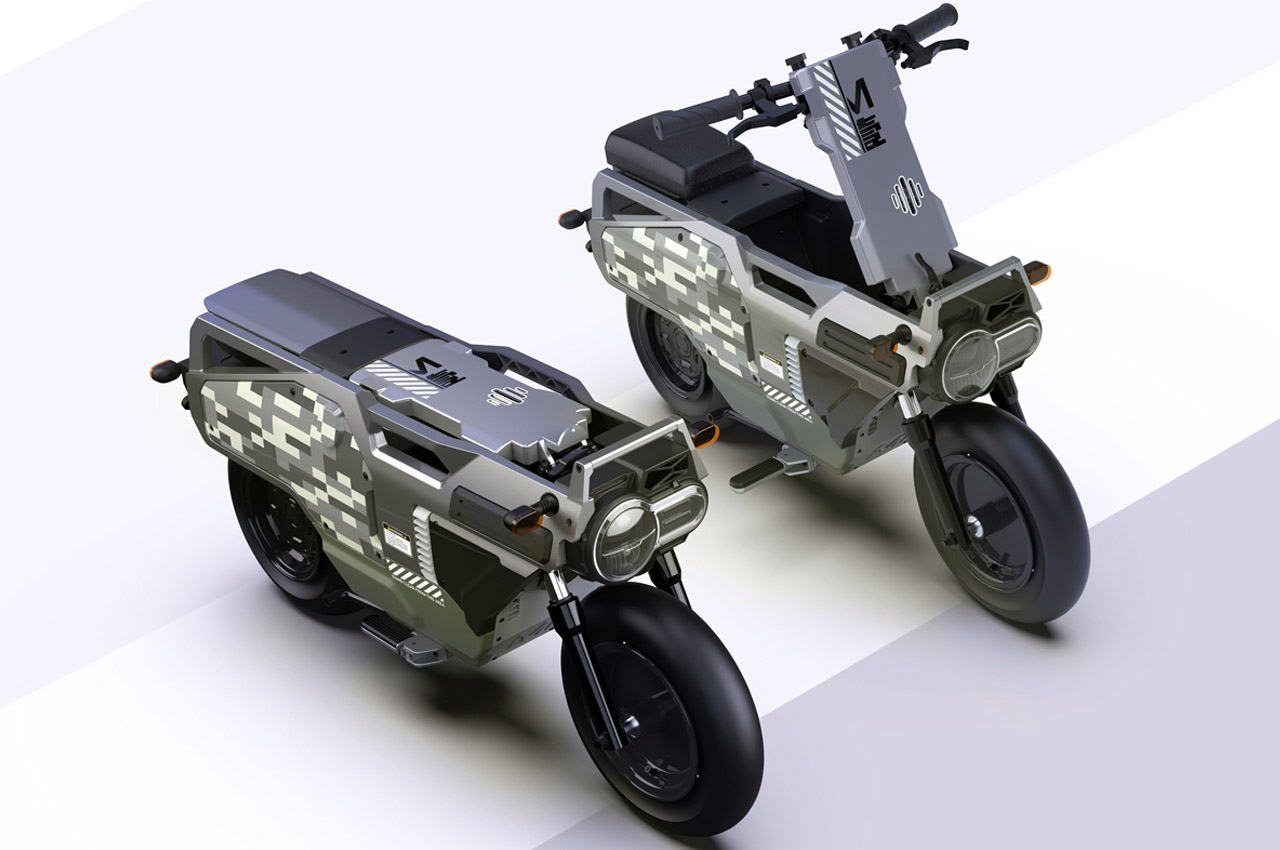
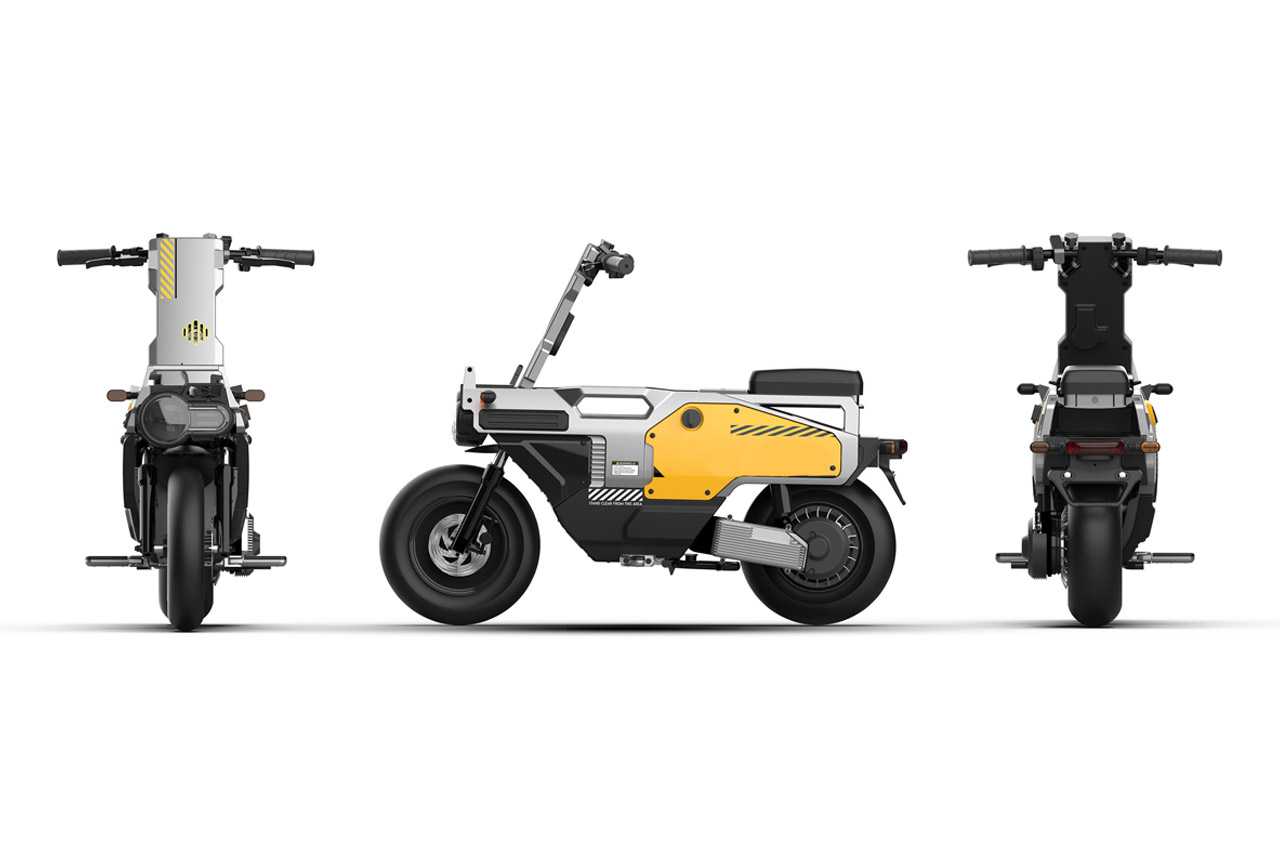
The whole point of a small folding moped is to have a commuter that can make the quick trip to the local market without getting stuck in traffic or maybe driving on congested roads that aren’t big enough for a four-wheeler or even a standard bike. That novelty of folding down the handlebars, footpegs, collapsible fork and seat into the robust magnesium-aluminum body frame, allows the M One to easily be hauled in a family car or the bed of a MUV.
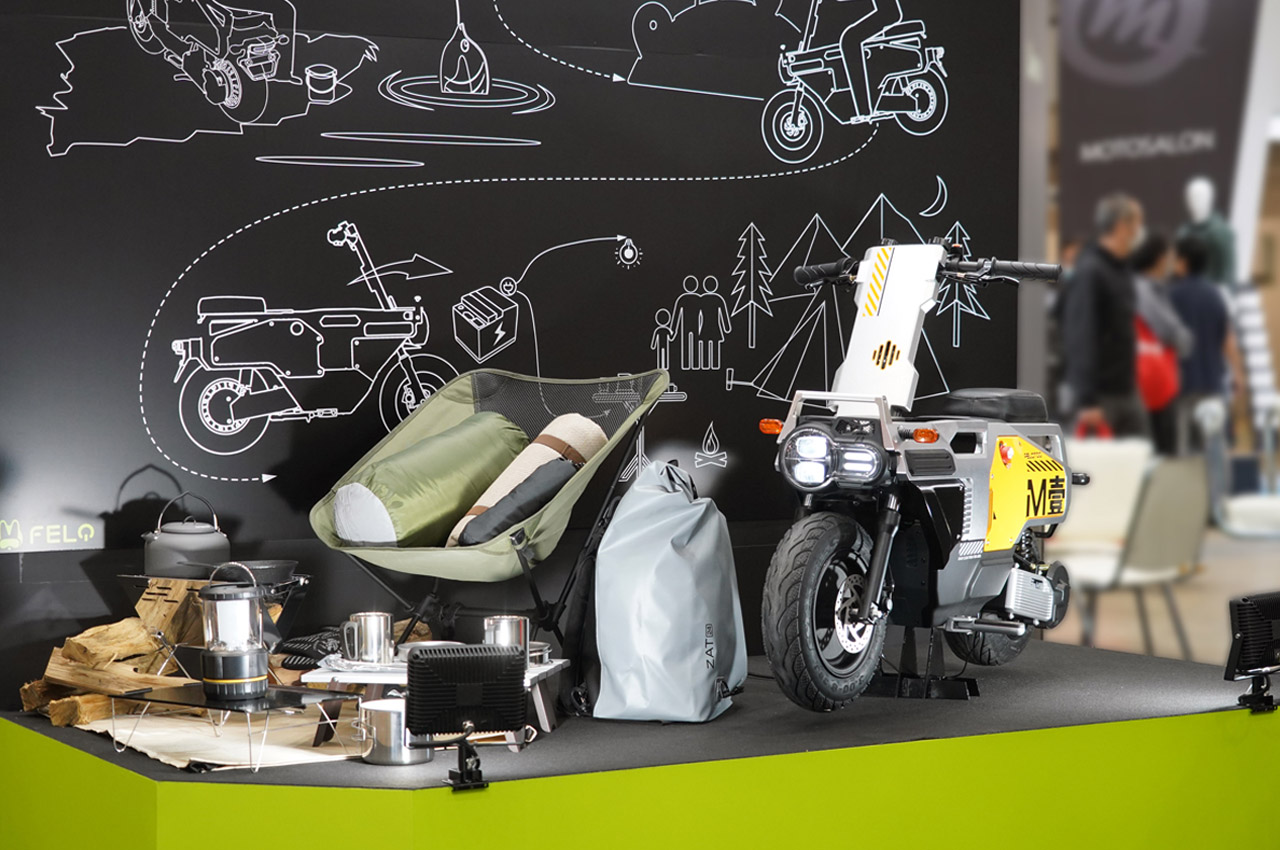
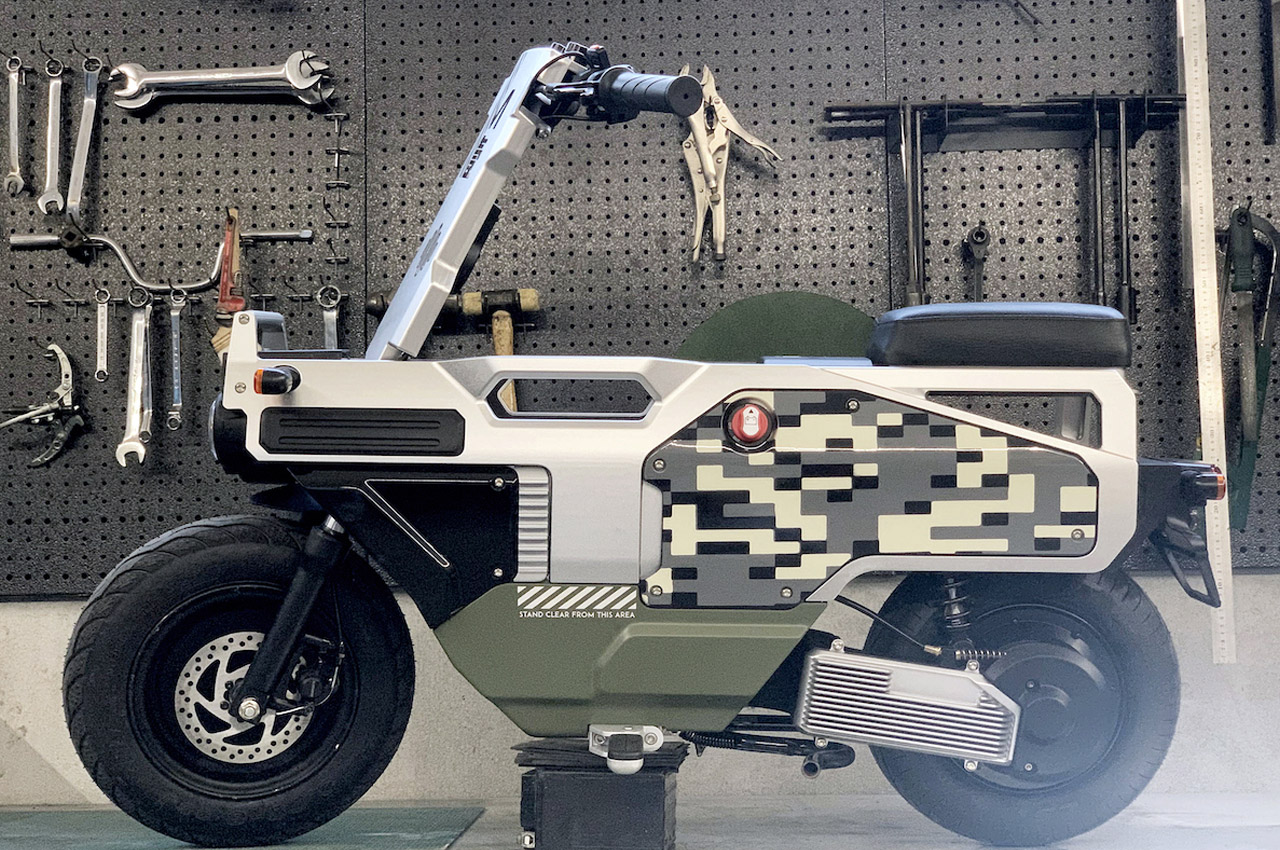
M One’s compact form factor gives it a huge advantage in urban setups and the fact that it will hit the roads in Q4 2023 – initially in China and maybe Japan as well – makes it an even more exciting prospect. The fully electric two-wheeler will be priced at around $2,900 which is not a bad deal for times when city commuting demands compact vehicles like this one.
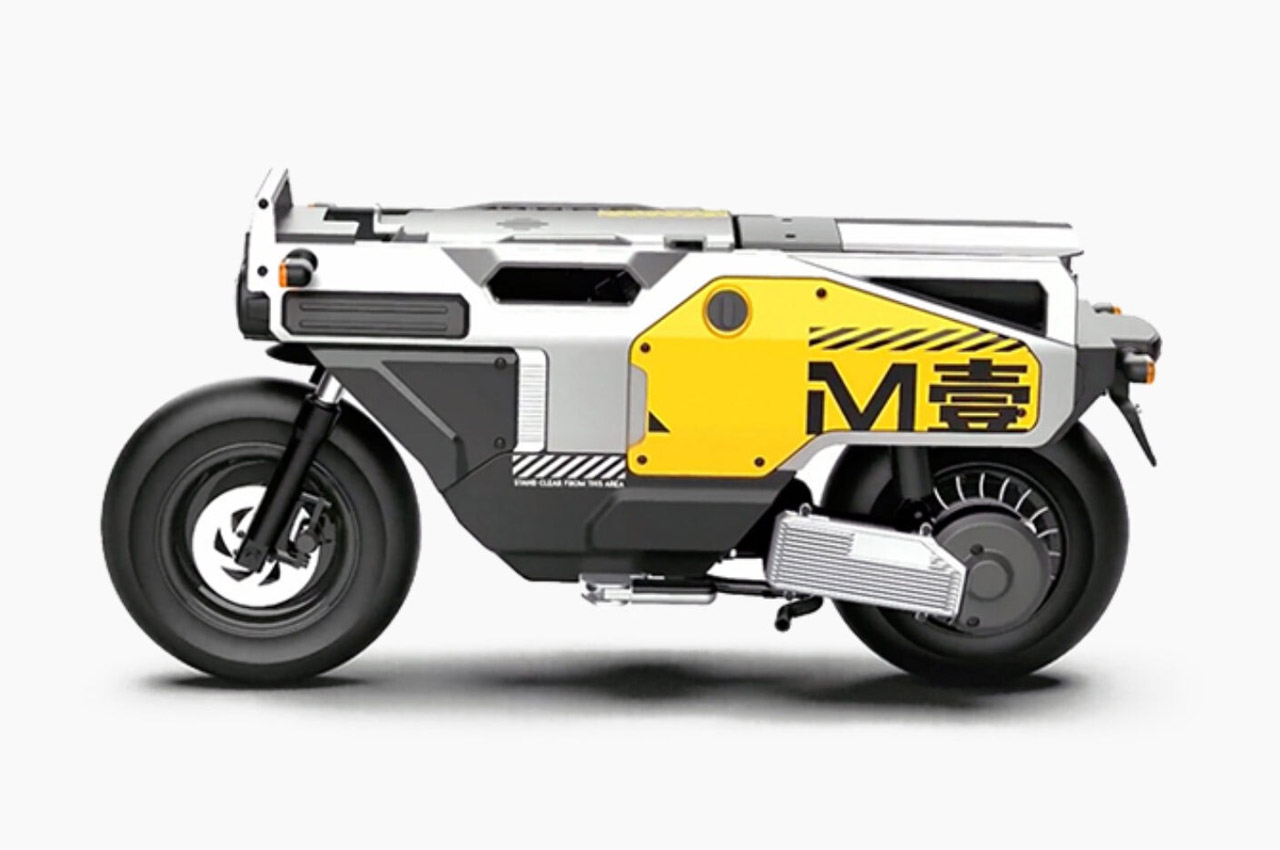
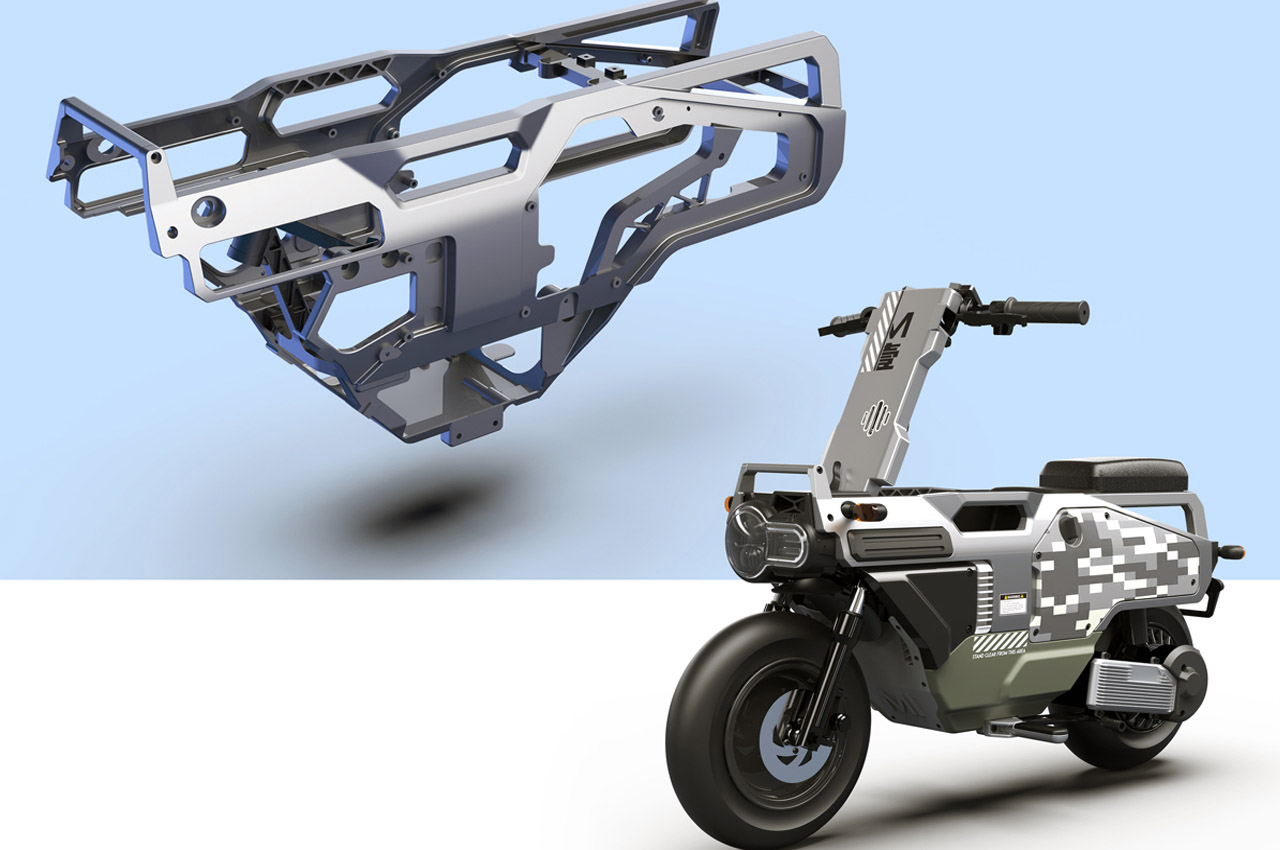
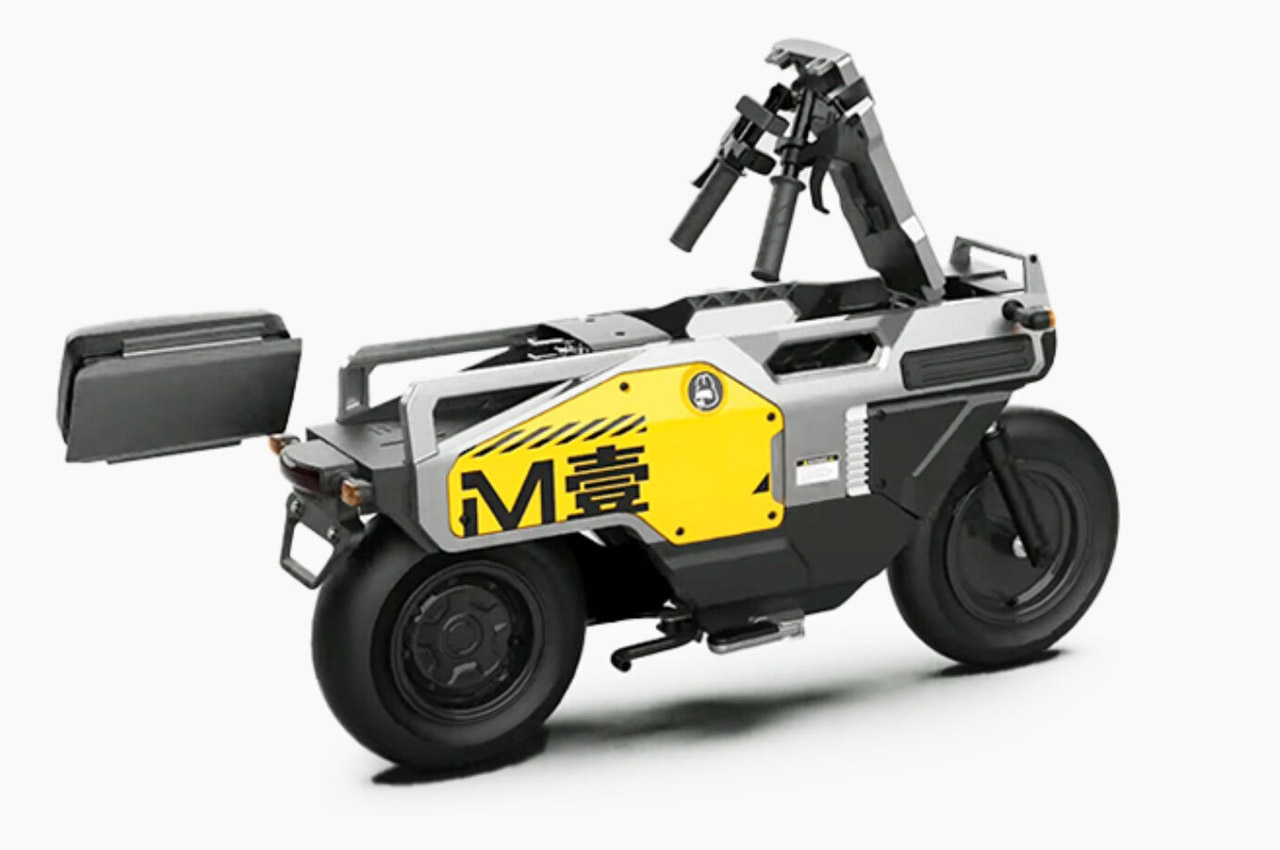
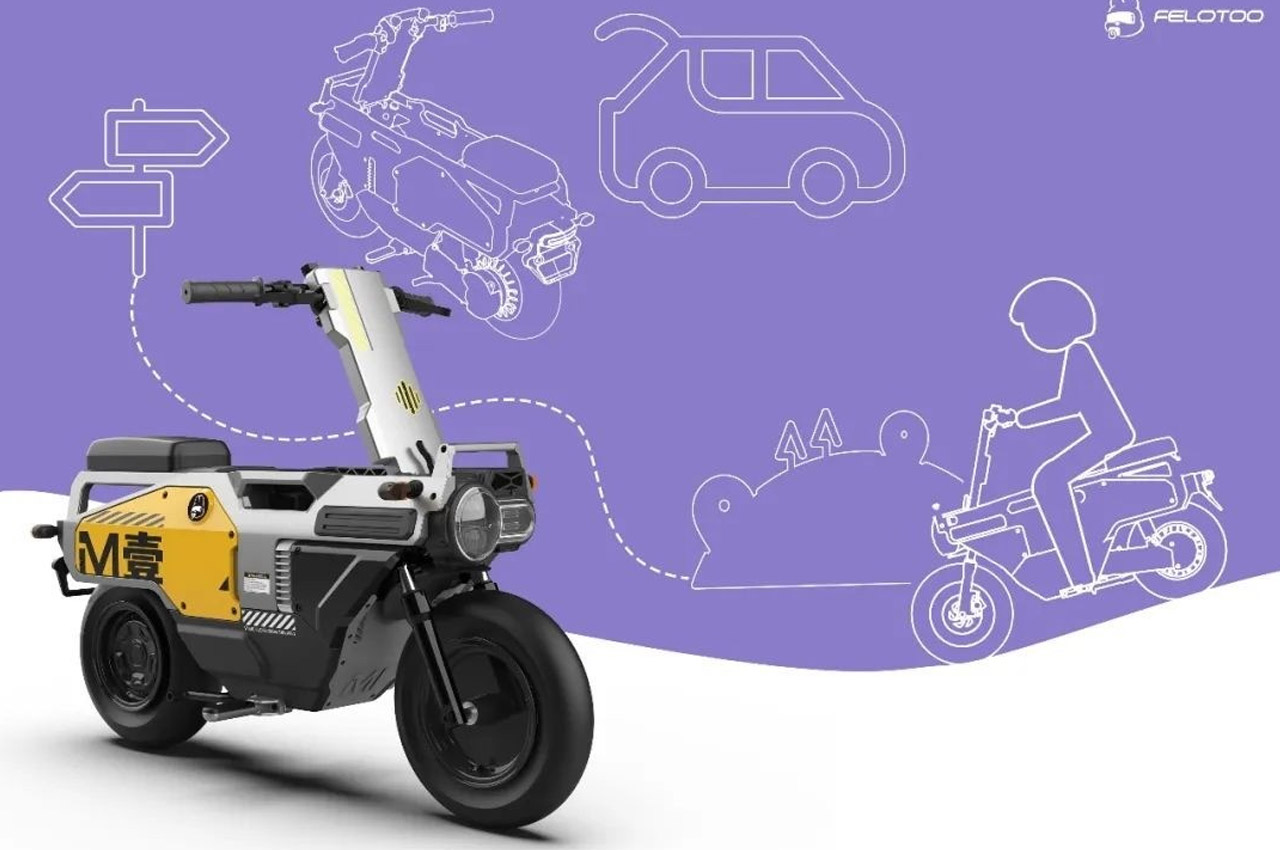
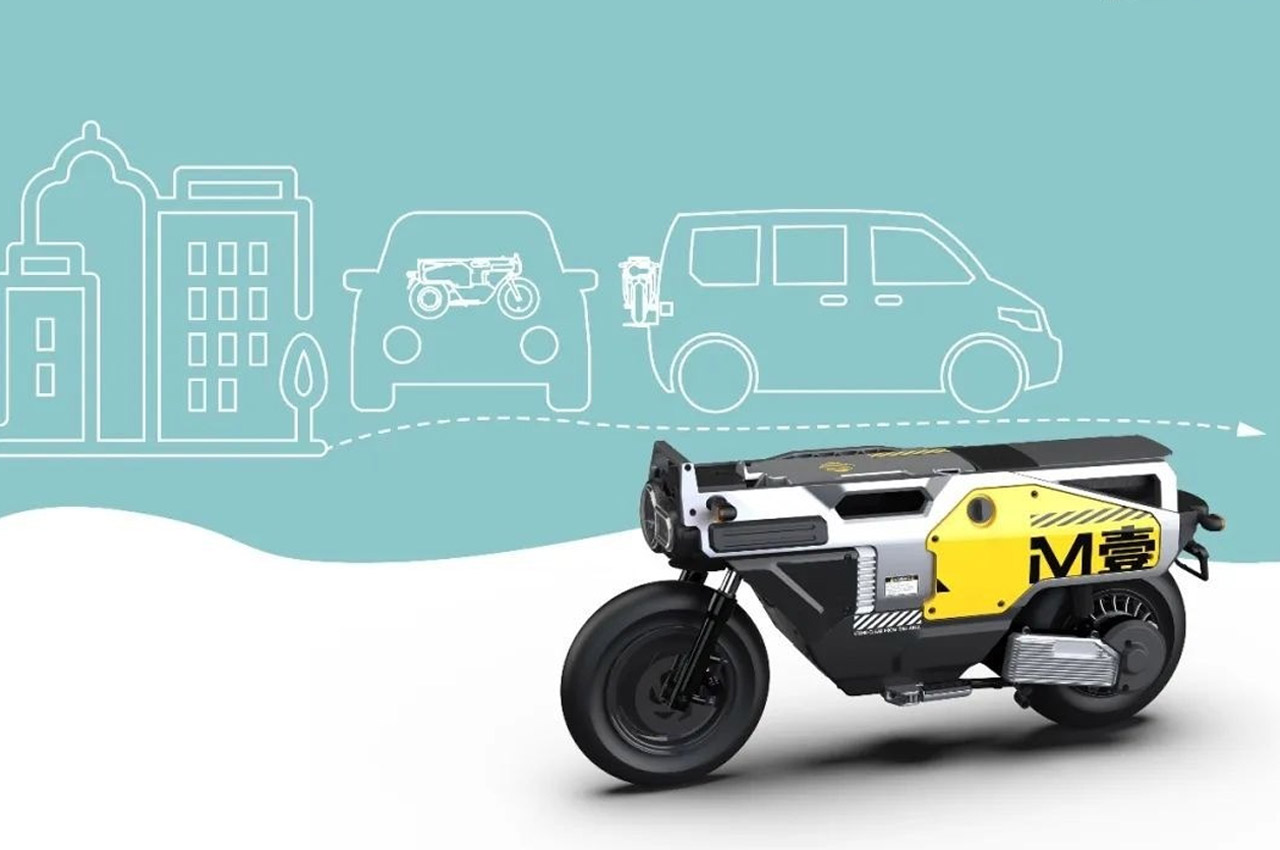
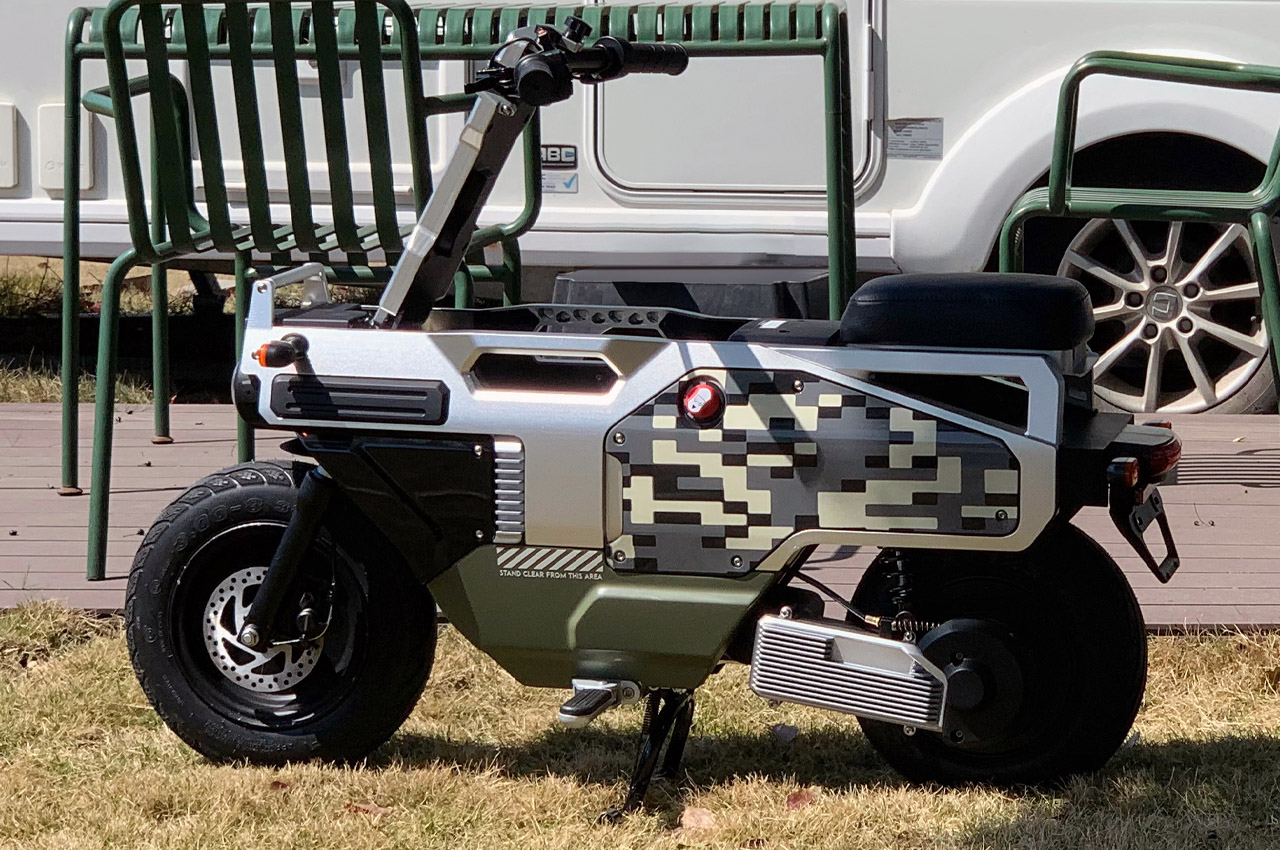
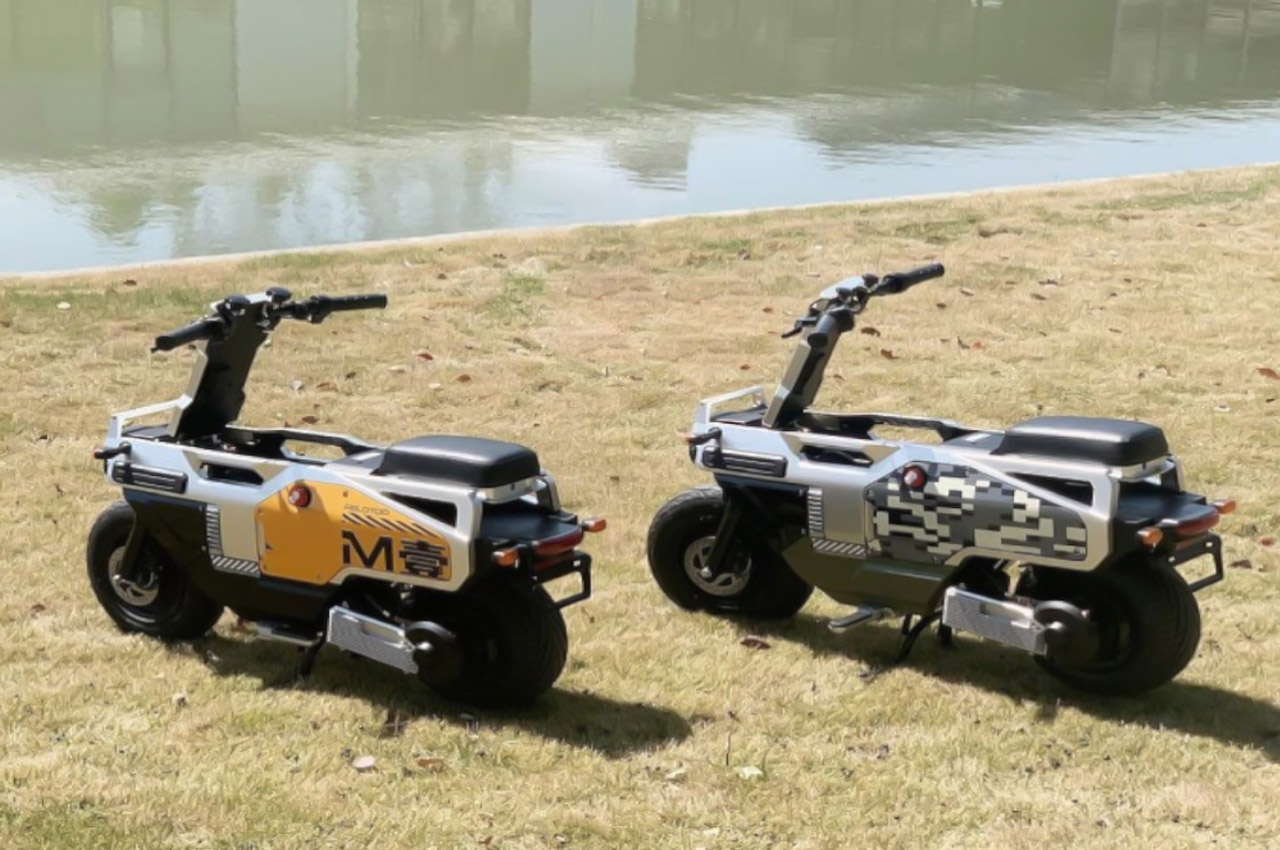
The post Fully-electric M One electric moped folds into its frame, easily fits in the boot of your car first appeared on Yanko Design.
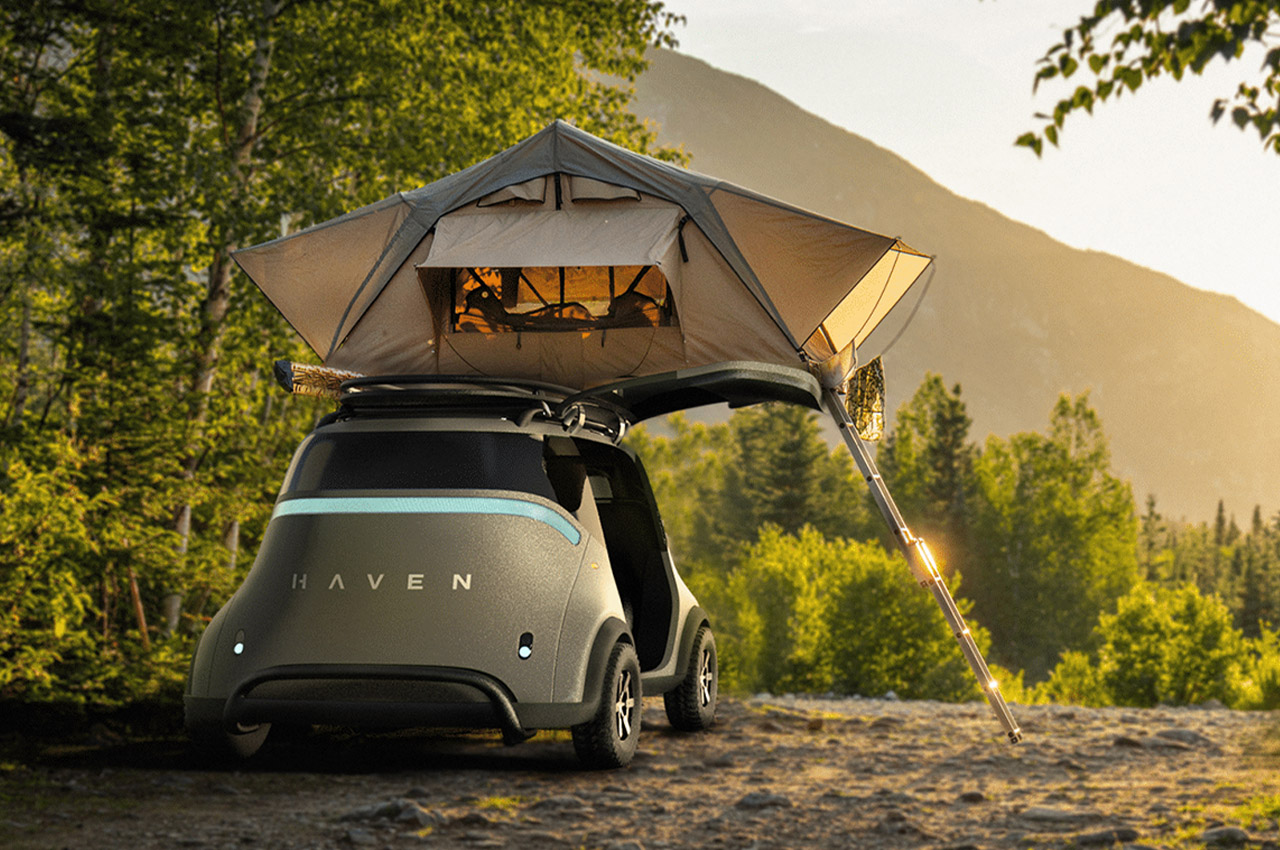
Off-road campers and RVs give adventure seekers a way to explore the grand outdoors without compromising on the cozy comforts of their homes. The options with current-generation campers are impressive if you have the money to spend.
The more stuff that’s in there in your home on wheels, the greater the size of the rig. For someone who wants to have all the essential appliances for a weekend trip to the nearby hills, a compact vehicle with a new-age set of devices is the way to go.
Designer: Taehyun Kim
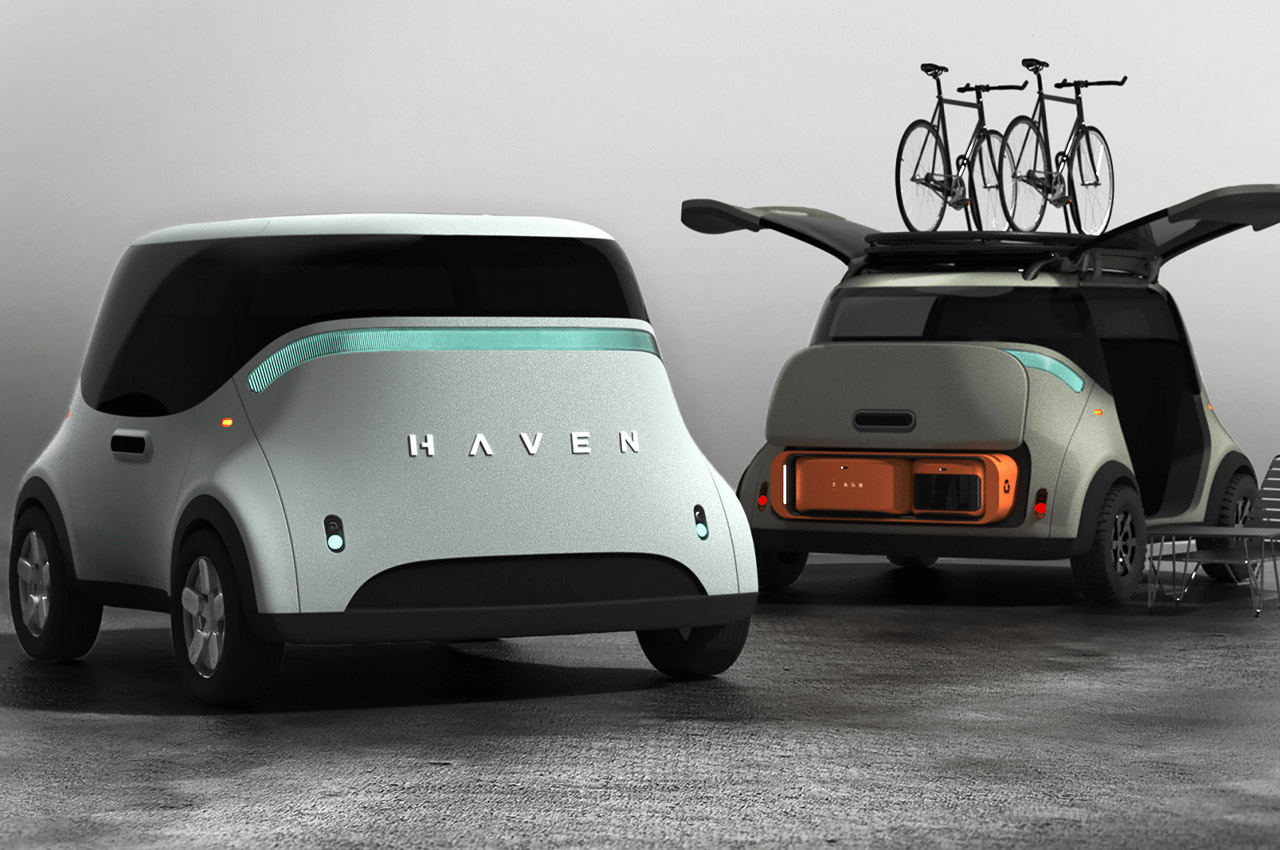
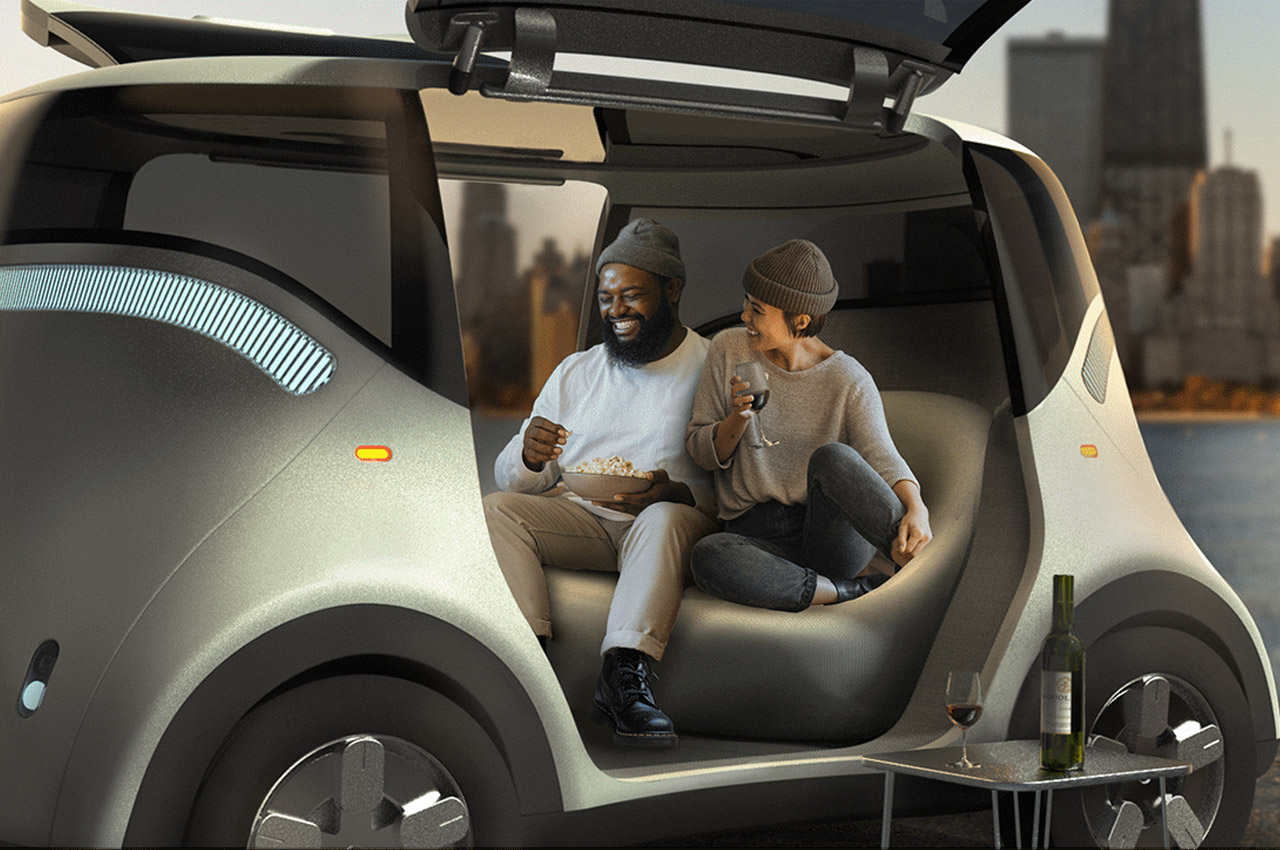
This is Haven, a compact electric vehicle for the younger generation who like things to be minimalistic but without giving up on the luxury of cooking lip-smacking delicacies in middle of the quaint wilderness. The four-door hatchback is a fully autonomous concept proposed for users who don’t want the jargon of a camper or off-road vehicle; but rather a set of wheels that’s compact enough for the city, while being equally good on a short expedition.
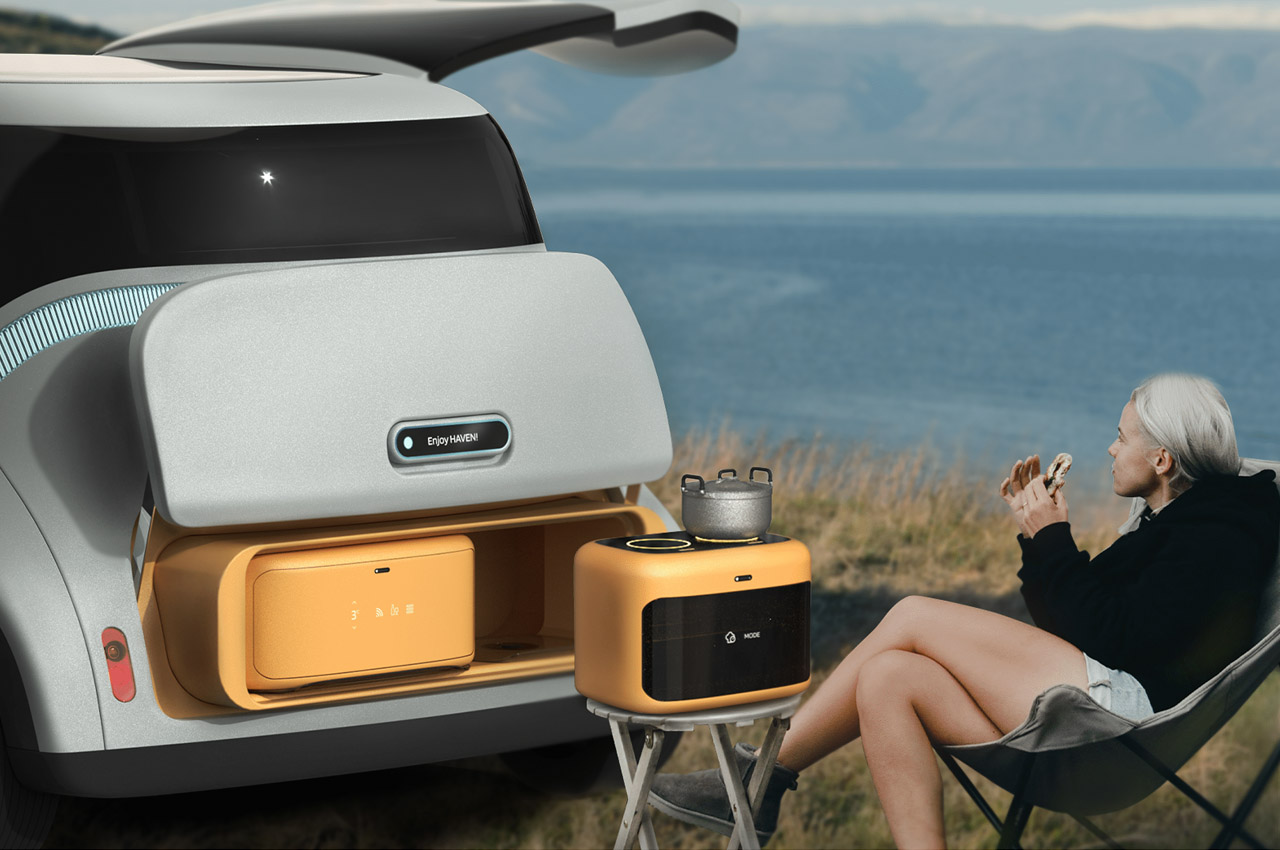
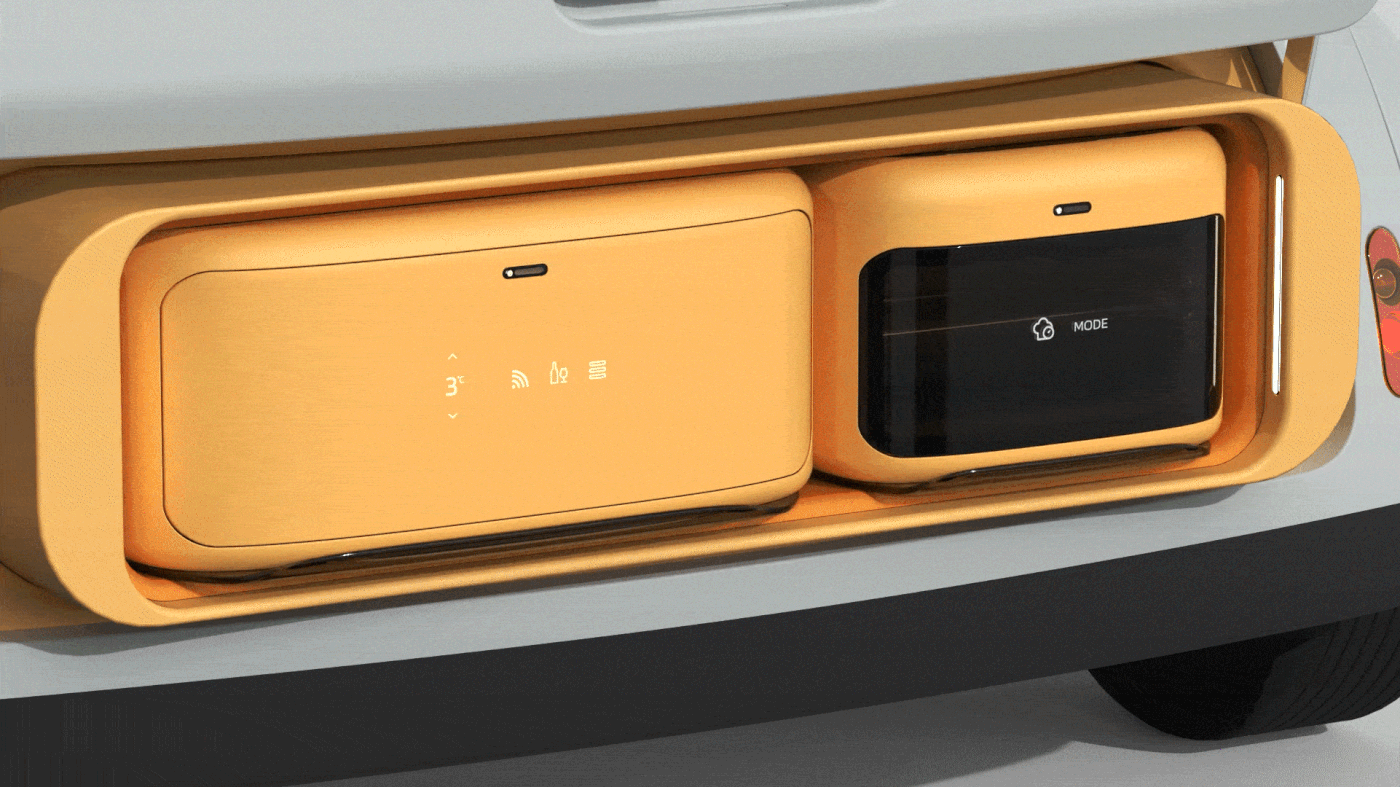
The idea is to have a level 5 autonomy vehicle (god knows when we’ll reach there) with a customized set of appliances to match the lifestyle of adventurous Gen-Z. Taehyun has real-life situations at the back of his mind, thus, the design of doors and windows translates into the requisite form factor. When parked on the cliffside, the four-door hatchback’s falcon doors open up to double as a temporary awning. Those panoramic windows let the riders enjoy the openness. For sleeping, the foldable tent on the roof can be pitched in a jiffy, just like on any other off-road vehicle.
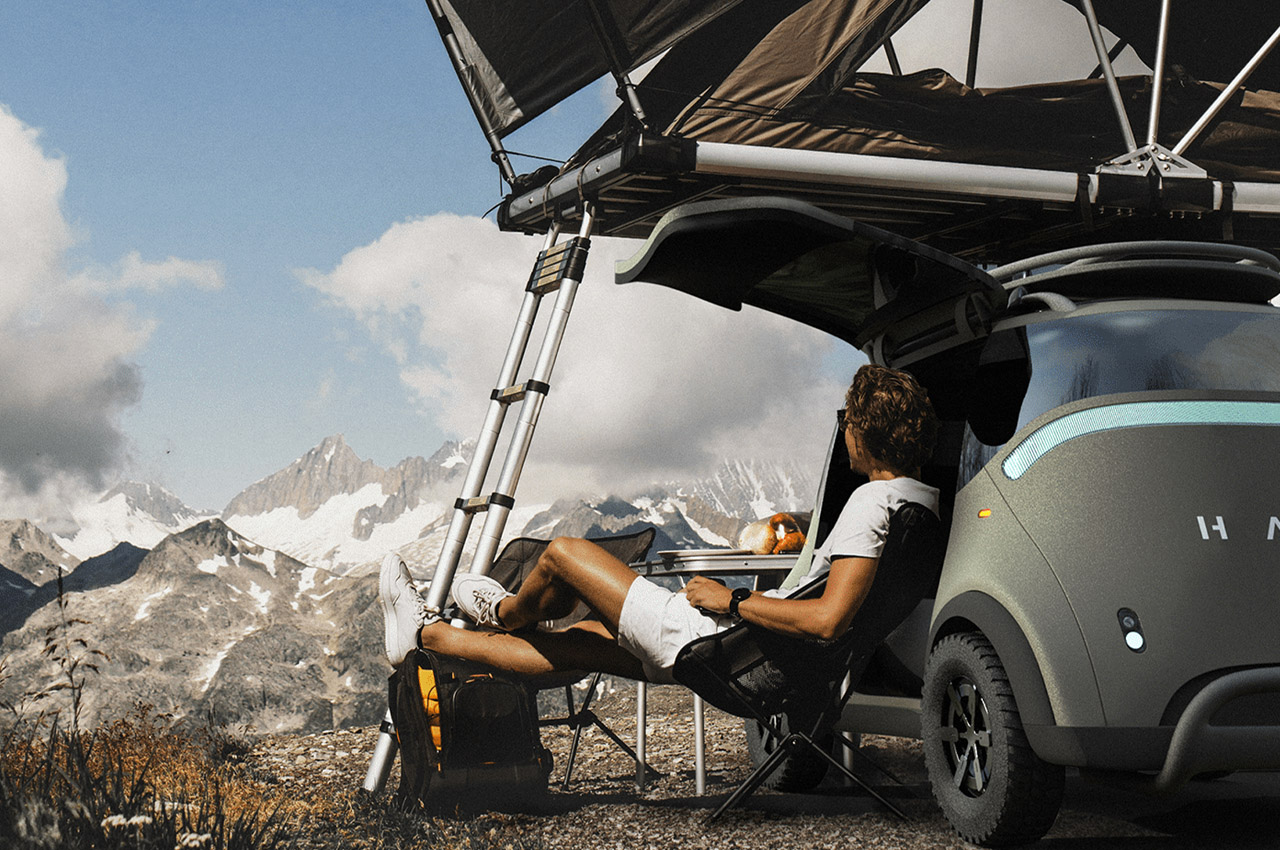
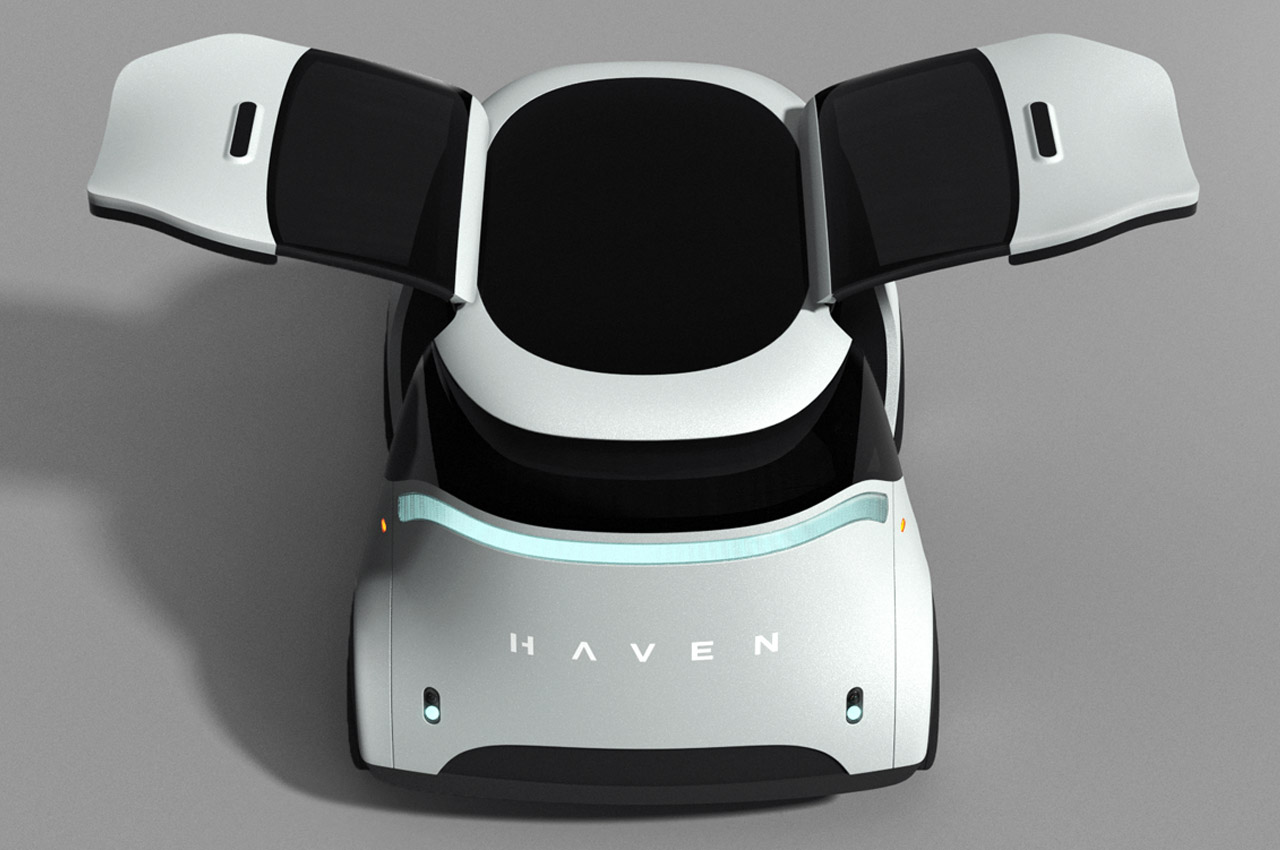
The appliances with UI interface stored in the rear section of the car include a refrigerator with a wine cellar, and an all-in-one cooker. Everything is gesture controller, right from opening up the storage cabin for these appliances to the easy operation for cooking delicacies in a picturesque backdrop. Perhaps the ideal vehicle for foodie adventurers.
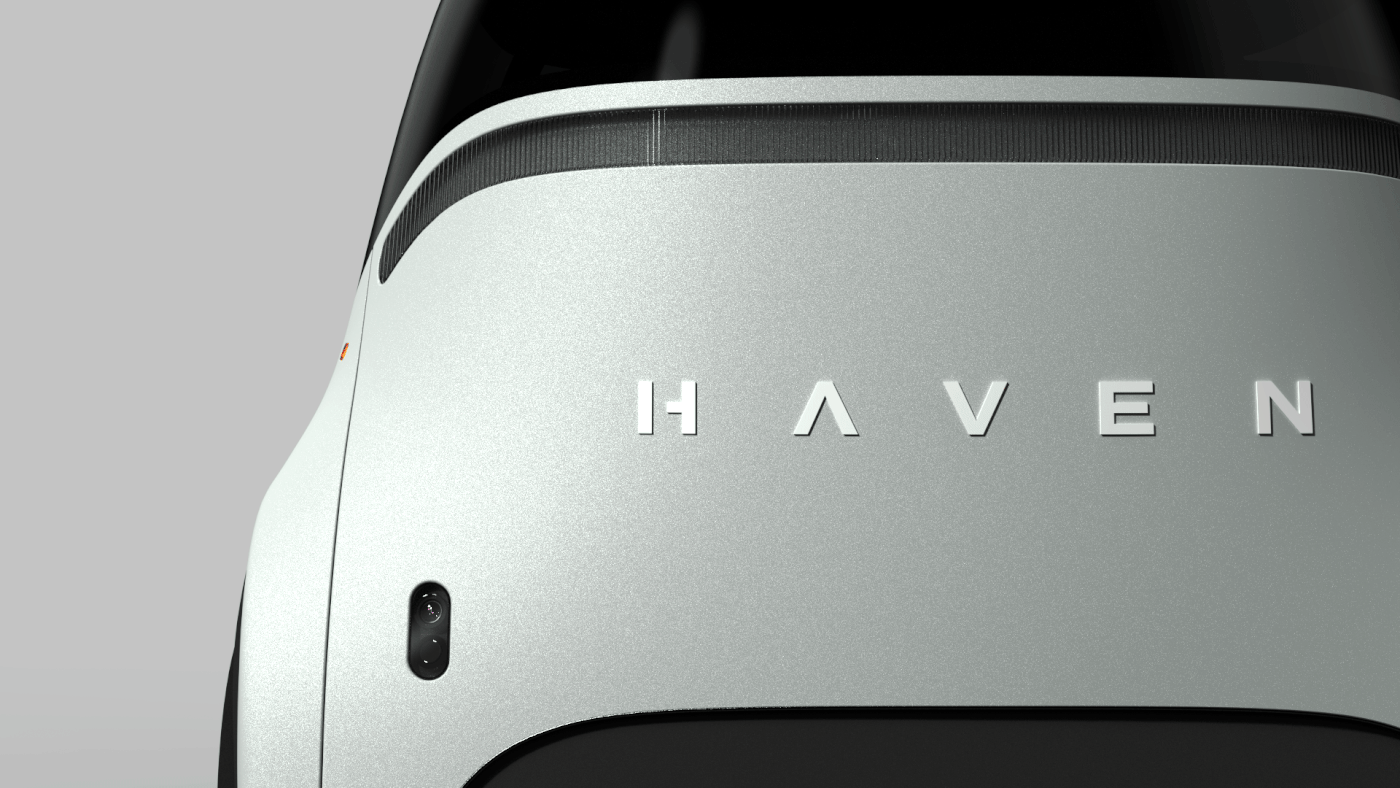
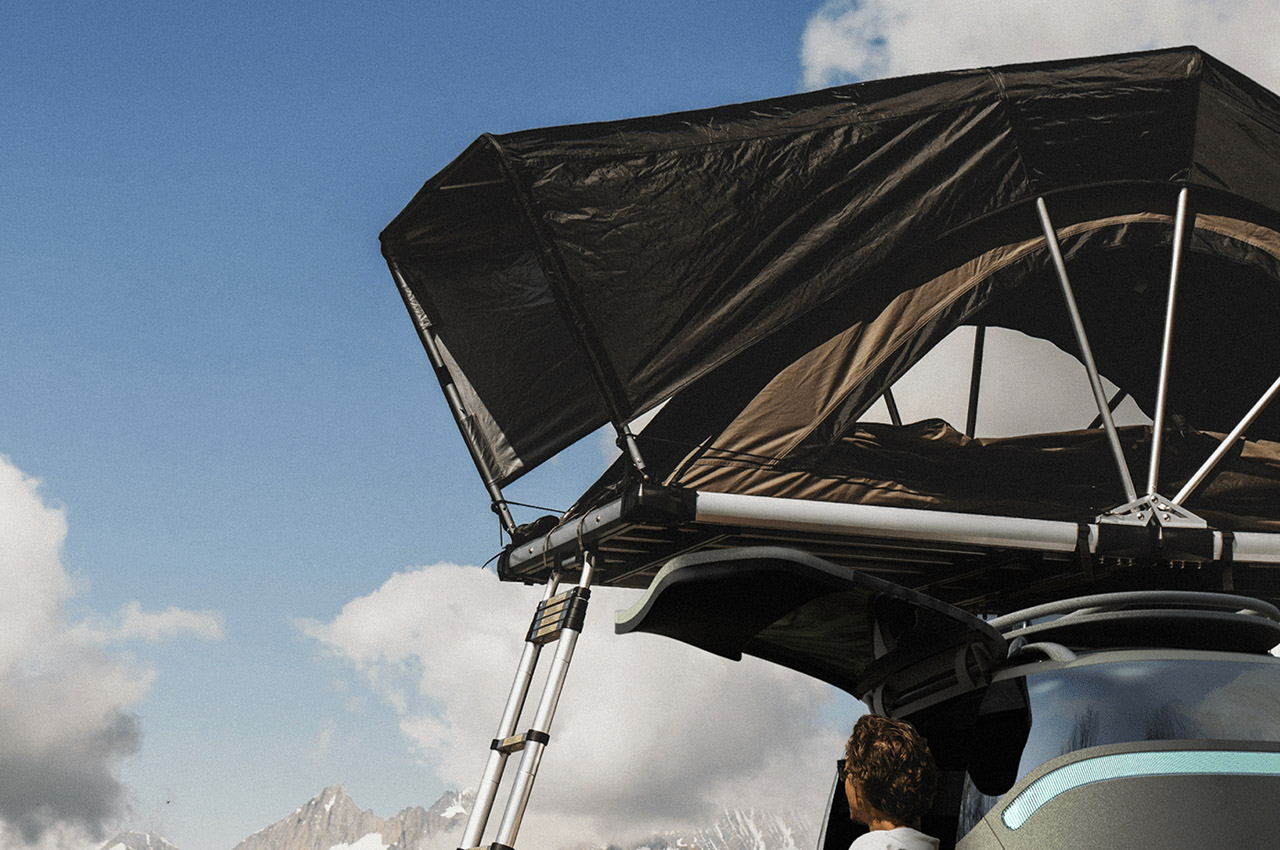
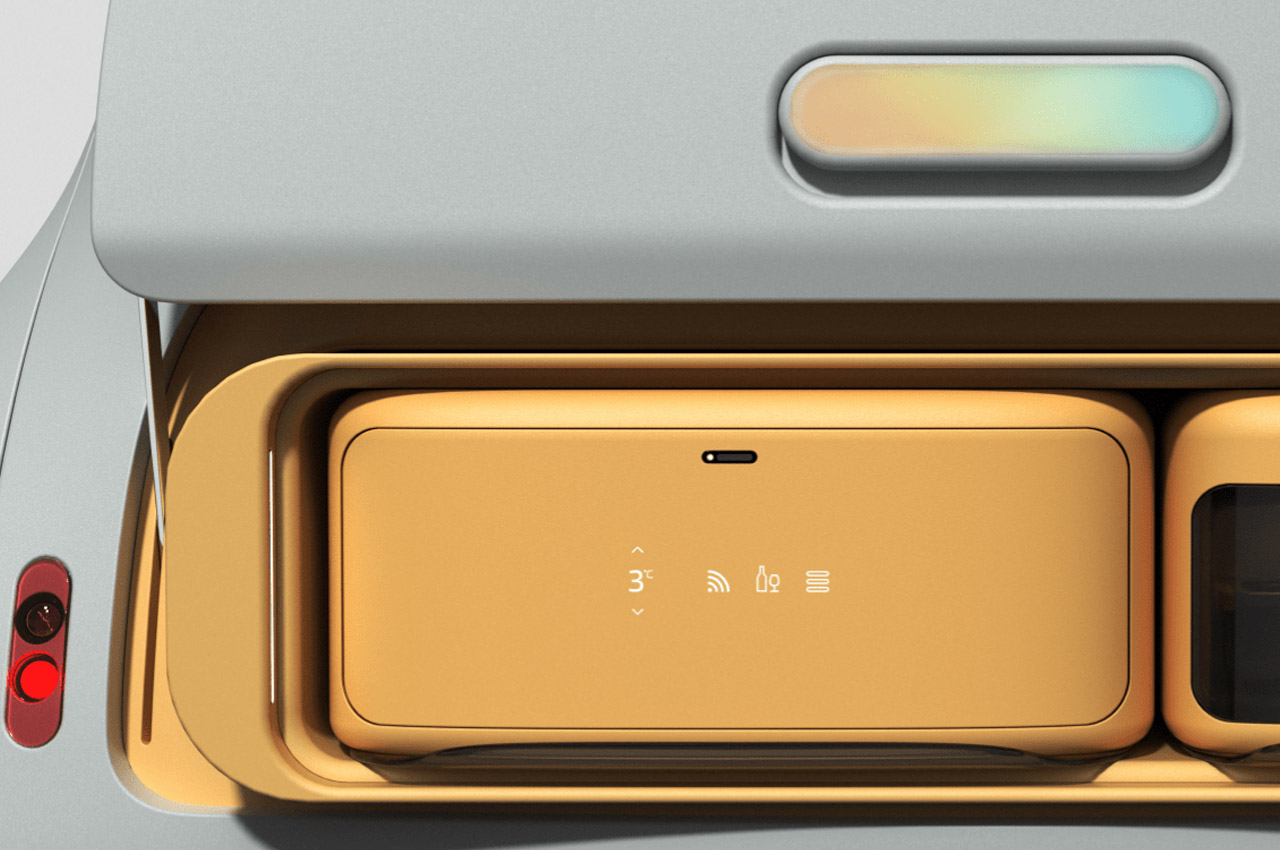
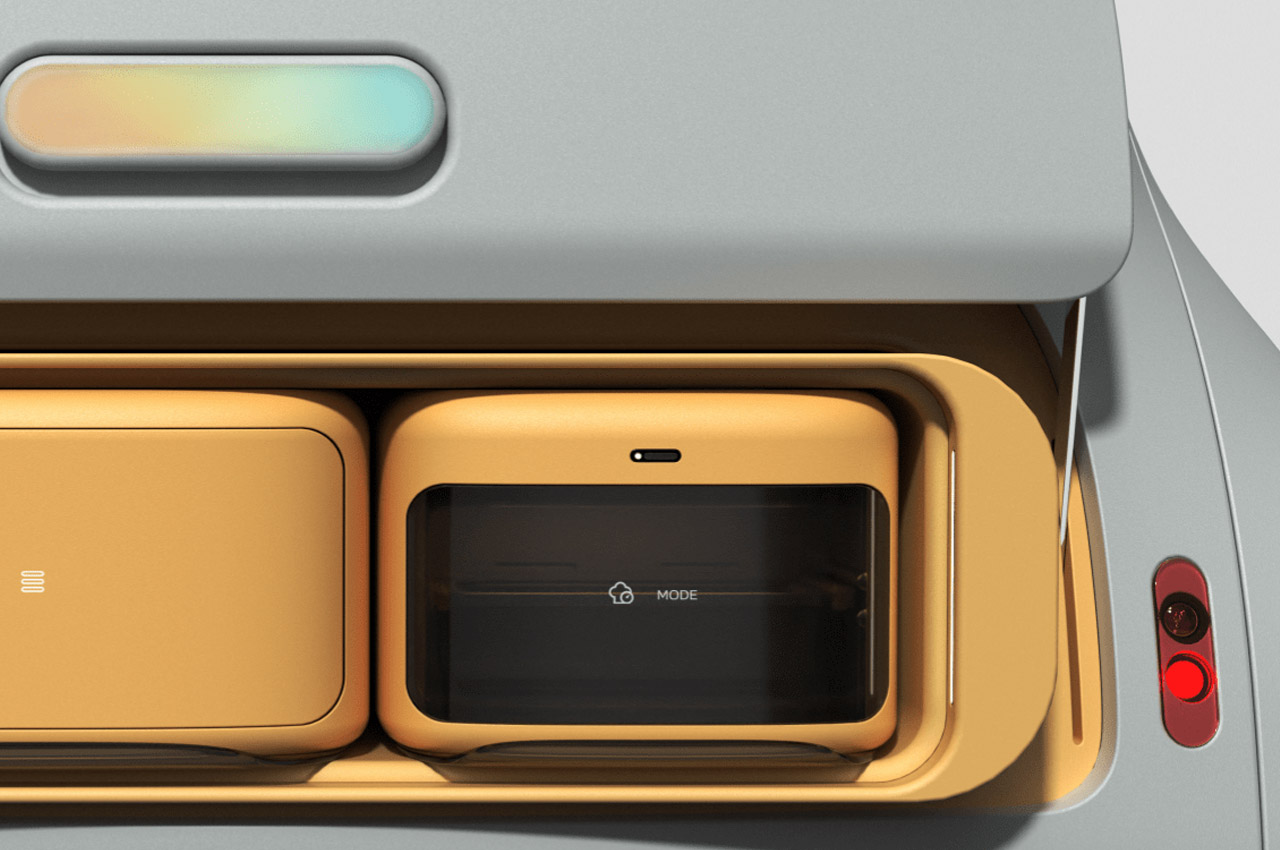

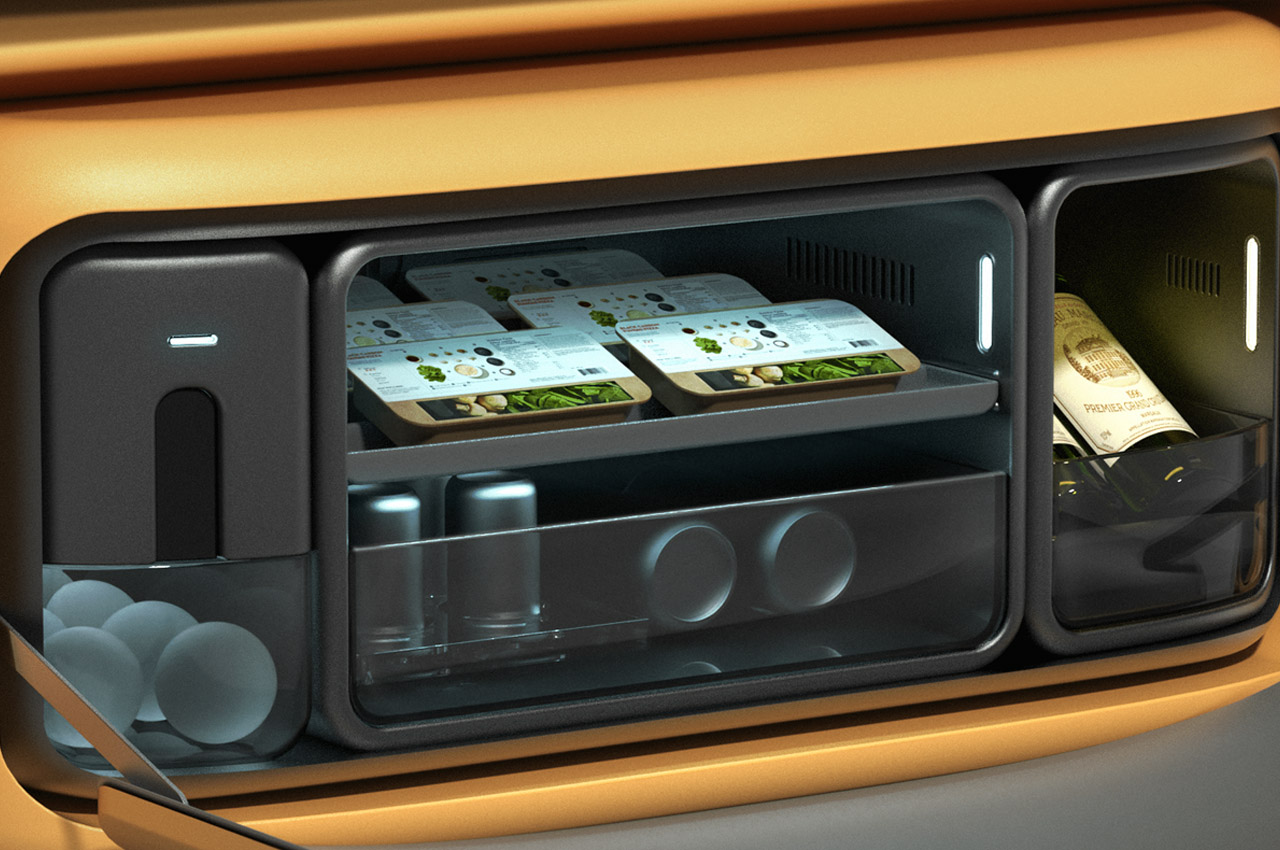
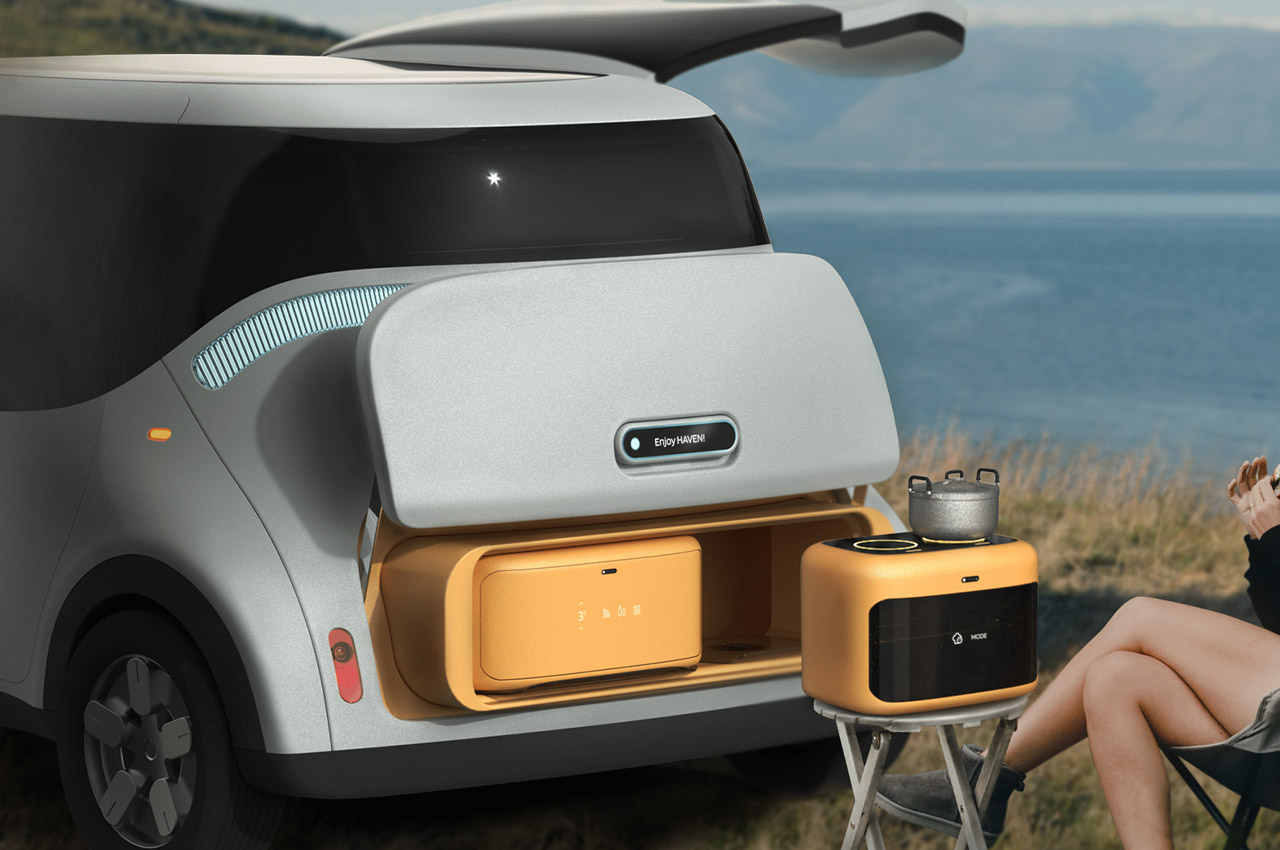
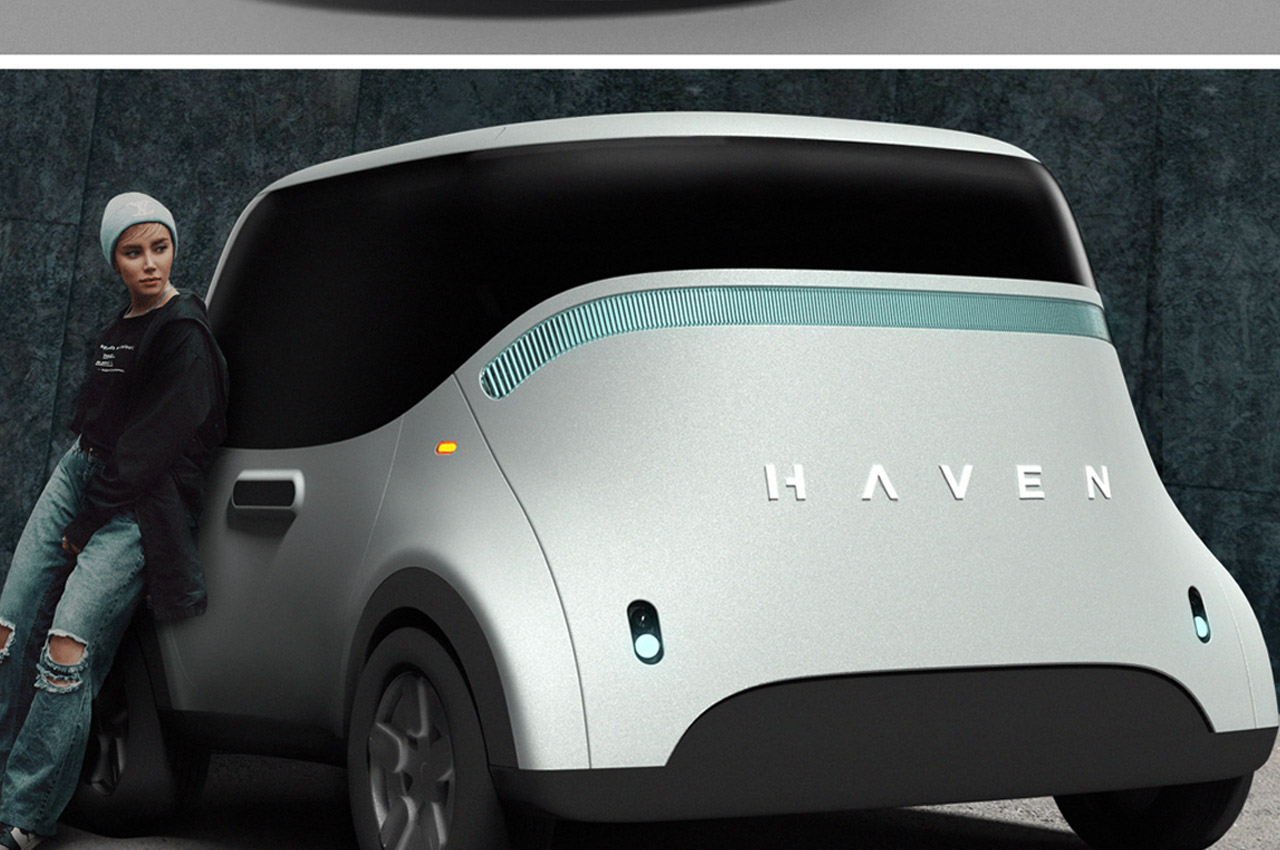
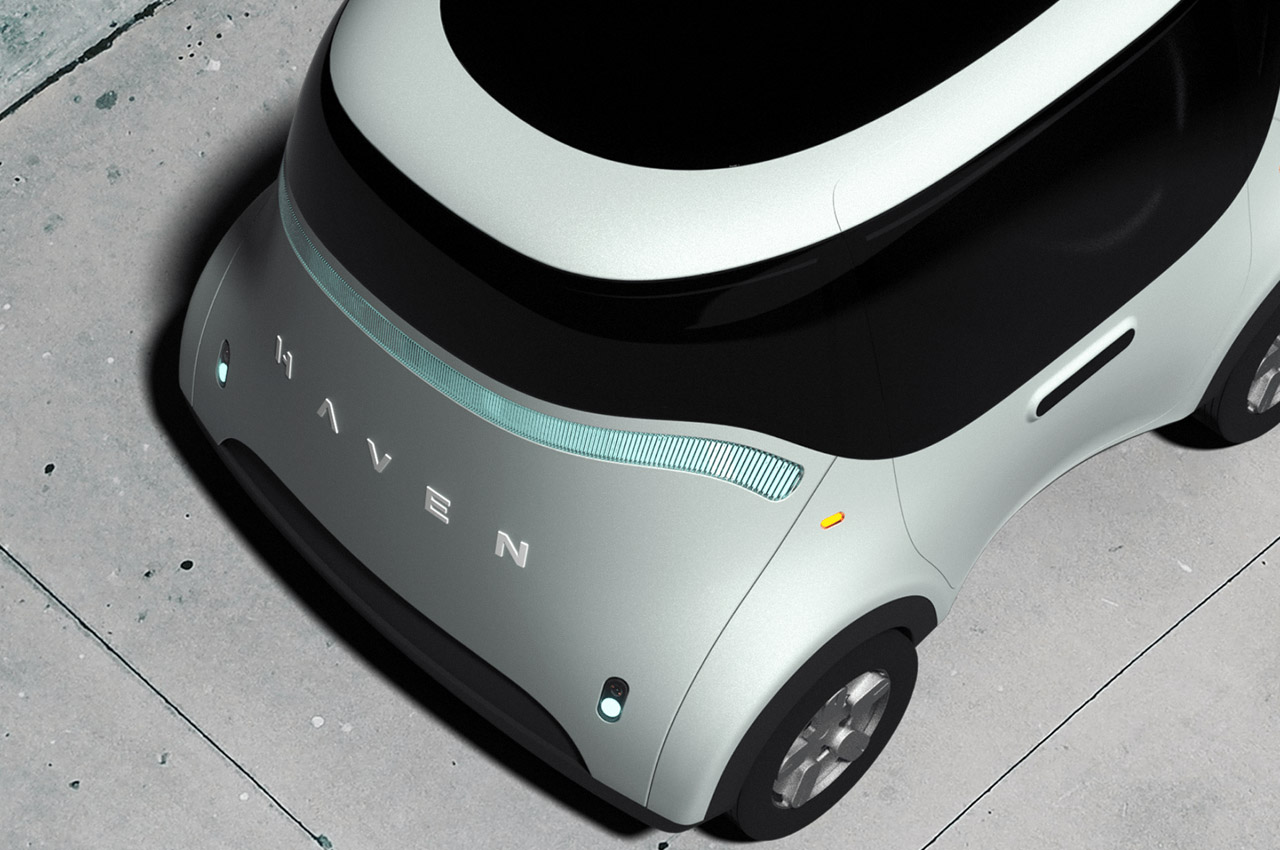
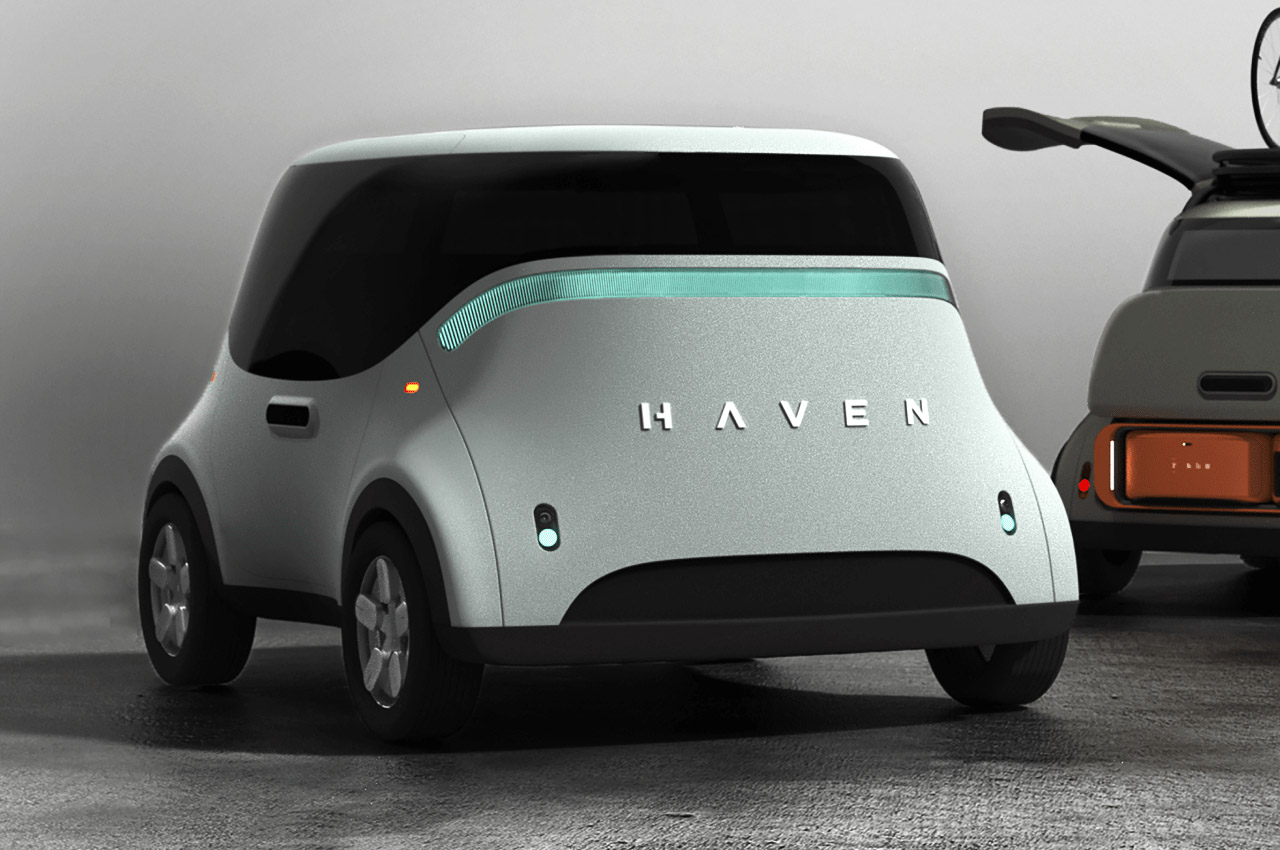
The post A compact outdoorsy hatchback designed those who love their food and adventures first appeared on Yanko Design.
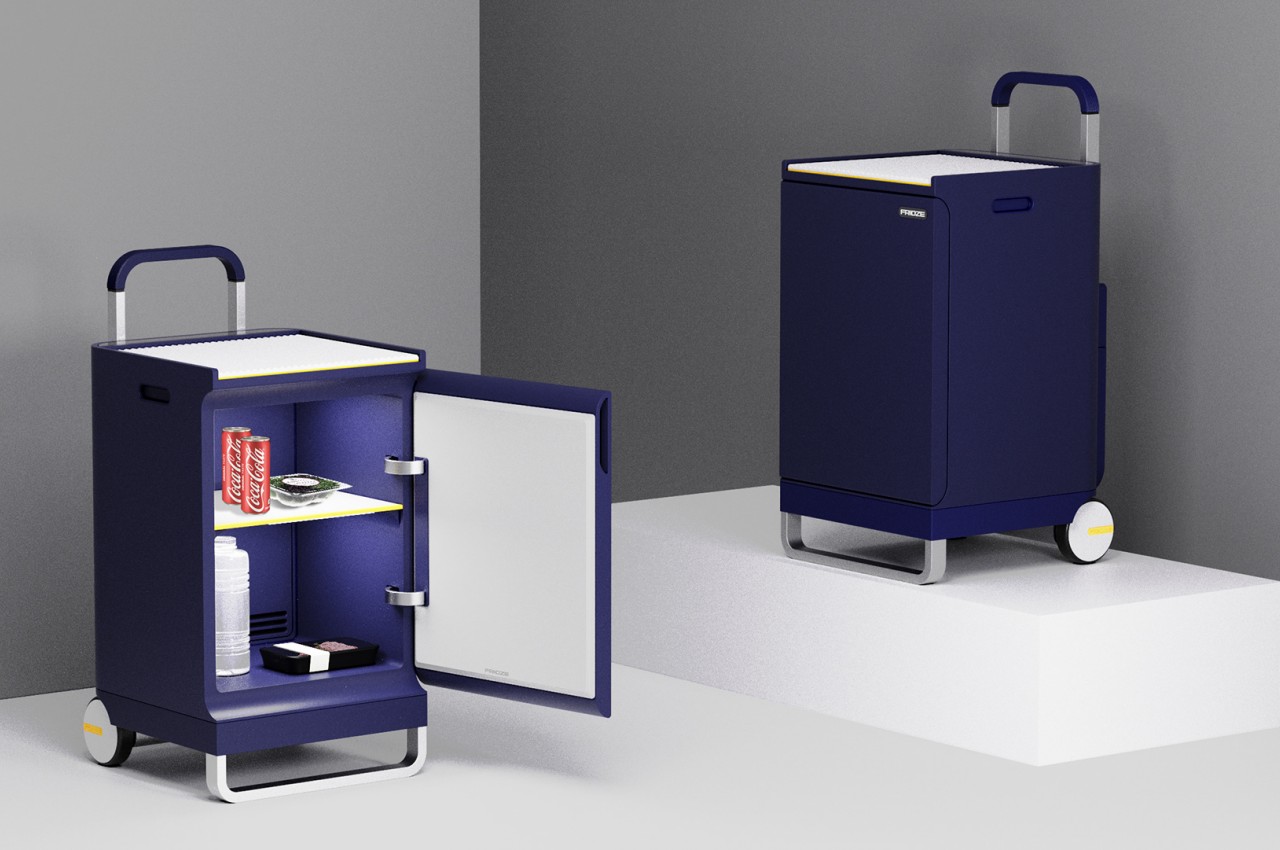
We’re still far away from giving up on fuel oil, but more people are thankfully adopting electric cars, which can be a bit more sustainable if you get power from renewable sources. For now, most probably see these EVs as ways to get around cities, often for commuting to work and over short distances. As their numbers grow, however, so would the number of charging stations scattered throughout highways. This would make it possible to take these battery-powered cars for longer trips, maybe even for outdoor camping. Given it already runs on batteries, it might be possible to power other appliances from it directly, which is what this portable fridge concept is going for, in a way that makes it look like it was part of the EV right from the start.
Designers: Joeun Kim, janchi
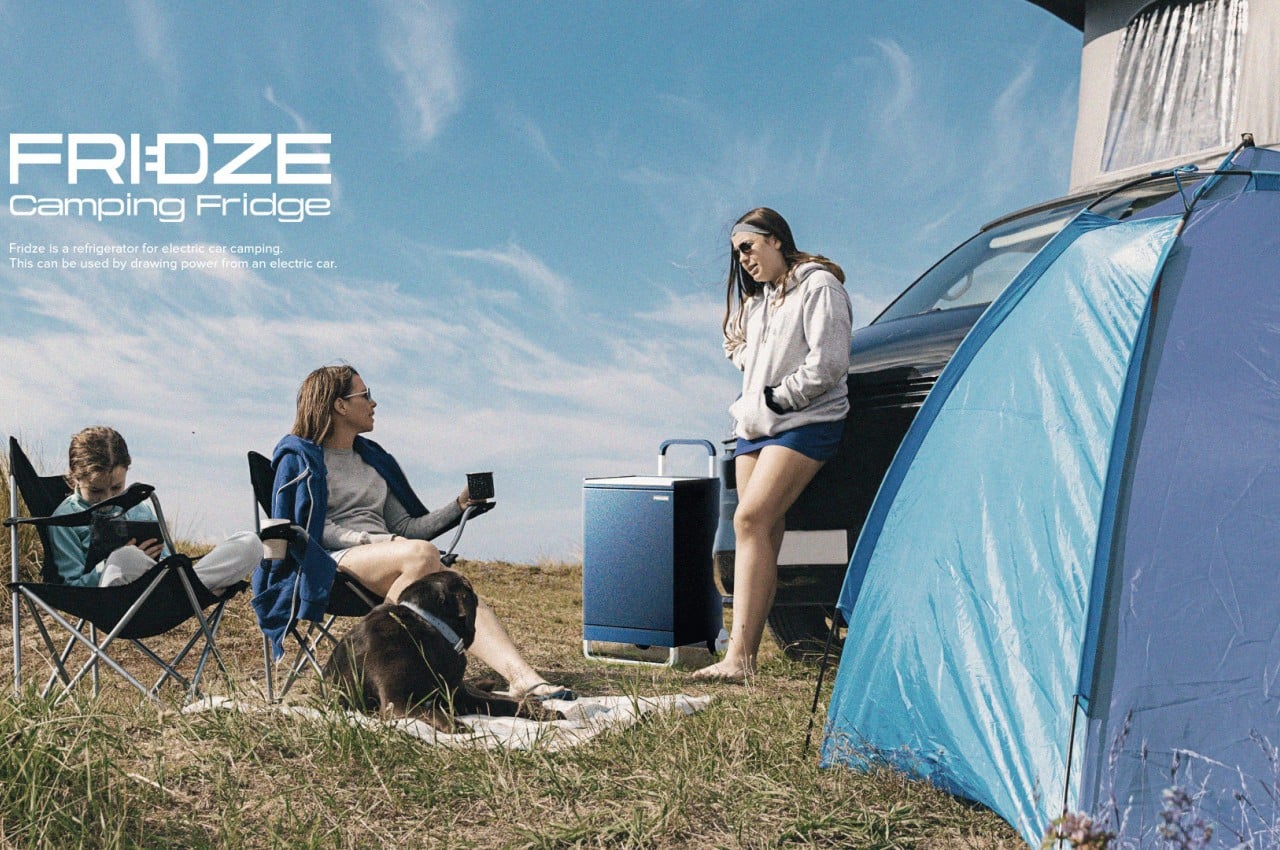
There are, of course, plenty of portable refrigerators in the market today built with a wide variety of designs. Some look like giant ice coolers, while there are those that look like you just unplugged your home fridge and shrunk it to fit. Fridze, which is a play on the brand that has become synonymous with the appliance, instead tries to look more like a part of an electric vehicle. Or at least what an electric SUV or camper might look like if those became more common. In other words, Fridze looks sleek, futuristic, and minimalist, almost like it would be out of place on dirty camping grounds.
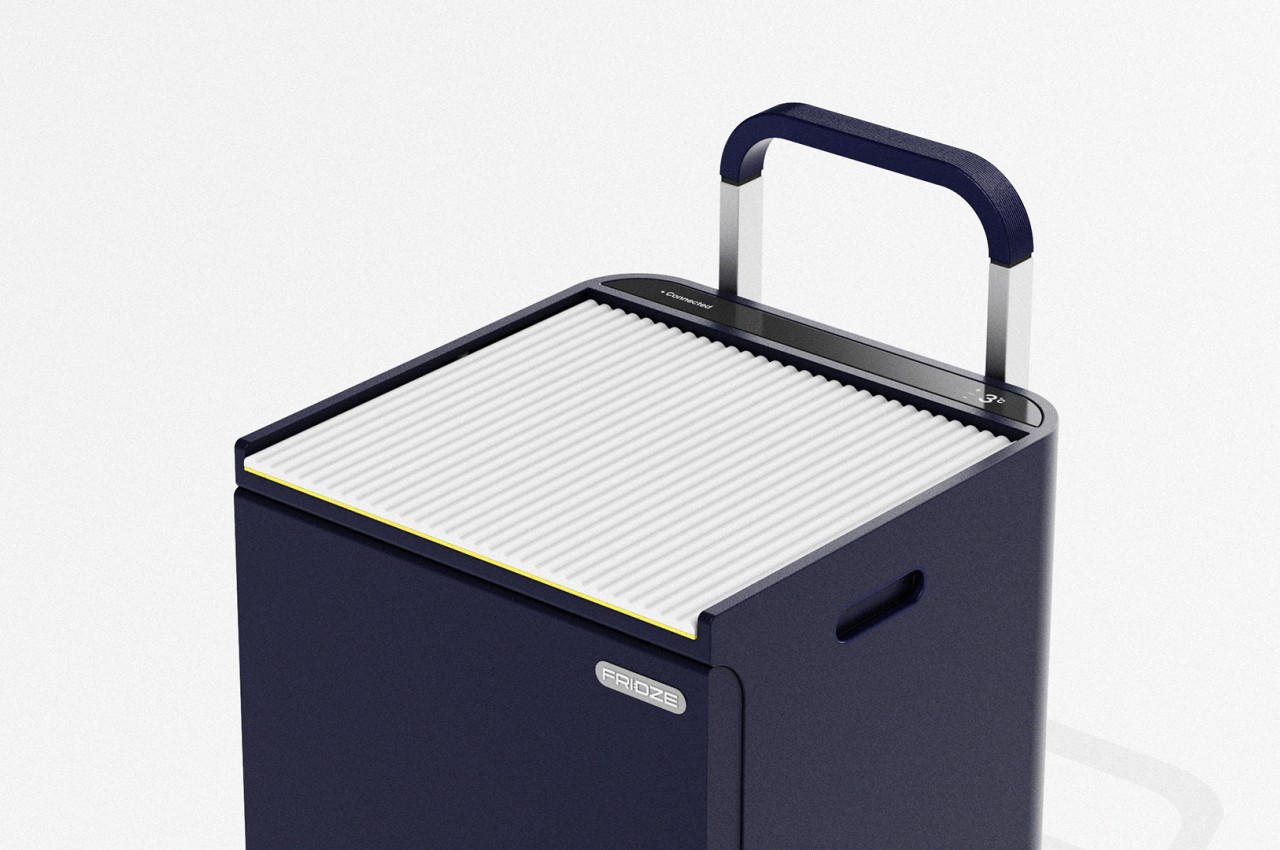
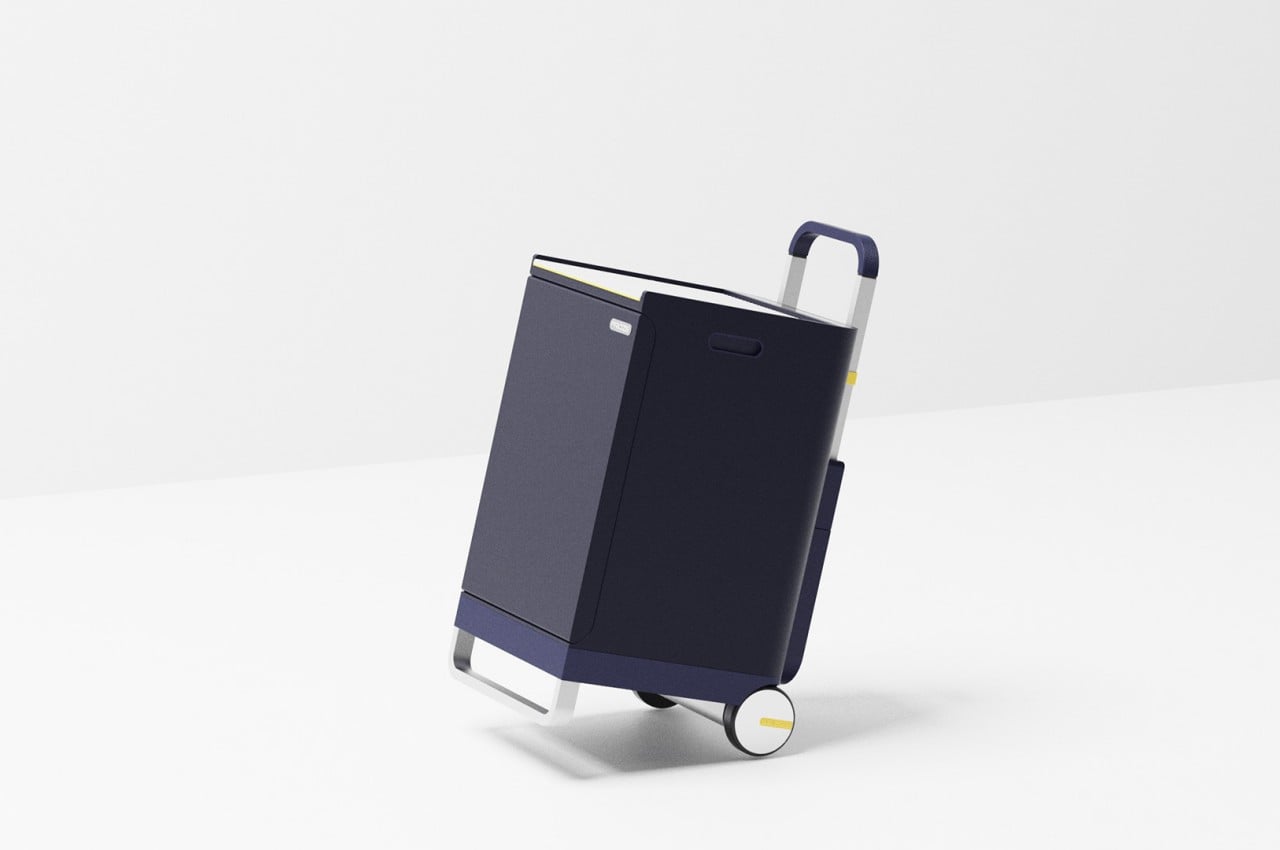
It does look and move like a suitcase, though, a very bulky and solid one at that. Two wheels on the back and a telescopic handle would be similar to what you’d see on most luggage, while a thick U-bar on the front keeps it from toppling forward. The use of mostly straight lines and flat edges almost resemble some EV charging boxes, but this one actually takes rather than gives power to EVs.
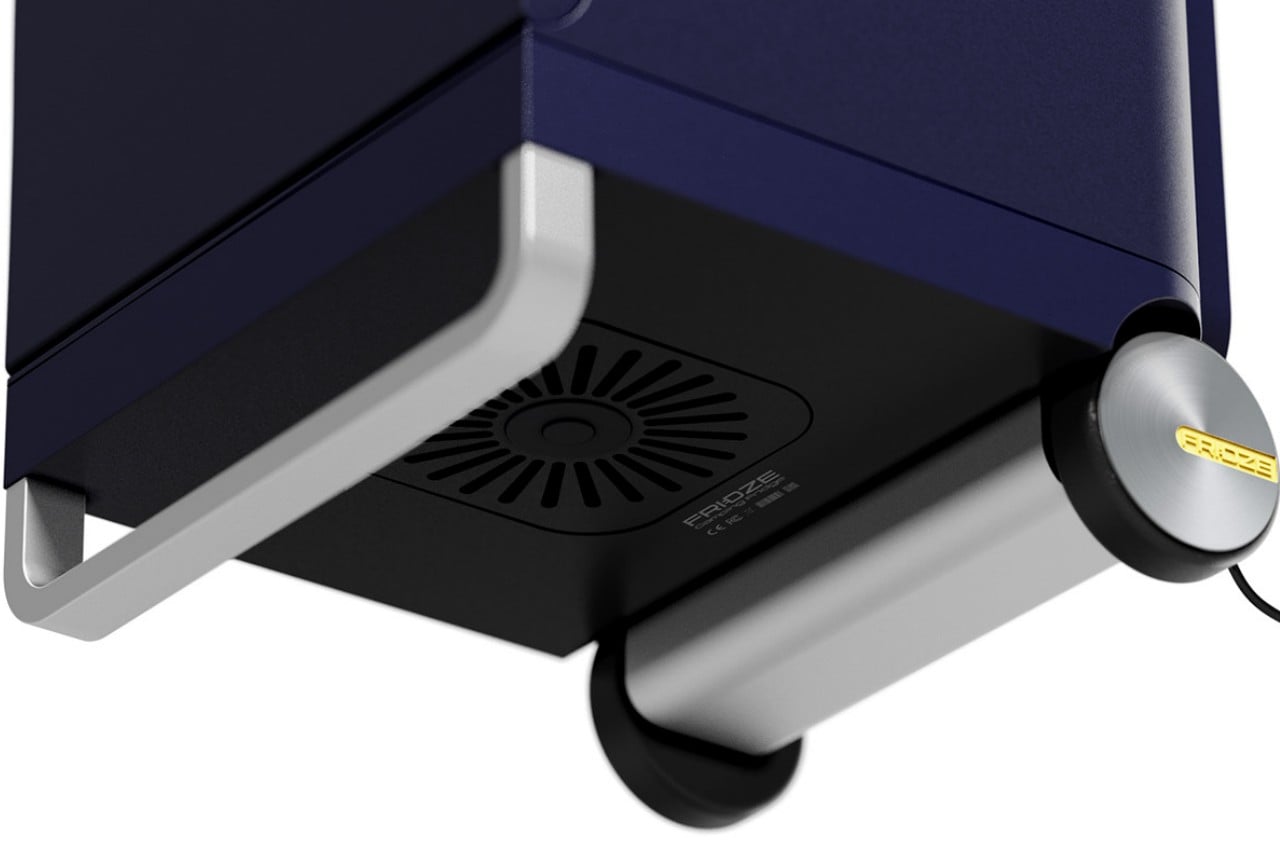
Portable refrigerators naturally need to draw electricity, of course, and most of them will draw power from the car via a car charger. There are portable power stations these days for that purpose, but not many have them. That lighter port is still the most common method, but it’s also wasteful in converting to the type of power that a fridge would need. Fridze, in contrast, would plug directly into the EV’s batteries and siphon power from there. It does have a small battery of its own for those moments when it can’t be connected to the car, like when moving it from one place to another.
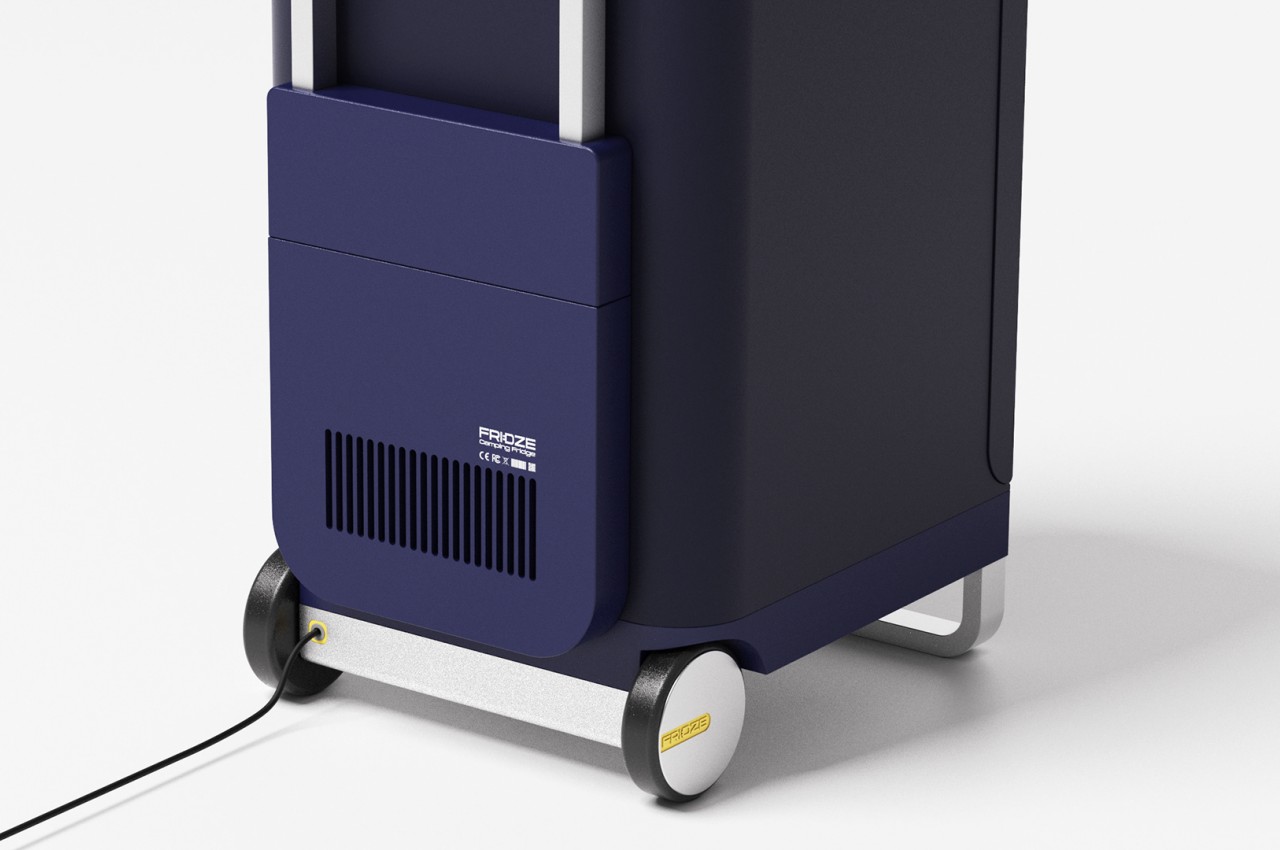

In all other aspects, the fridge works just like any other, except for the top that reveals holders for drinks to keep them cool. The idea behind Fridze probably isn’t that revolutionary, and it’s a logical conclusion that would eventually arrive as more cars become electric. Its design, however, would perfectly match the EV aesthetic, even if it would clash with everything else that would stay at home anyway.
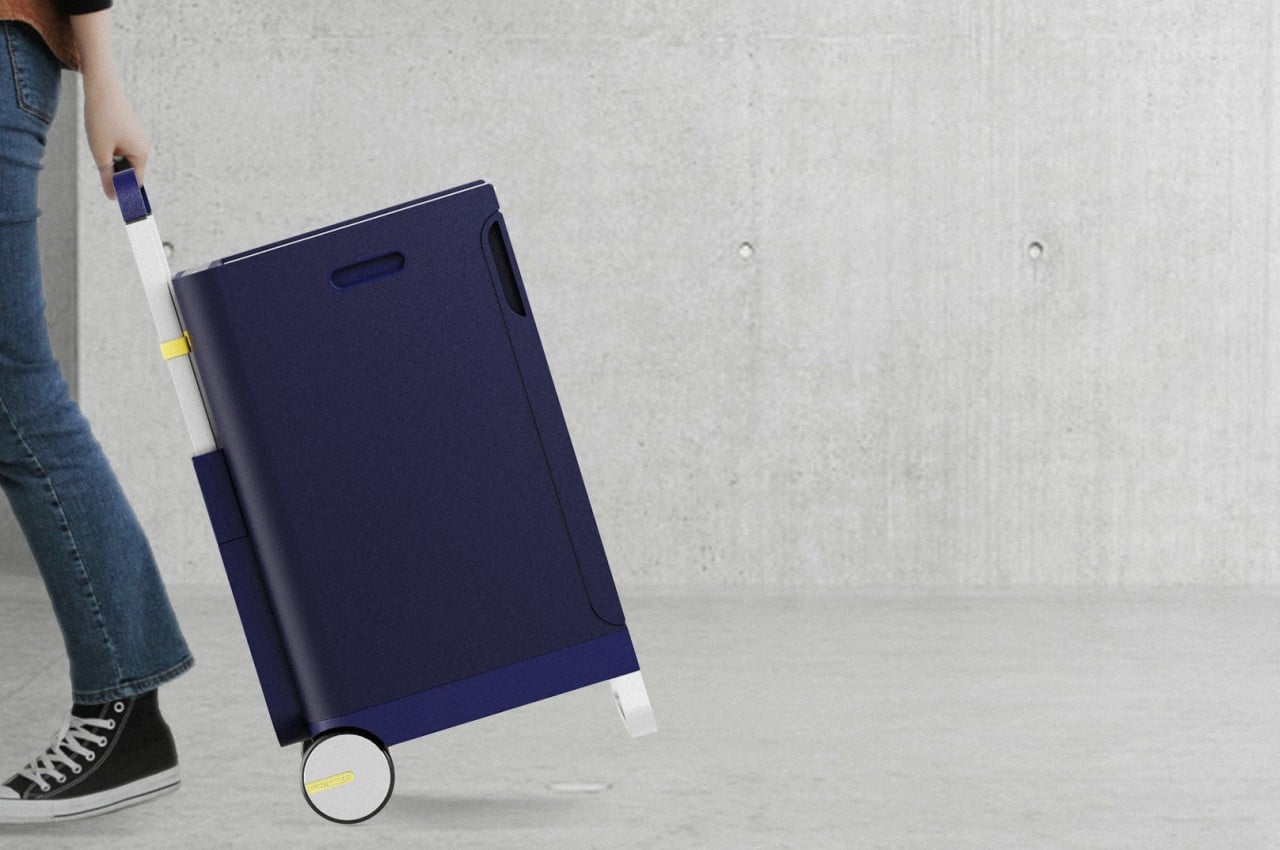

The post This small refrigerator on wheels was designed with electric vehicles in mind first appeared on Yanko Design.
Meet Hydra, an e-bike with a difference. Unlike traditional electric motorcycles that rely on a powertrain that pulls energy from a lithium-ion battery, Hydra offers an alternate, much more experimental solution – hydrogen fuel cells. Although still in its infancy, hydrogen fuel cells promise absolutely clean energy. Unlike gasoline-powered engines, the fuel cells have zero harmful emissions, and unlike traditional lithium-ion battery EVs, hydrogen fuel cells do away with toxic battery acids that can potentially wreak havoc on the environment if not disposed of properly. In fact, when fueled with pure hydrogen, the only by-products are heat and water (hence the name Hydra), making the technology a zero-emission, sustainable power source.
Designers: Anton Guzhov, Anton Brousseau & André Taylforth
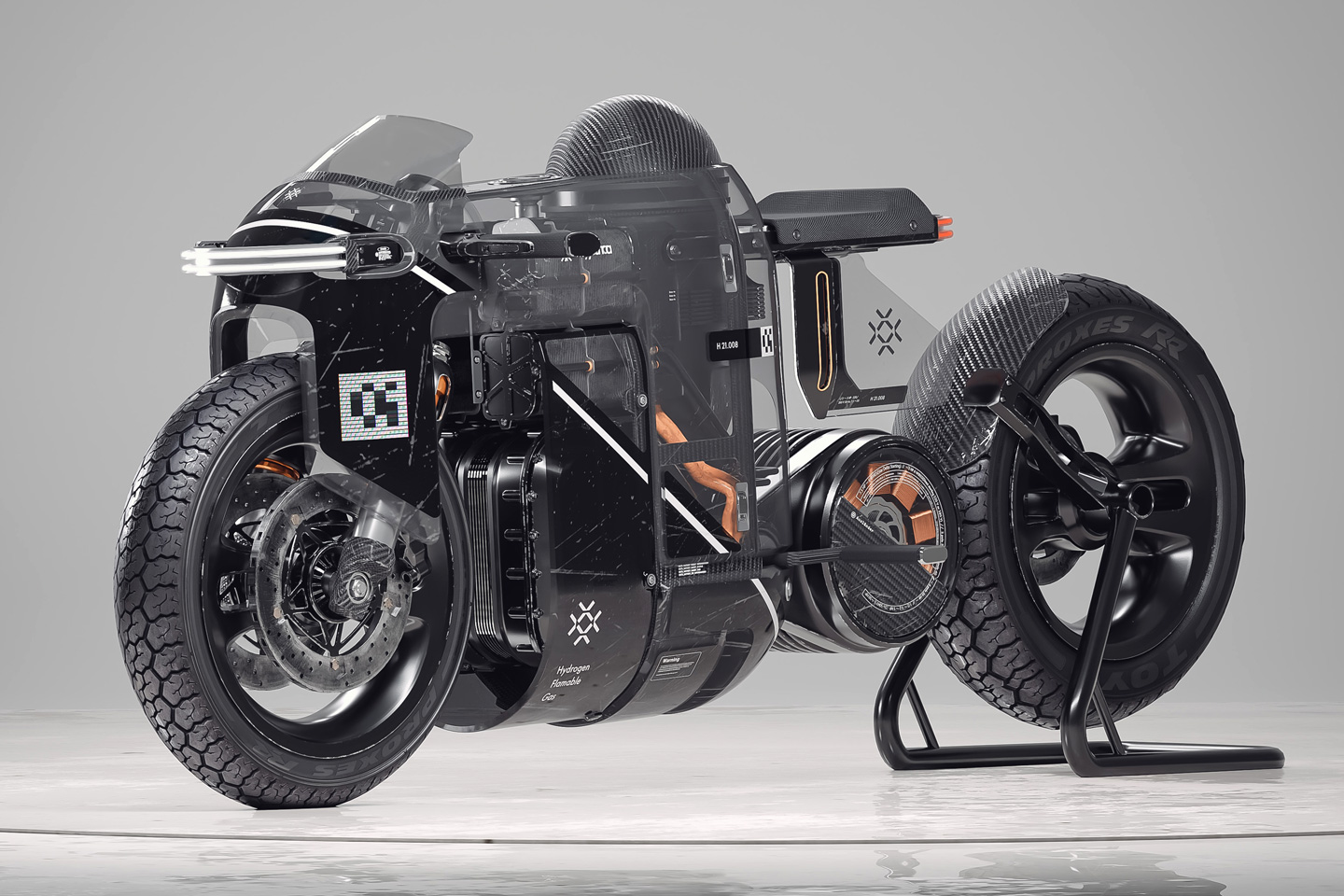
Although the technology itself is rather fascinating, what’s more appealing here is the designers’ treatment of the motorcycle, giving it an entirely distinct new form factor to hat-tip the fact that this isn’t your average gas-powered vehicle. The Hydra is undeniably cyberpunk, with the clever use of straight lines to define forms and curves only to round off edges. The bike isn’t lithe or aerodynamic, but rather has an almost robotic appeal with its affinity for straight lines and simple geometric shapes. Hydra’s front is dominated by a large block which serves as the hydrogen fuel cell. The engine sits right below the cantilever seat, powering the rear wheel directly.
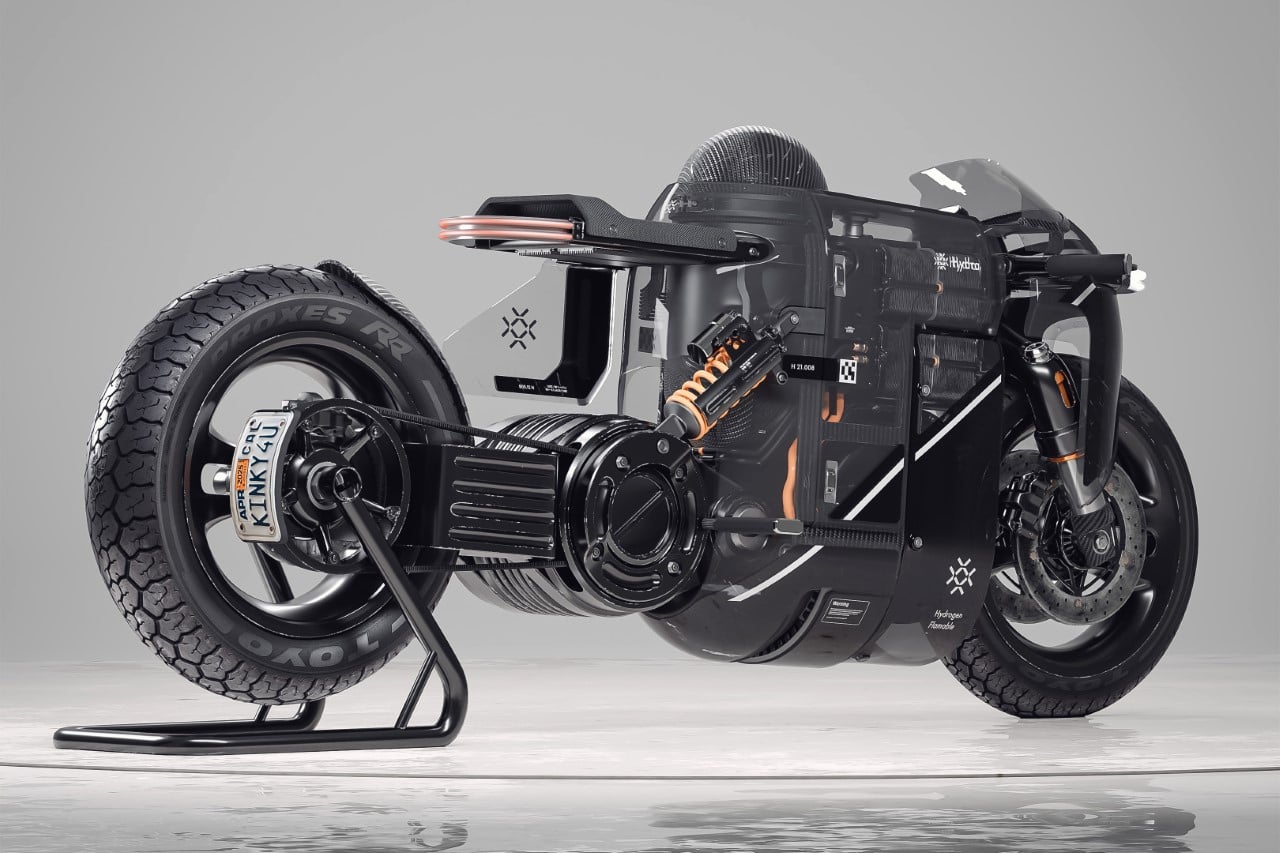
The Hydra sports a beautiful translucent fairing, which reveals the complexities inside and provides the perfect contrast against the other carbon fiber components used around the e-bike.

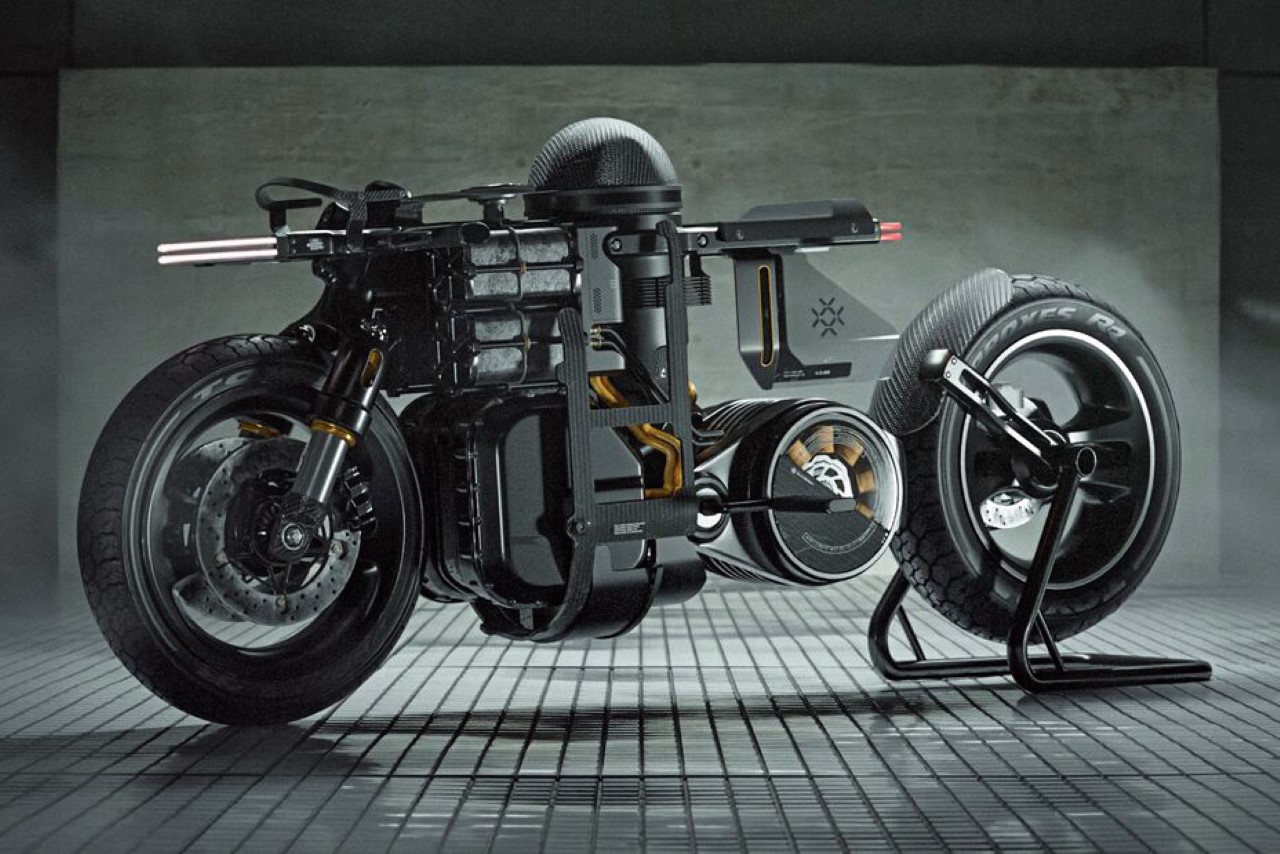
A look at the Hydra under its fairing gives a better idea of its underlying tech. Even for a motorcycle that’s entirely conceptual at the moment, the level of detail and planning gone into executing this design is just staggering.

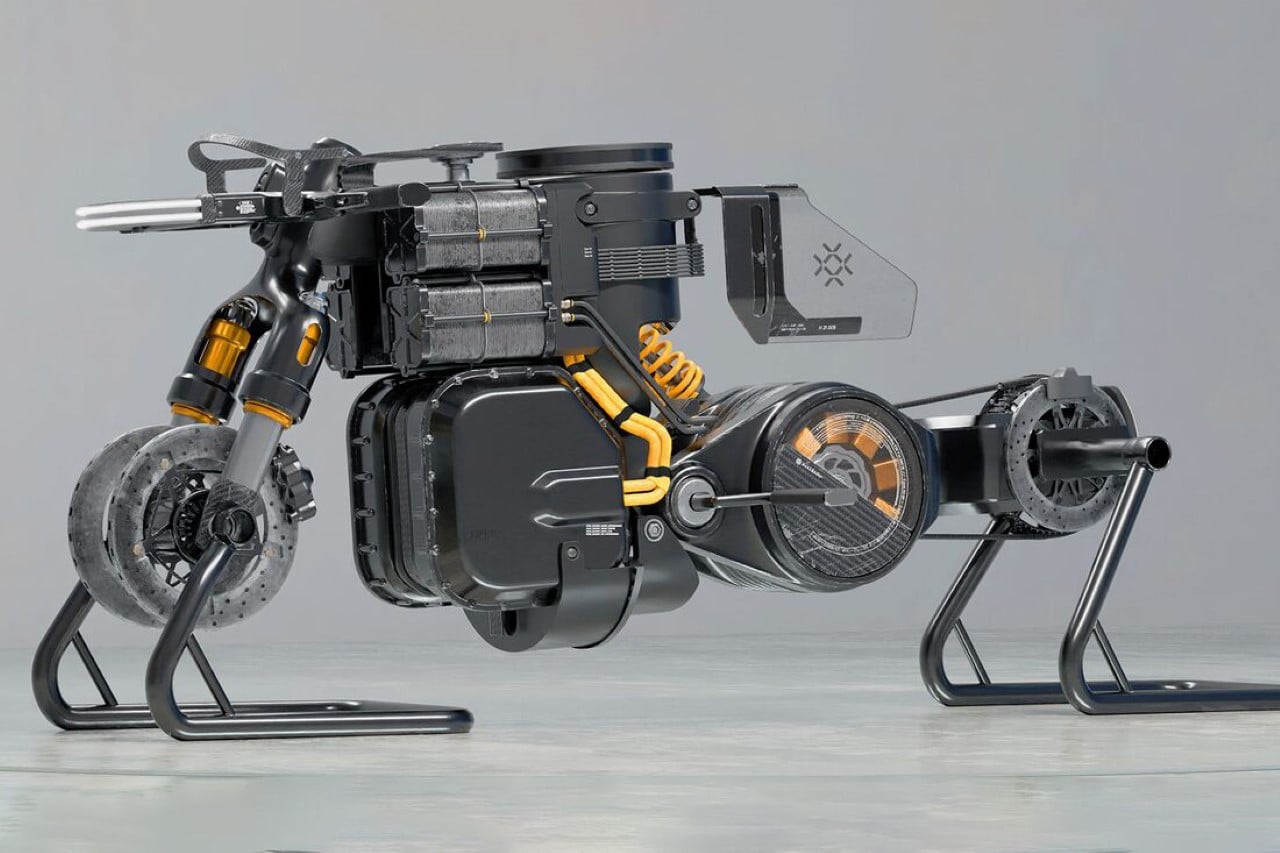
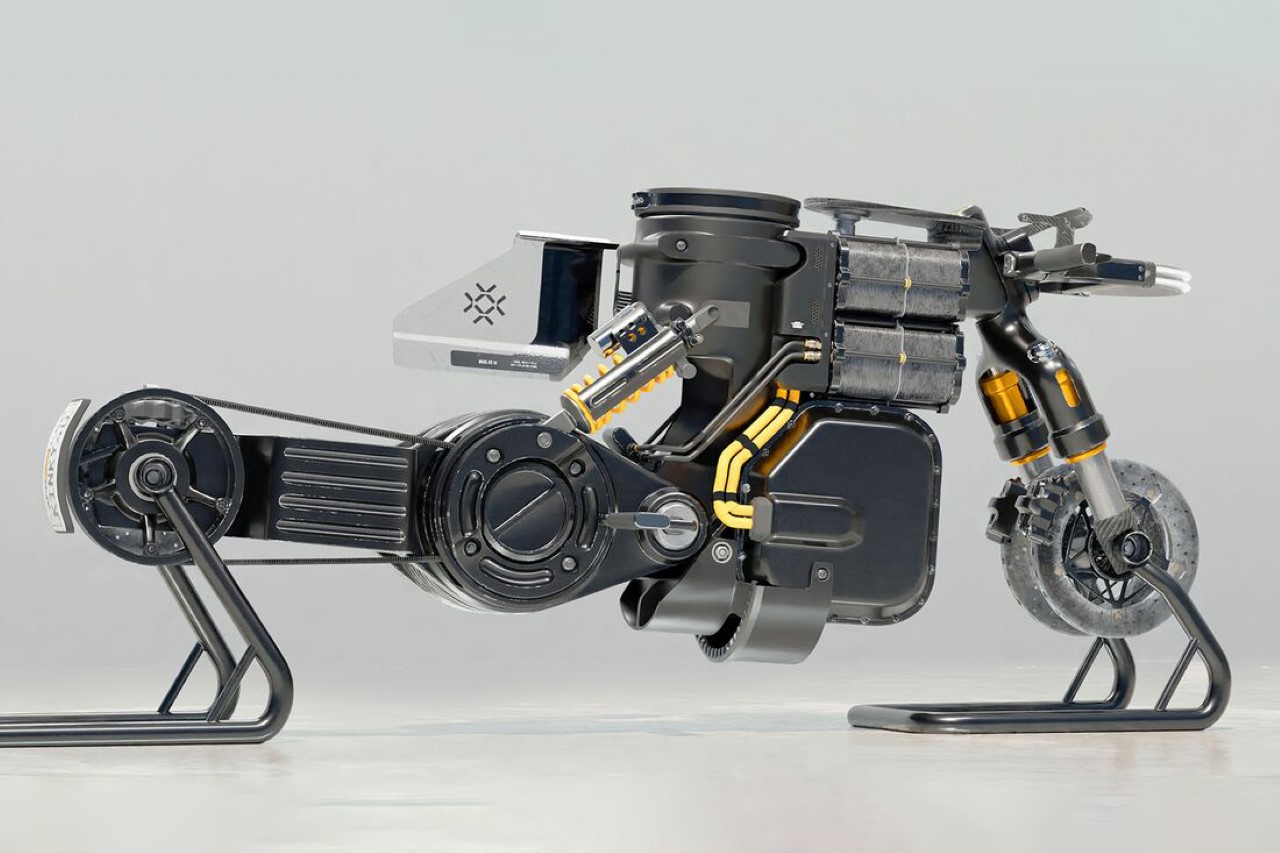
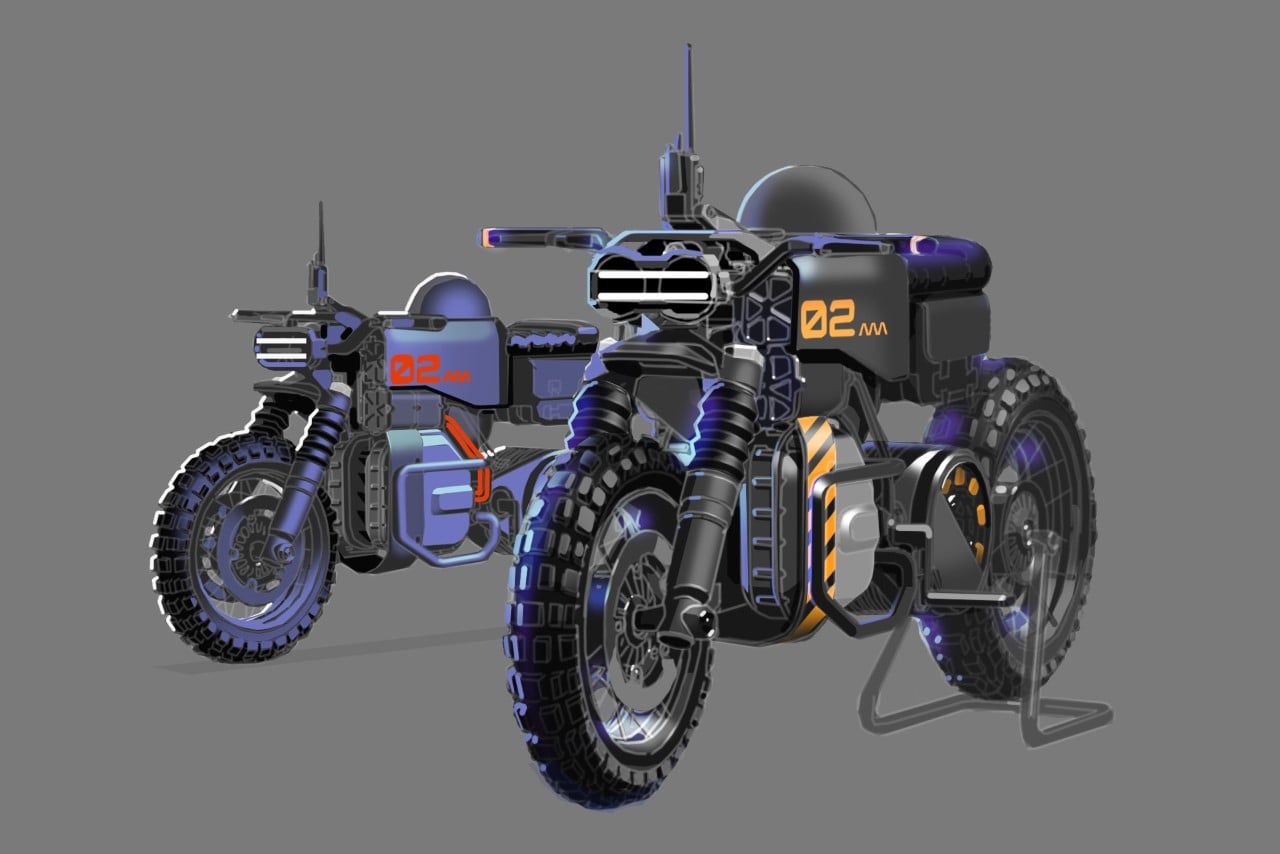
The post This futuristic cyberpunk motorbike uses a hydrogen fuel cell that provides 100% clean energy first appeared on Yanko Design.